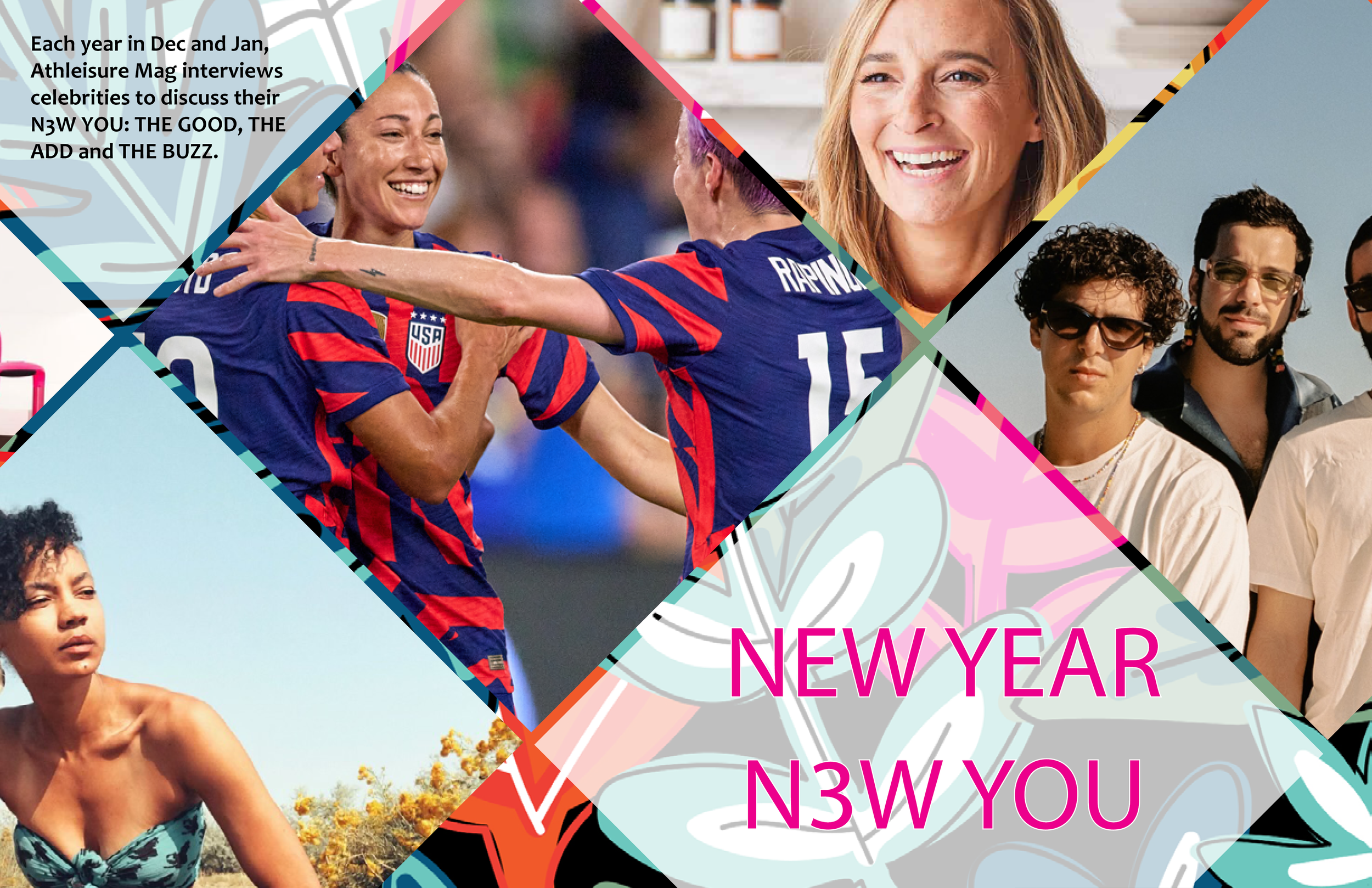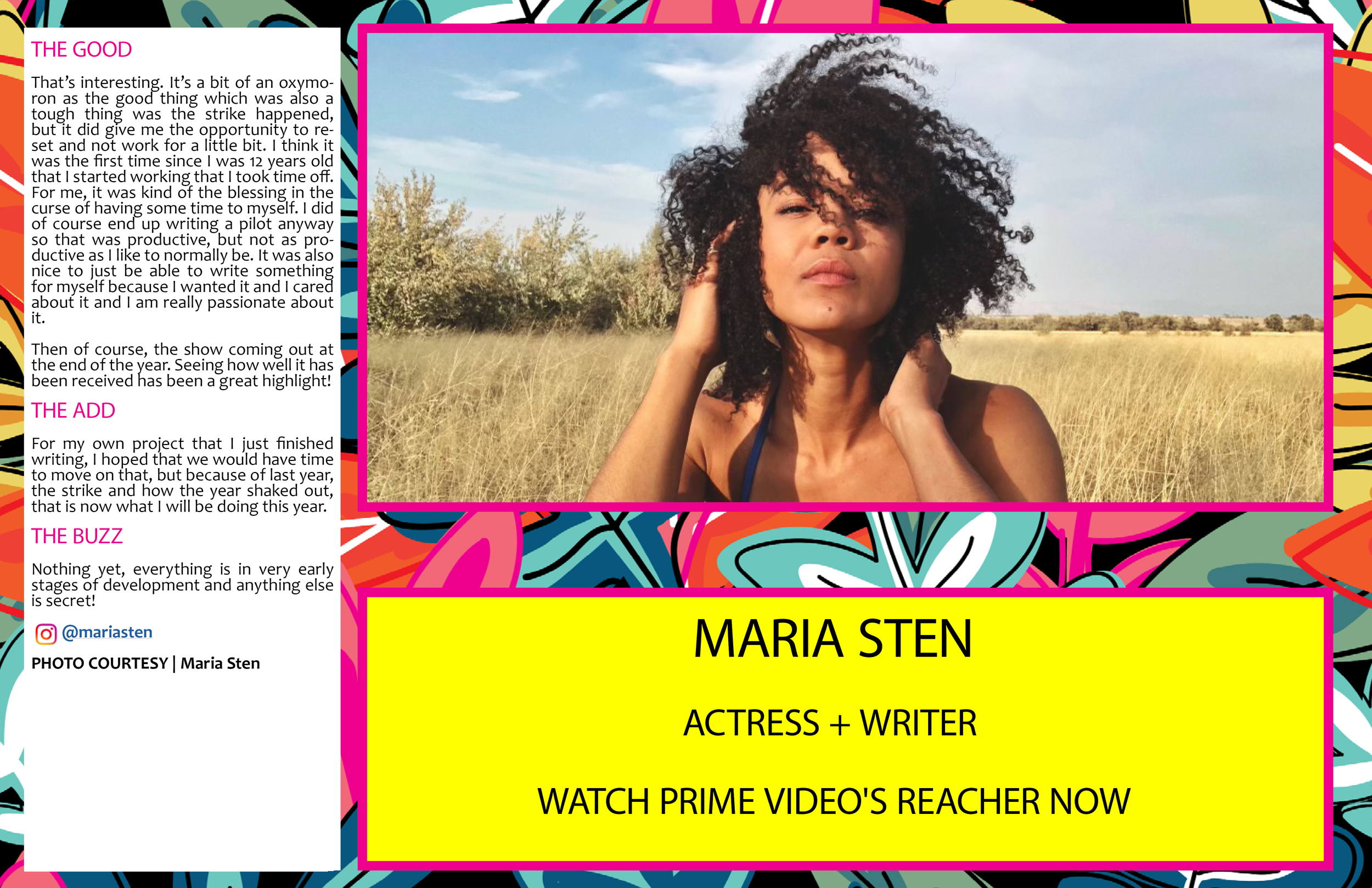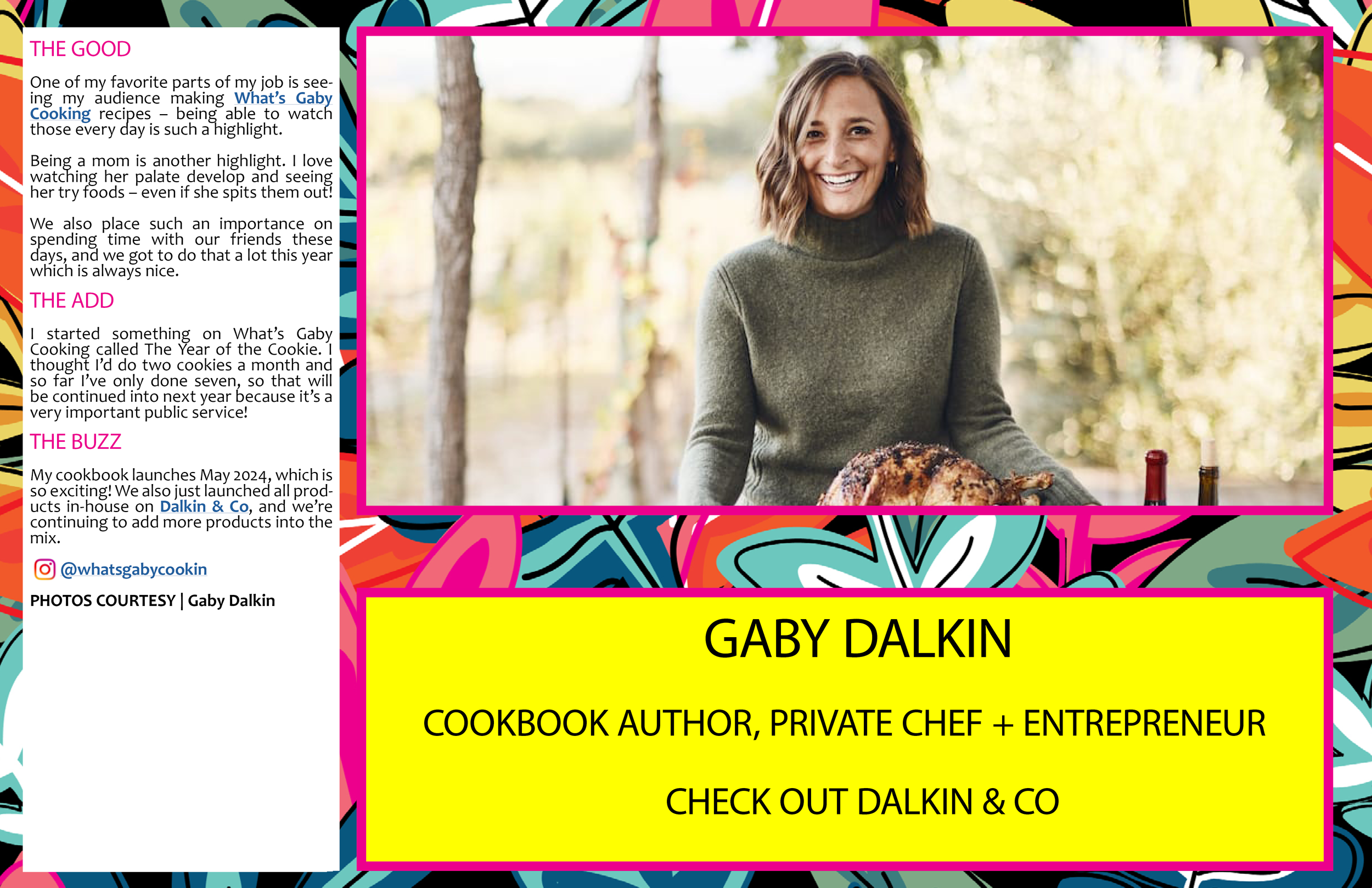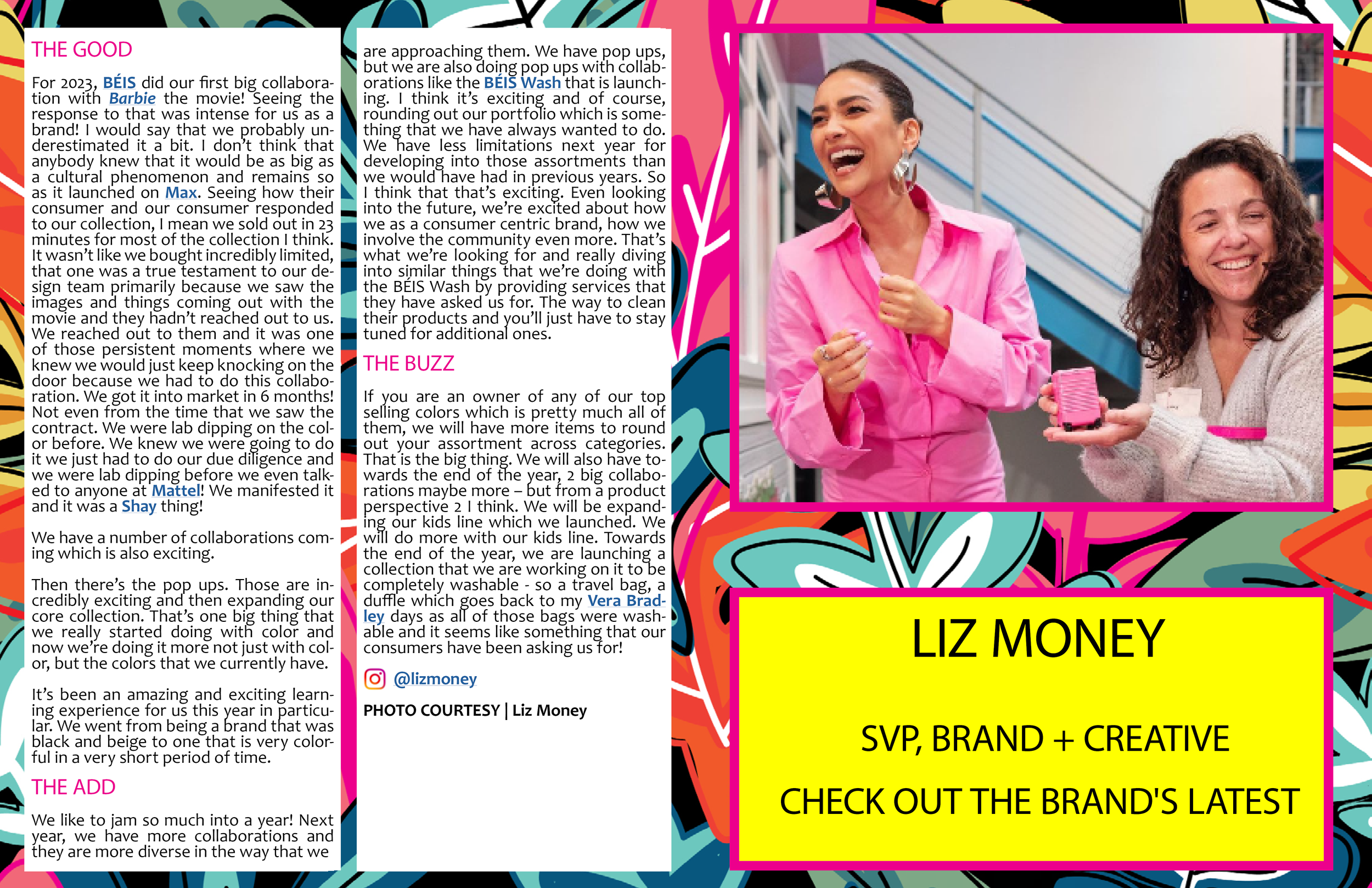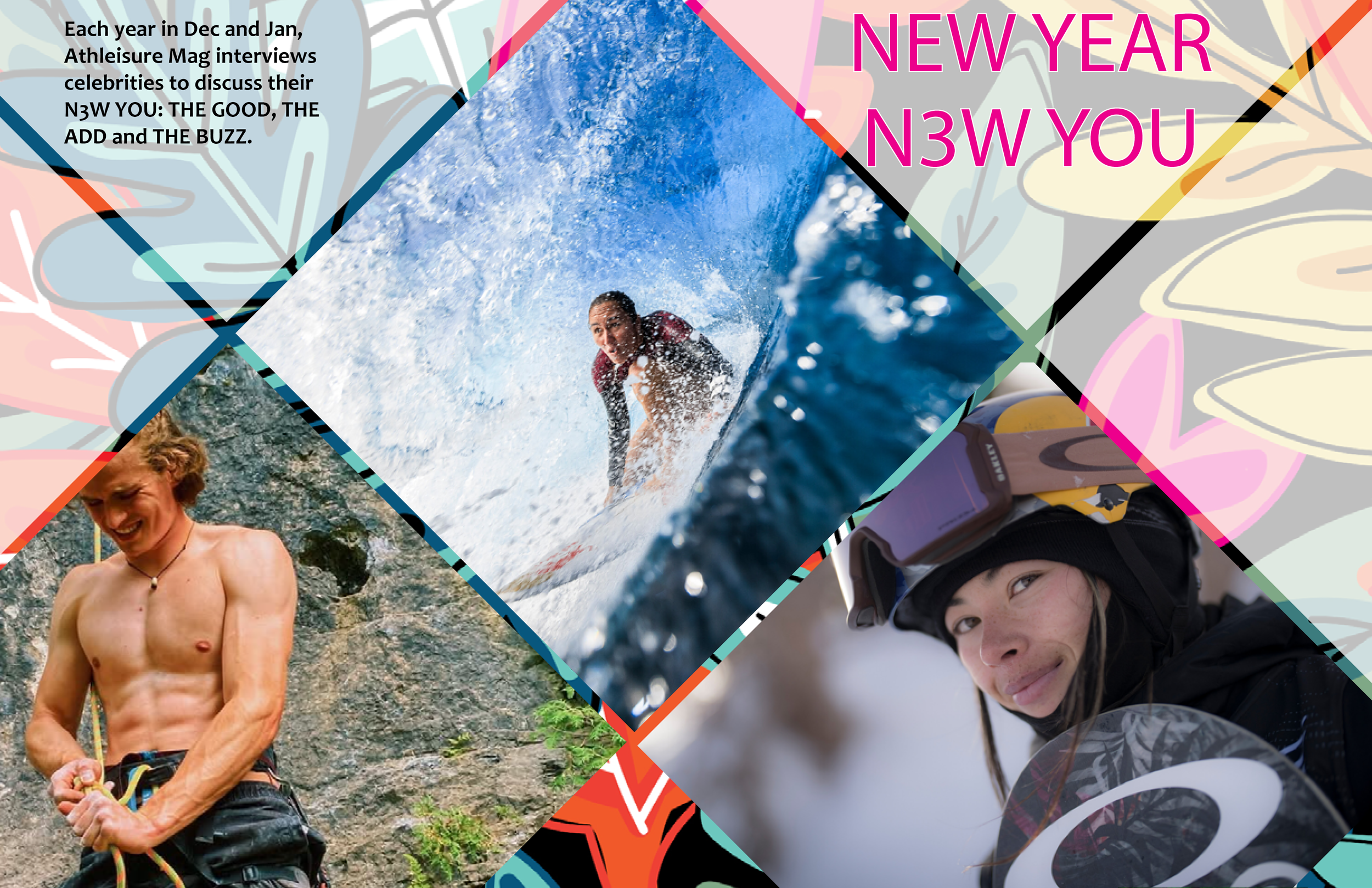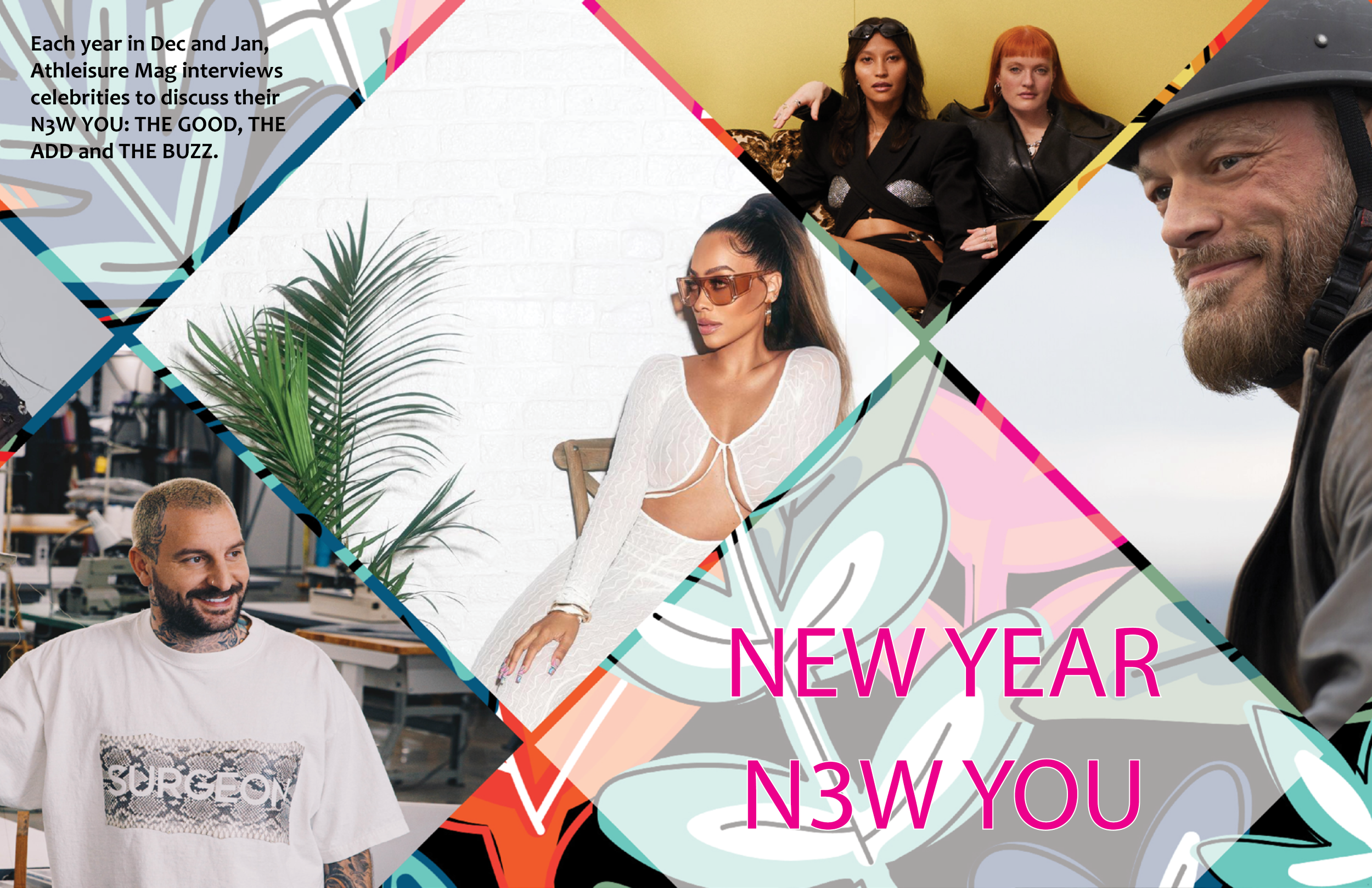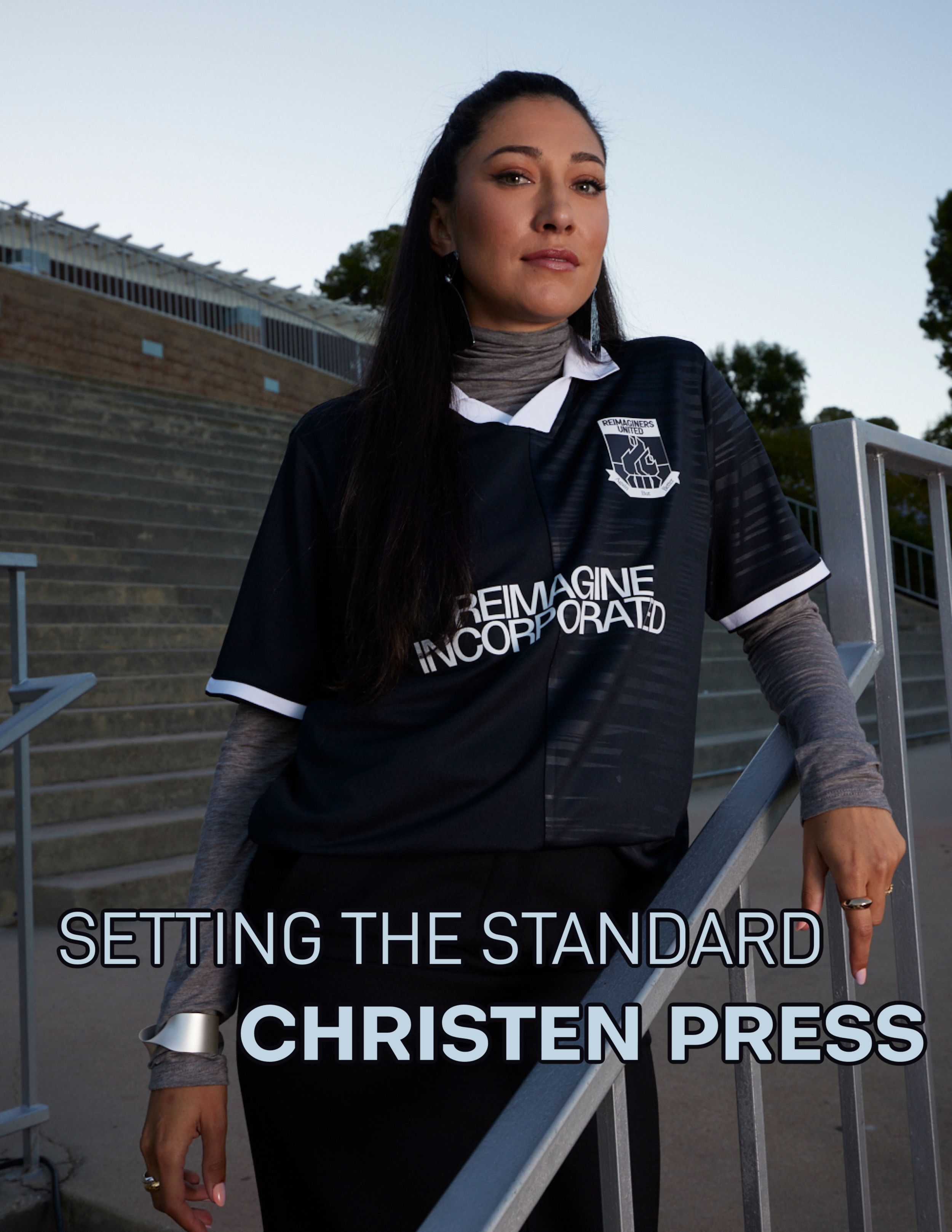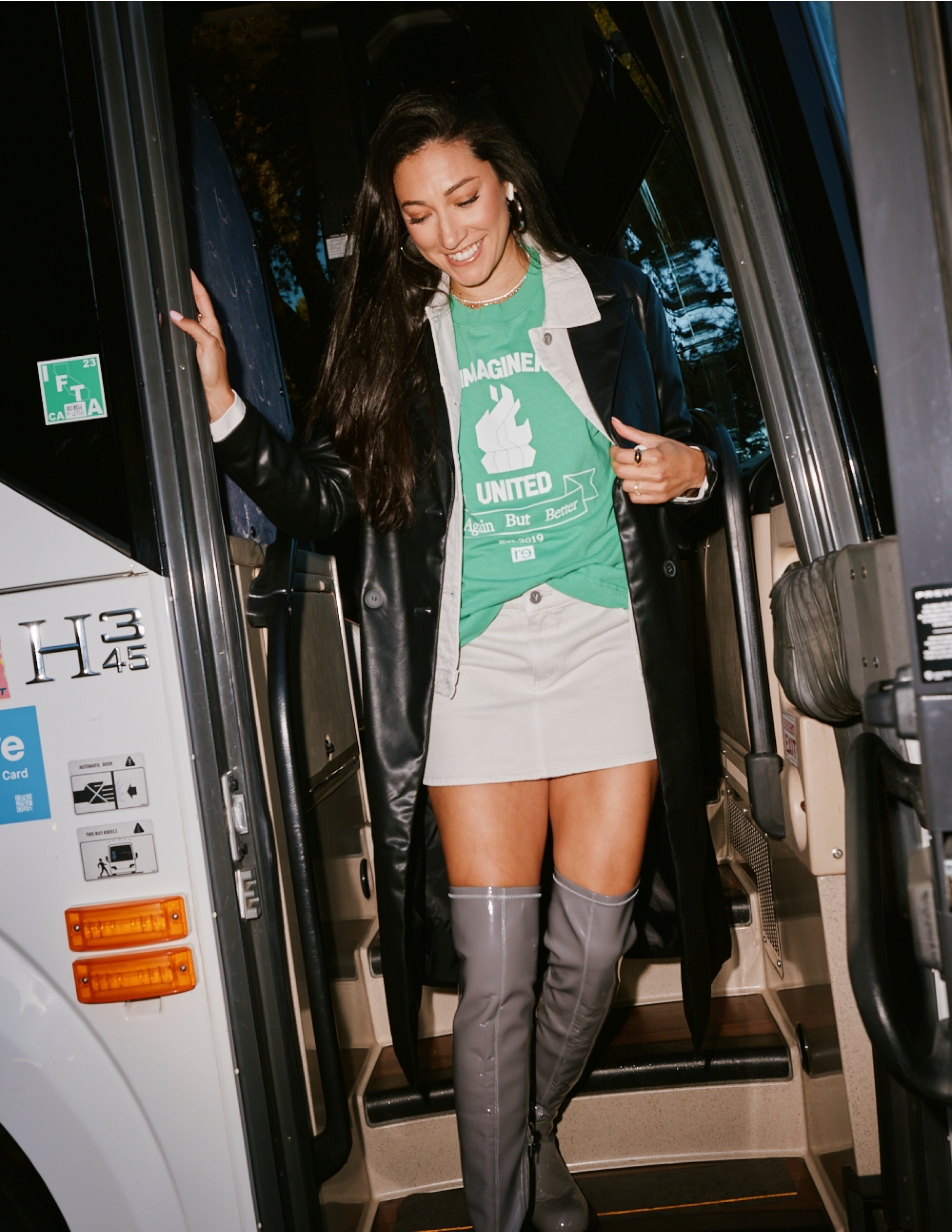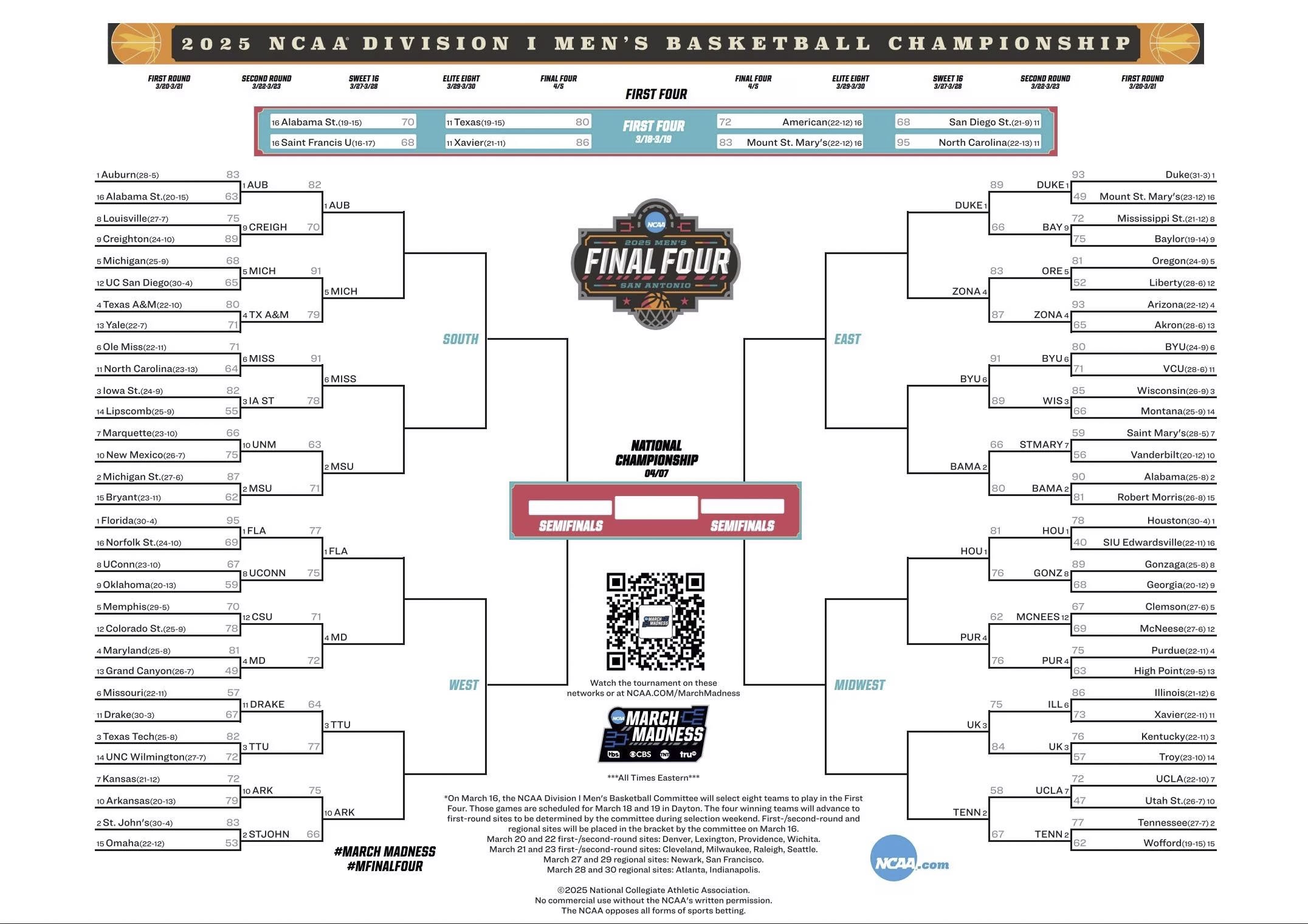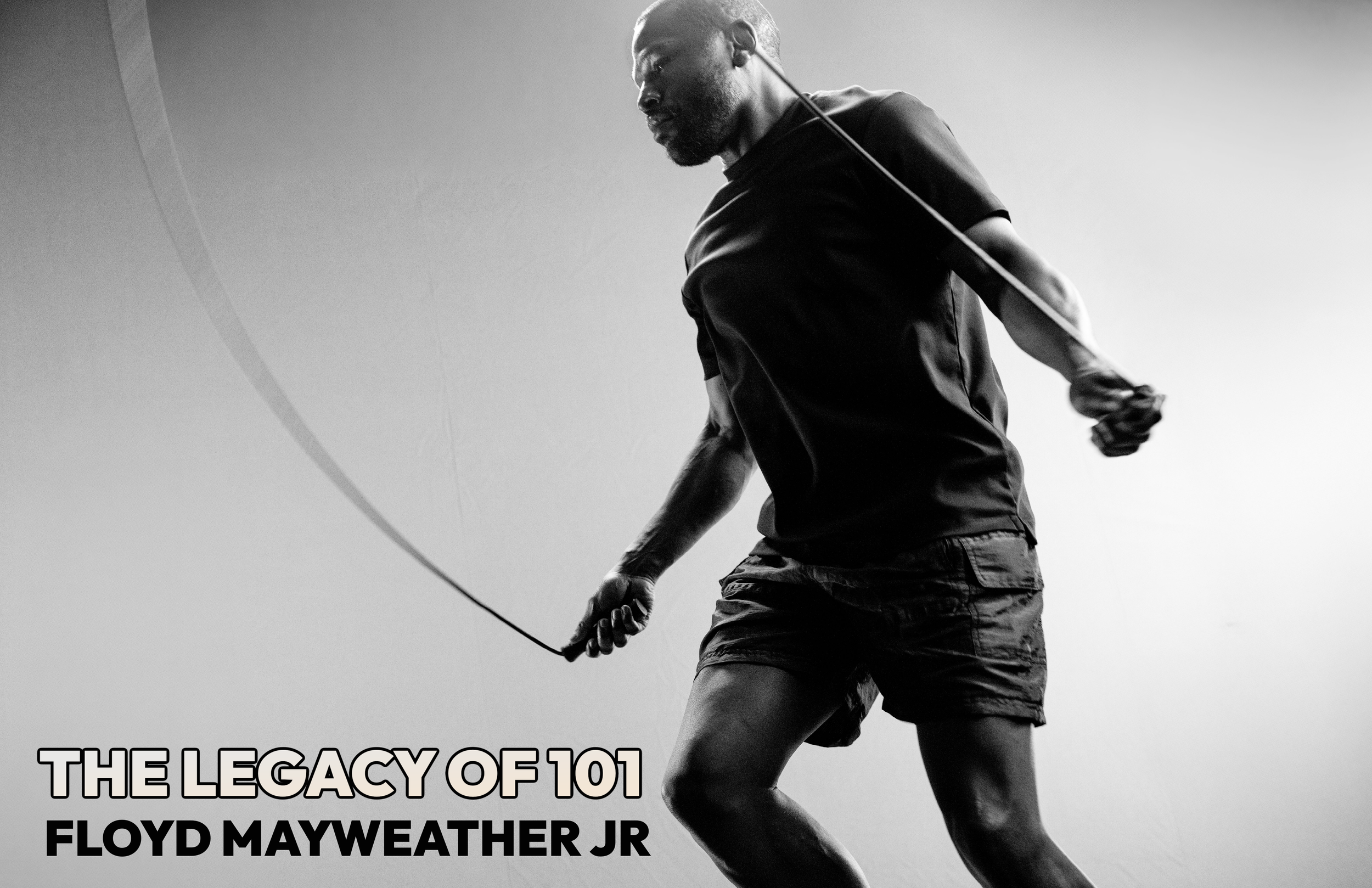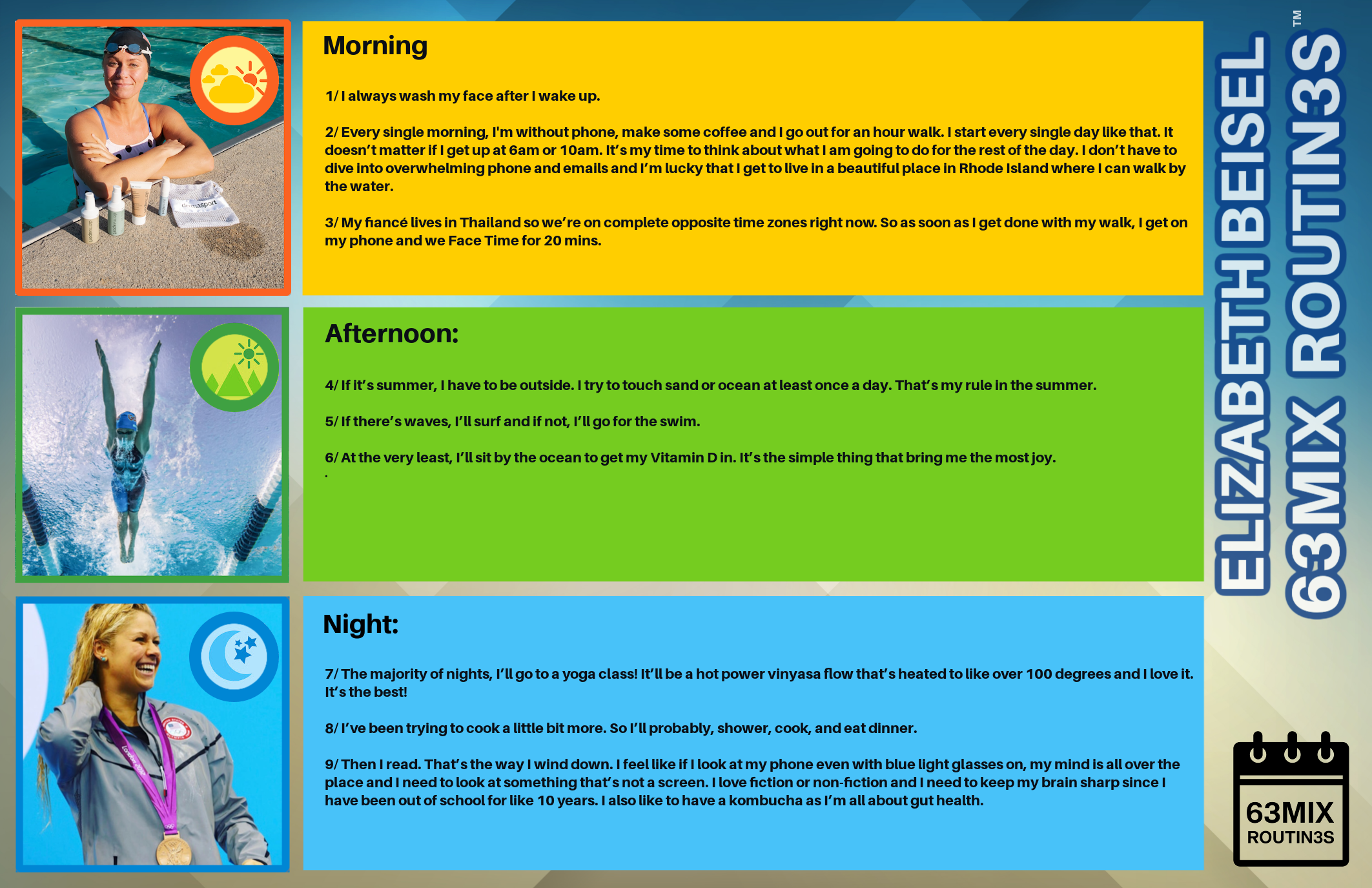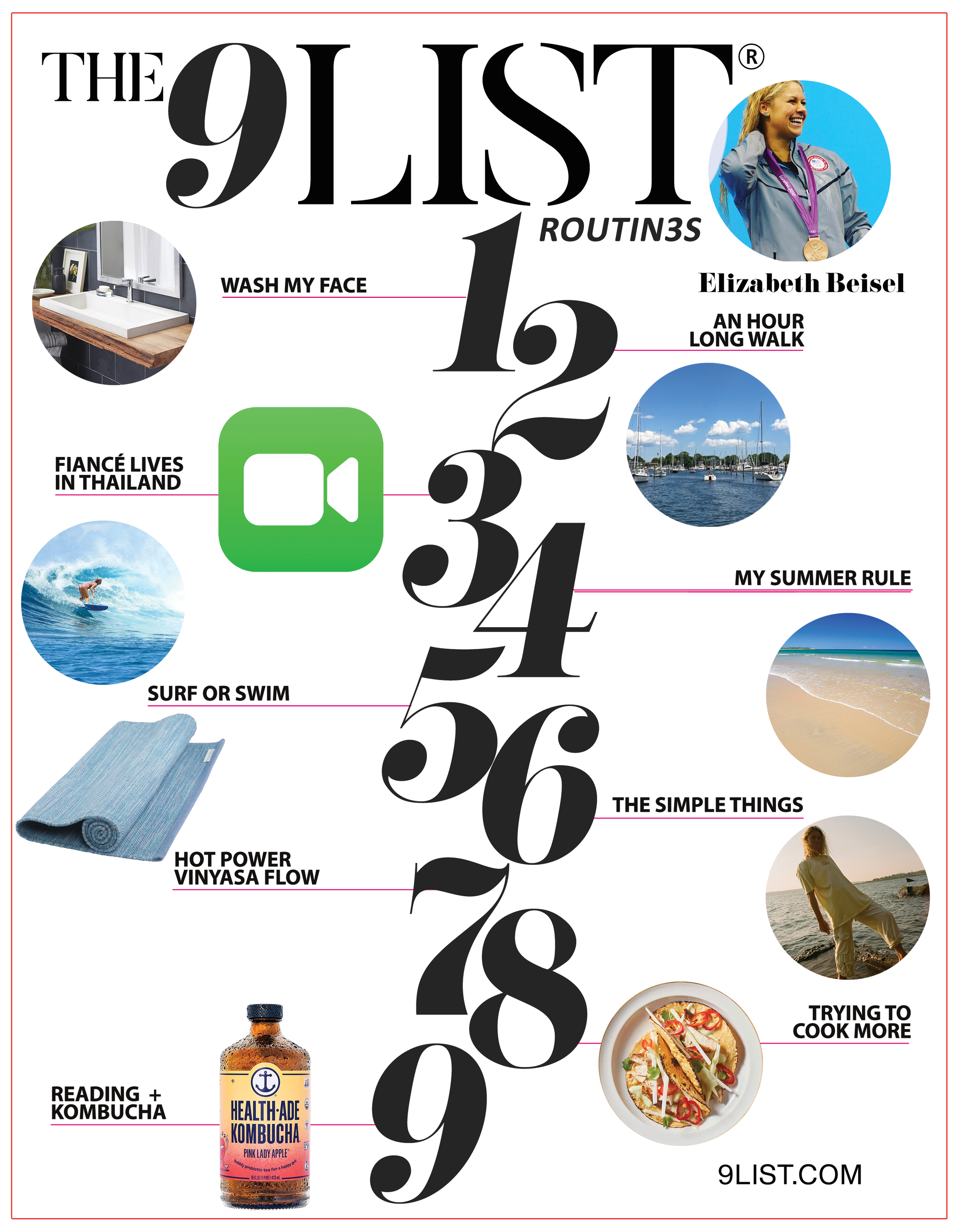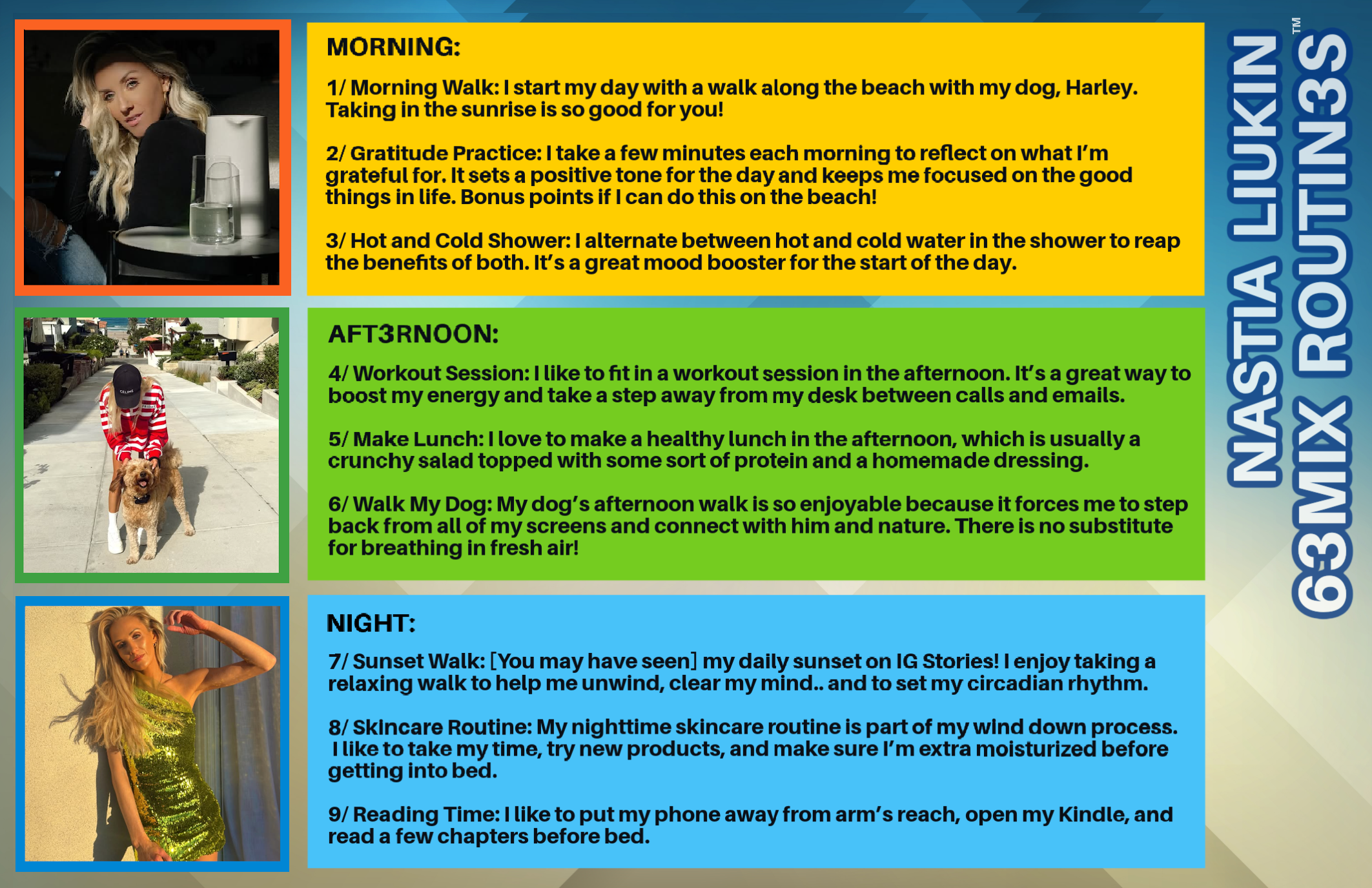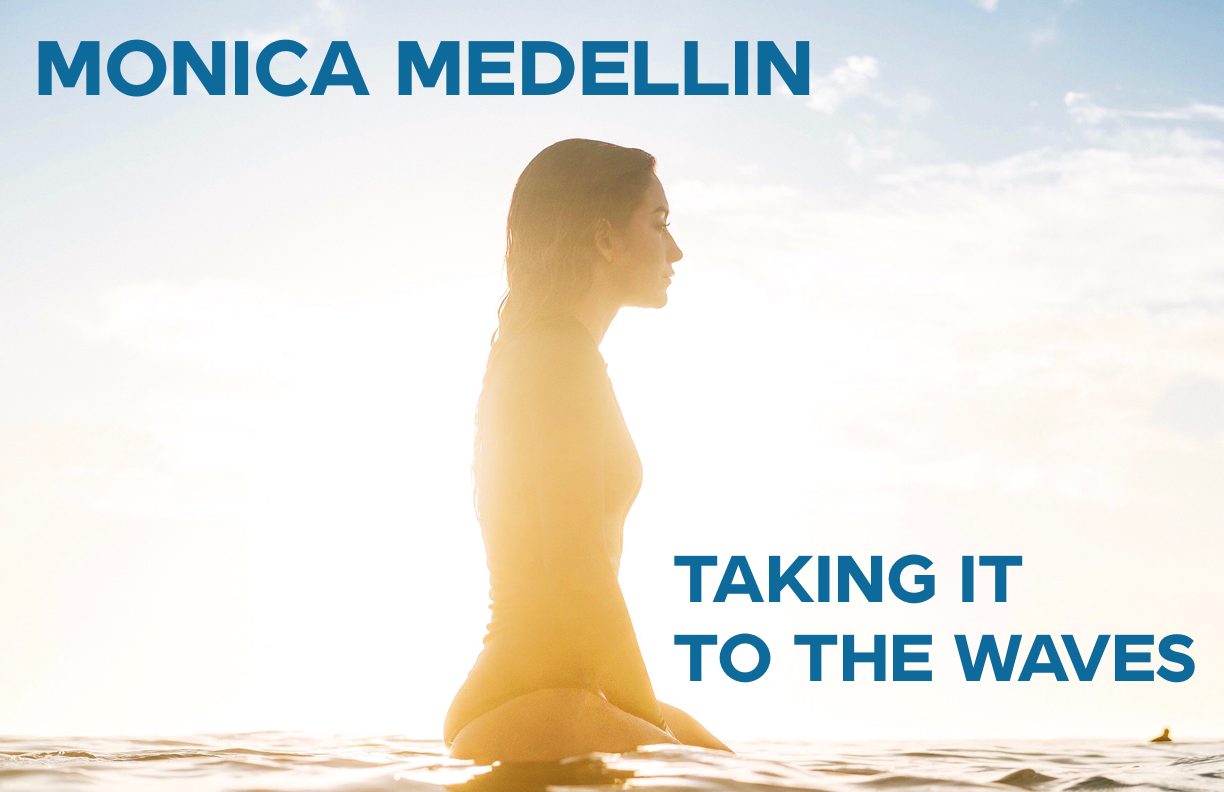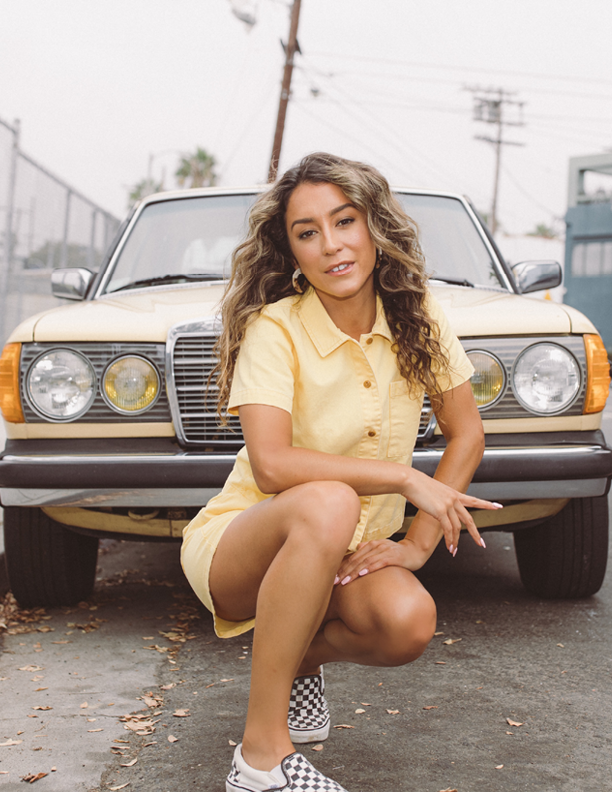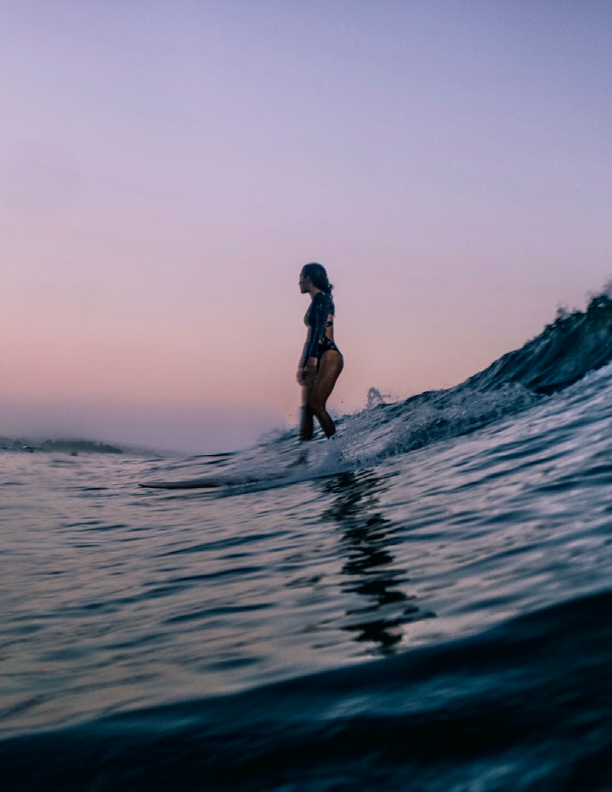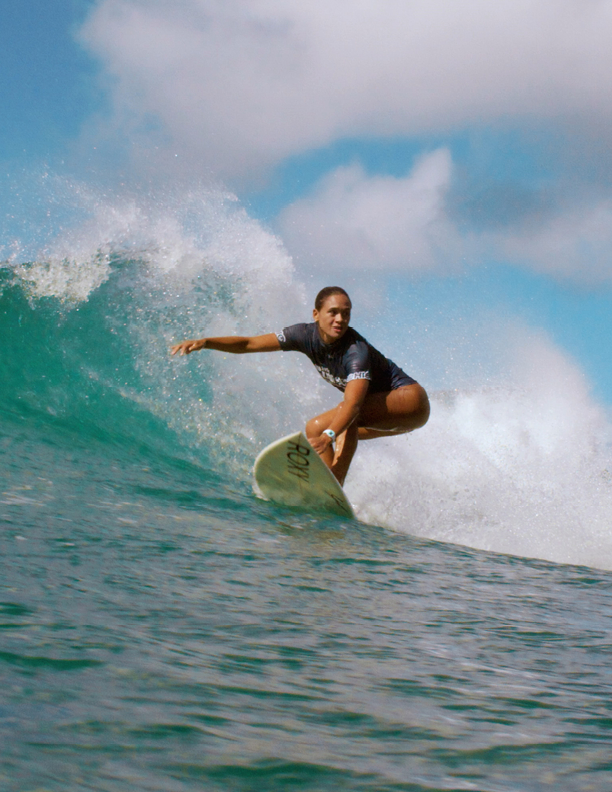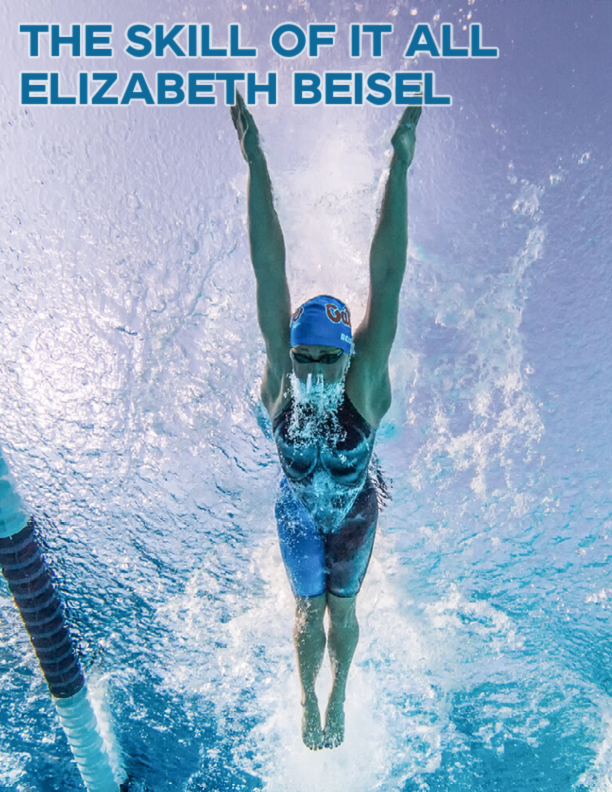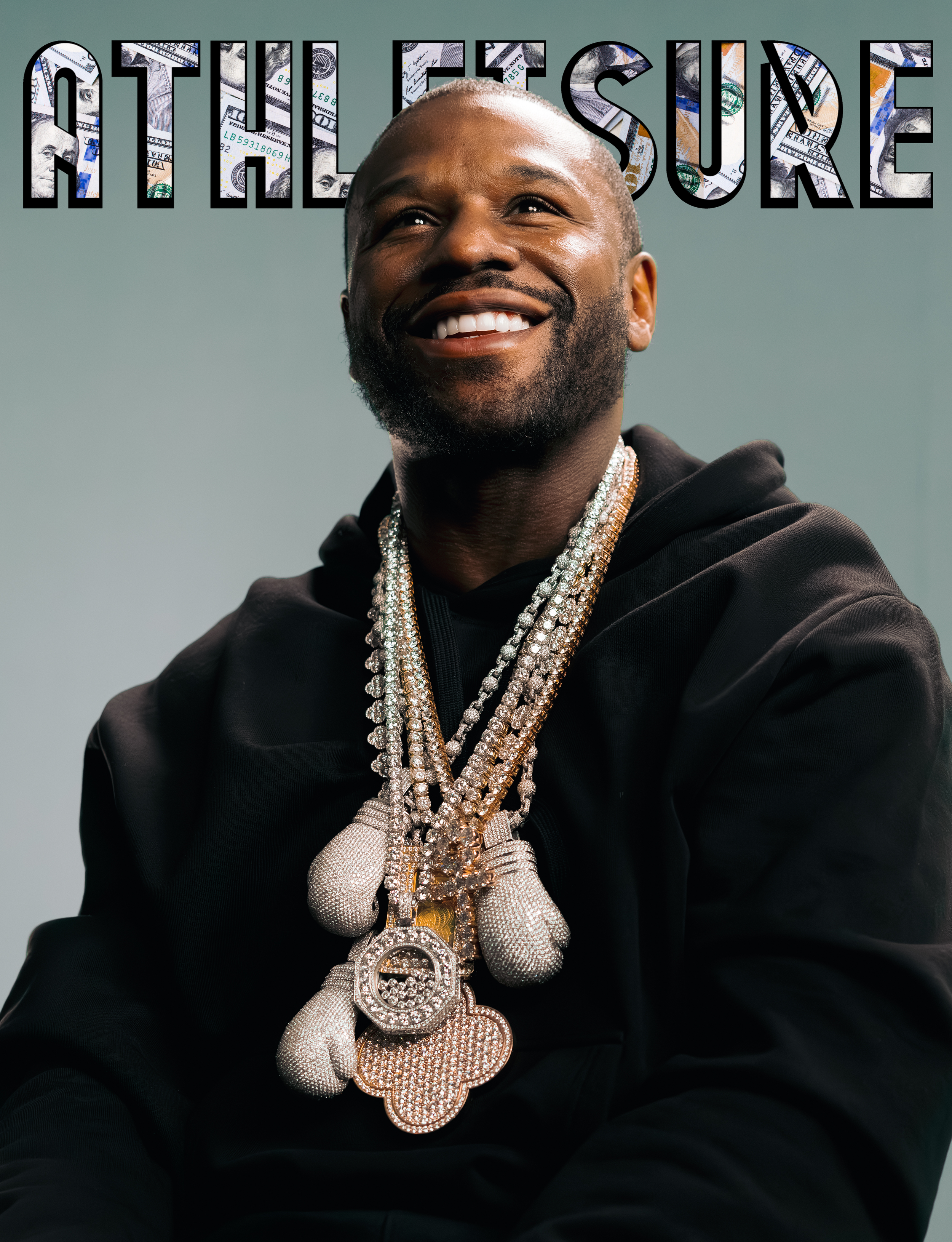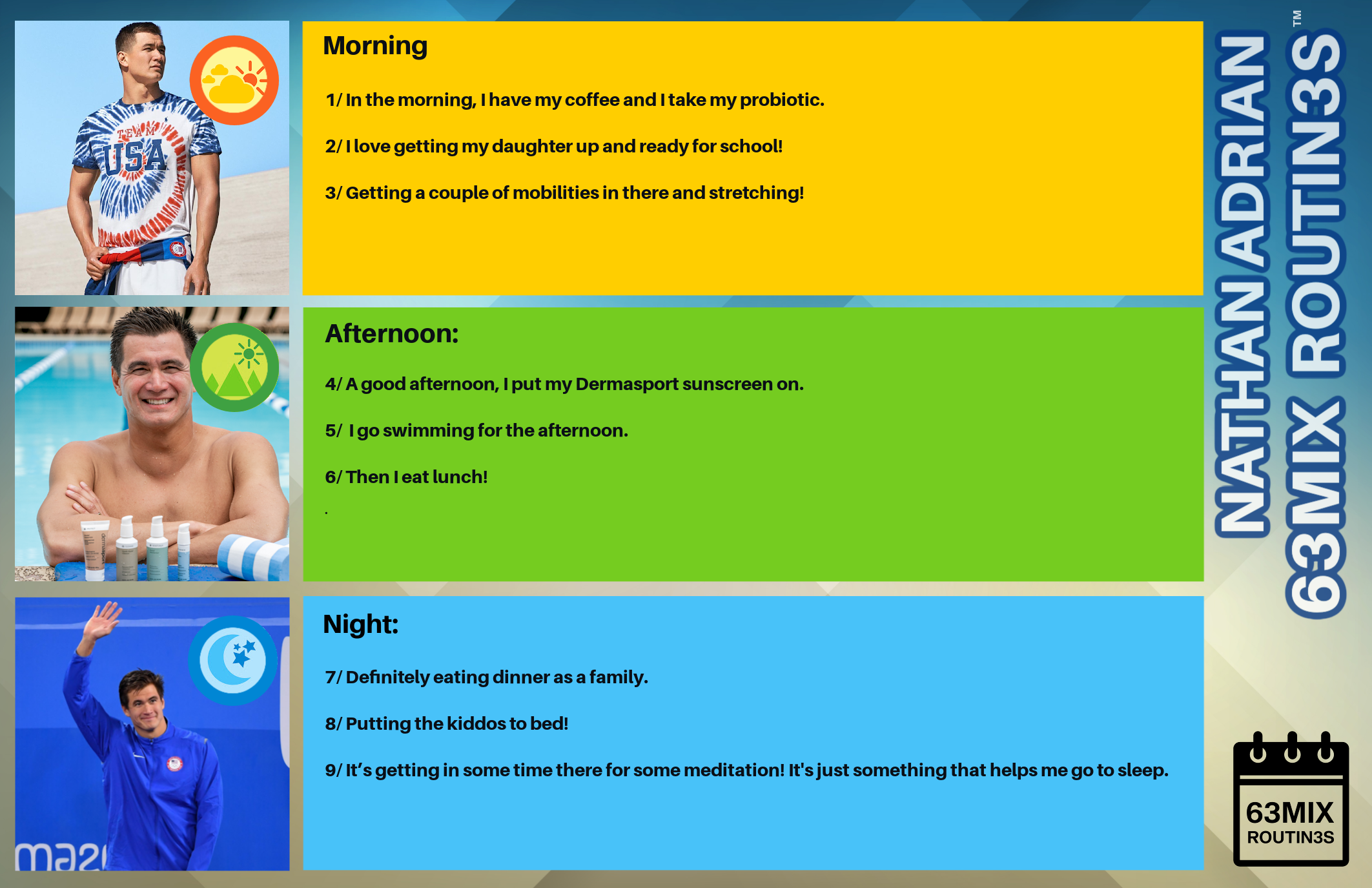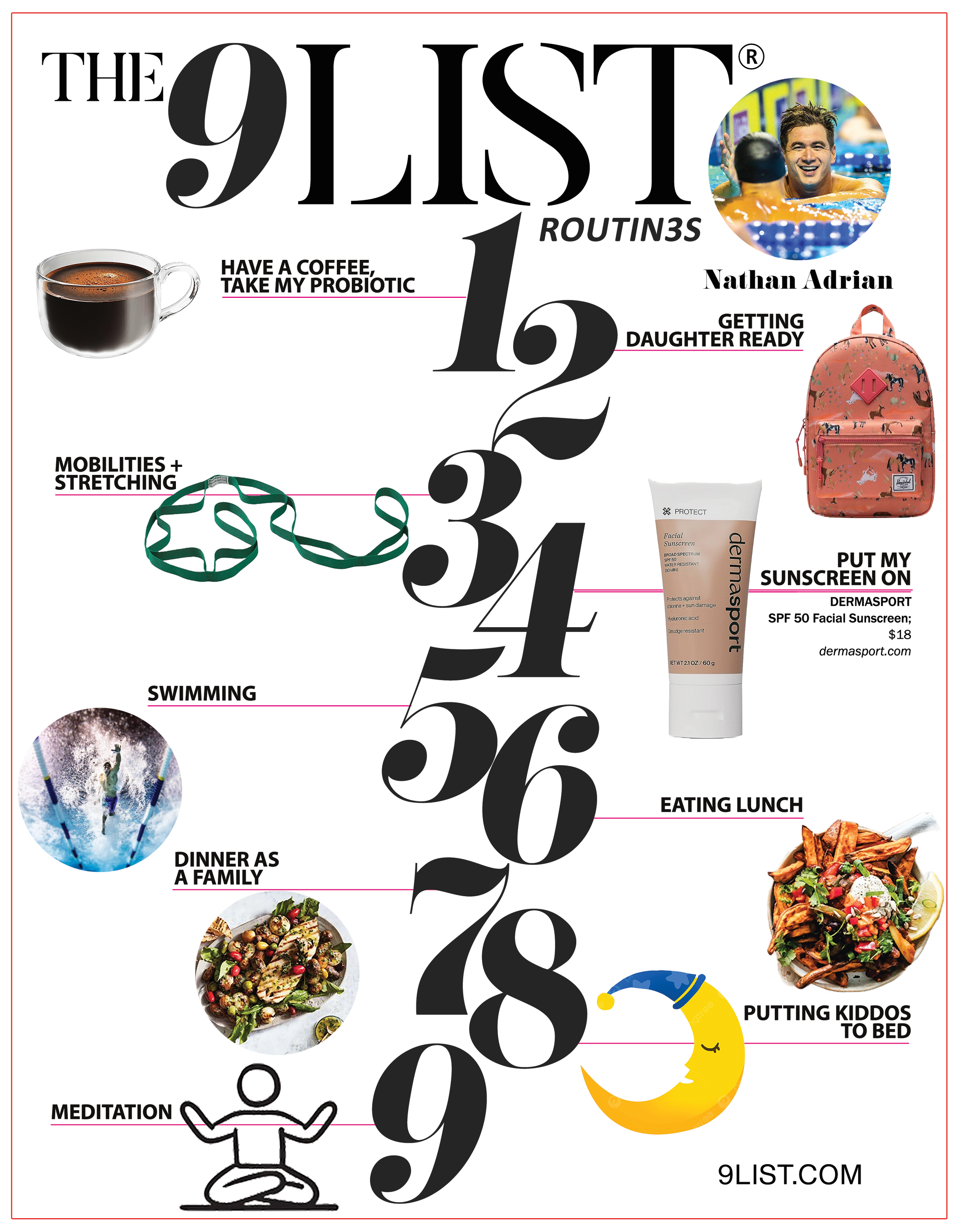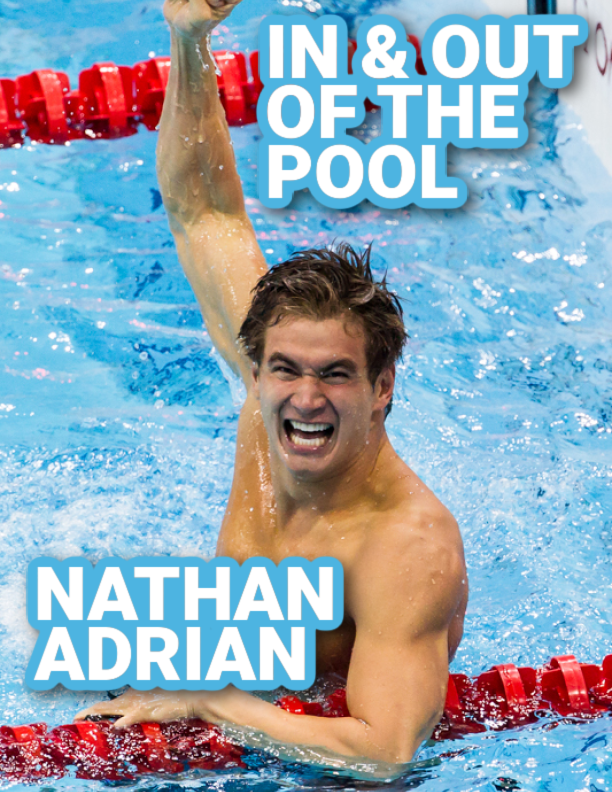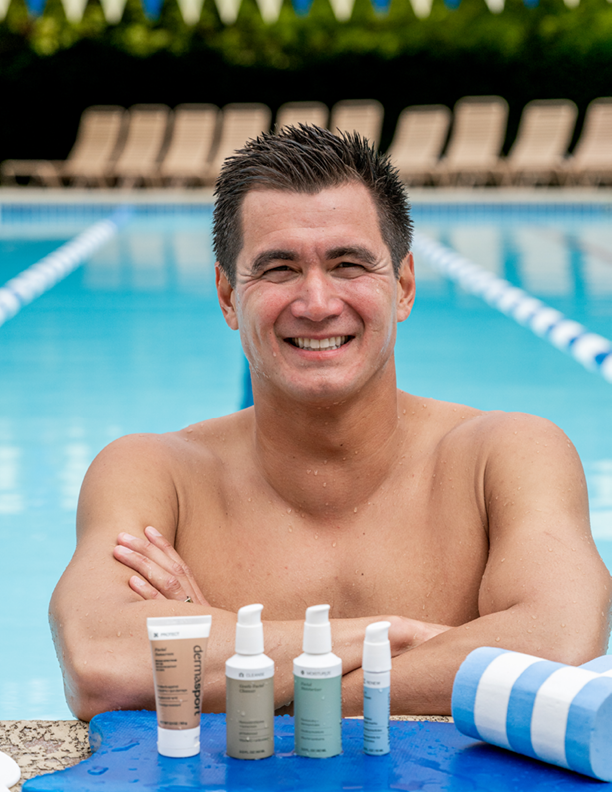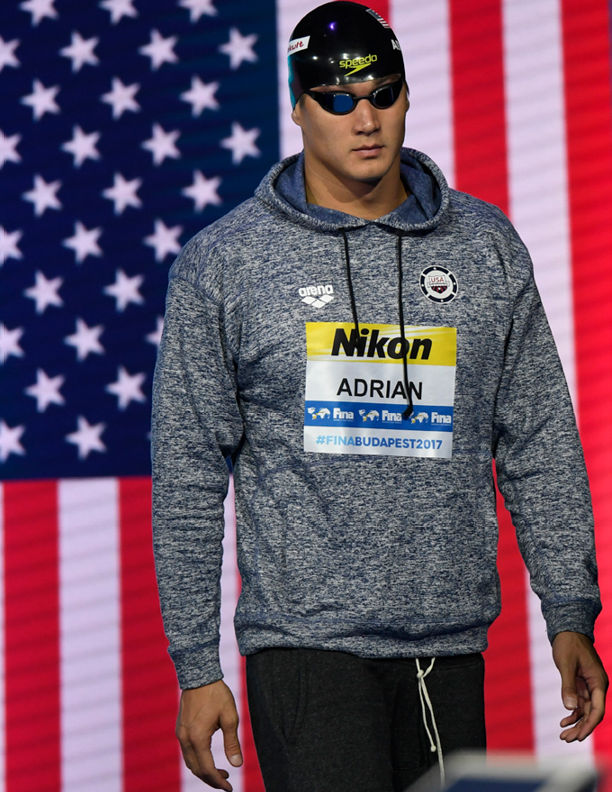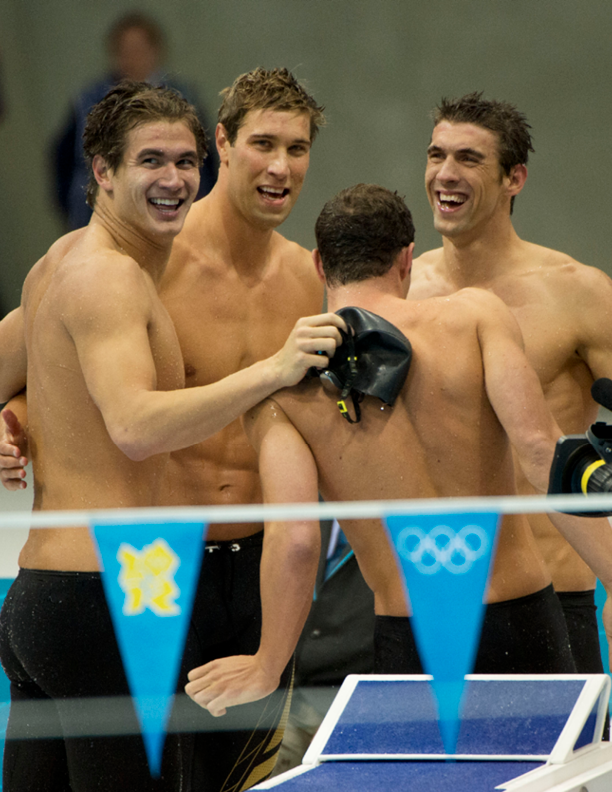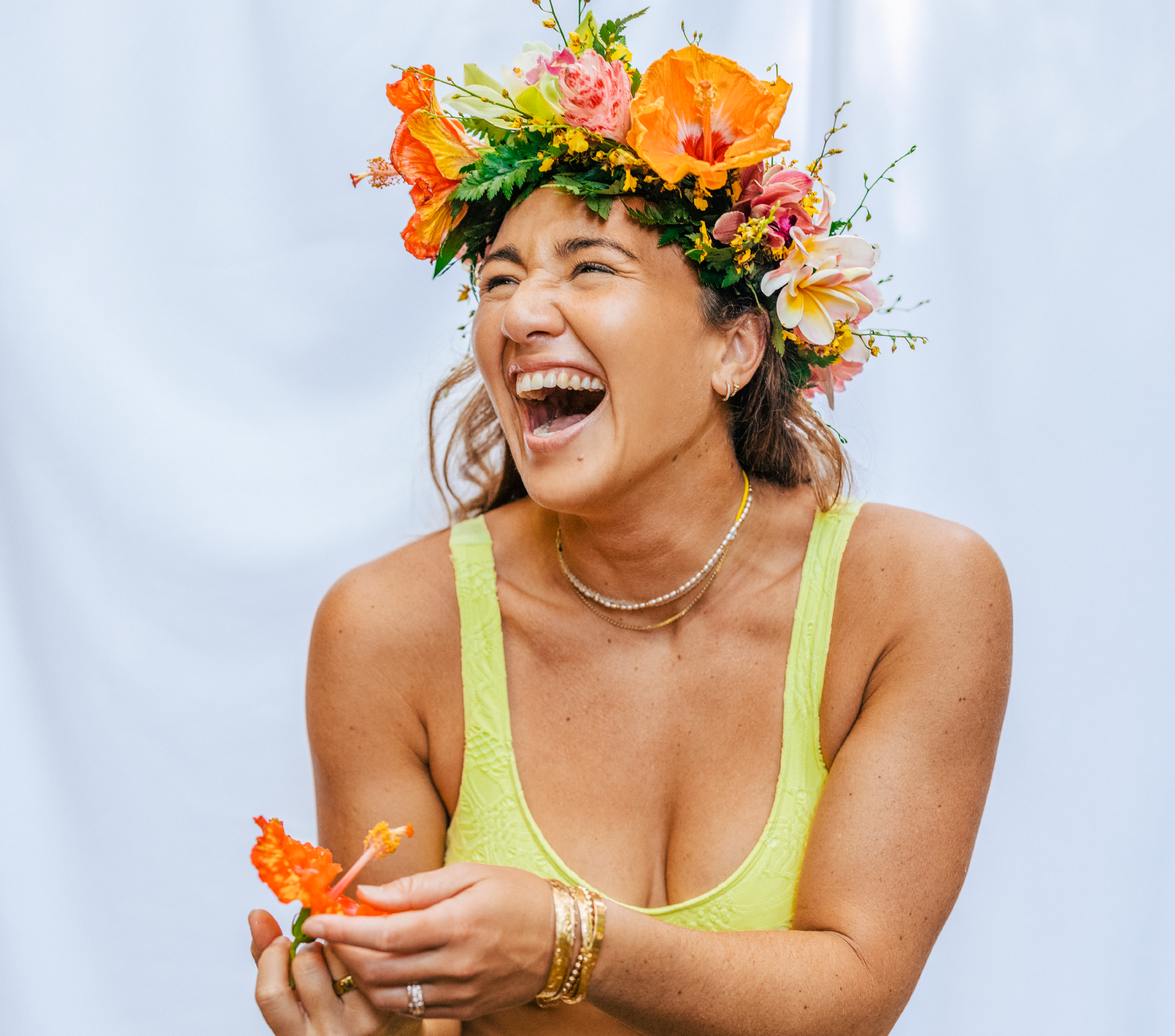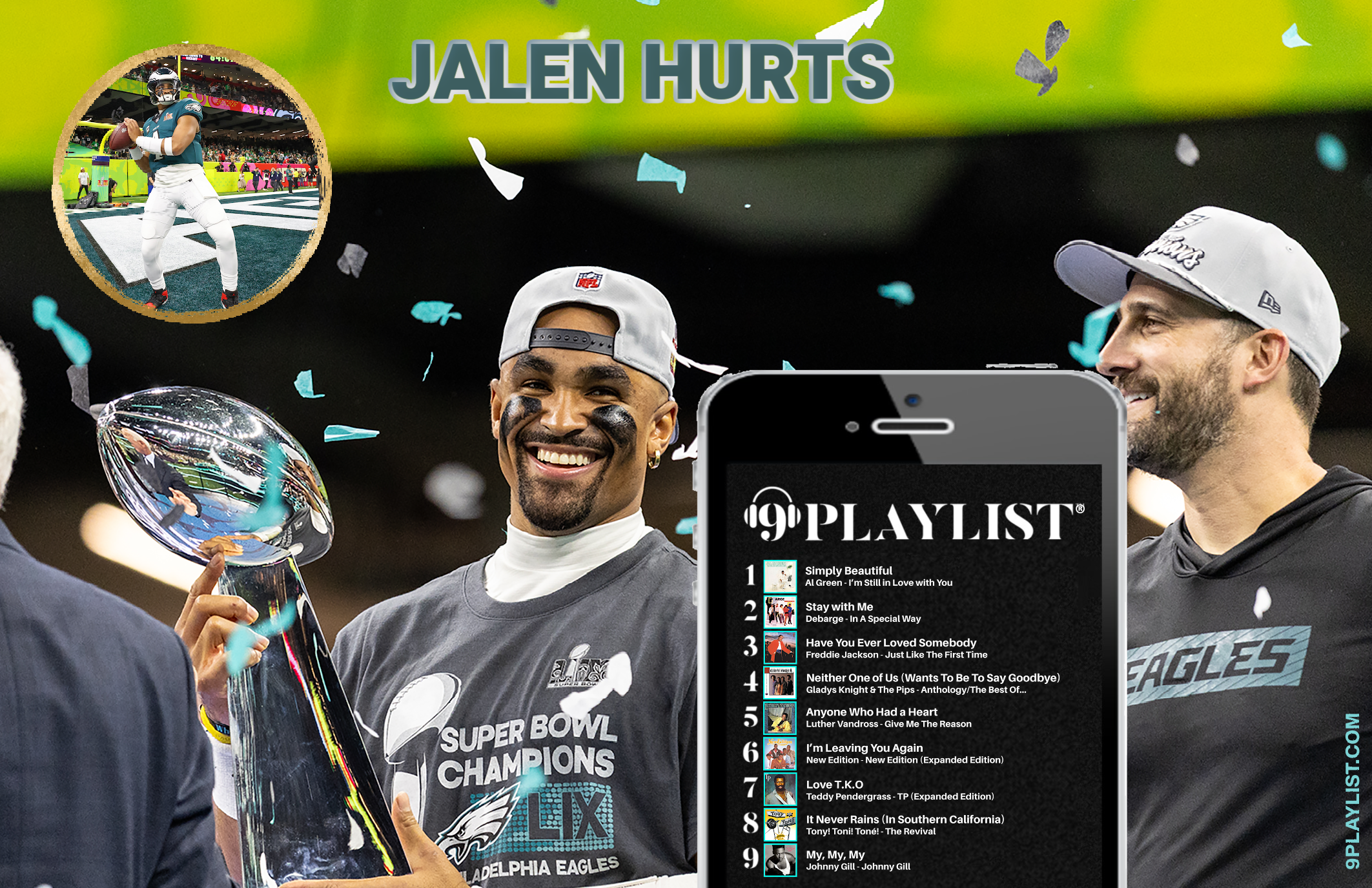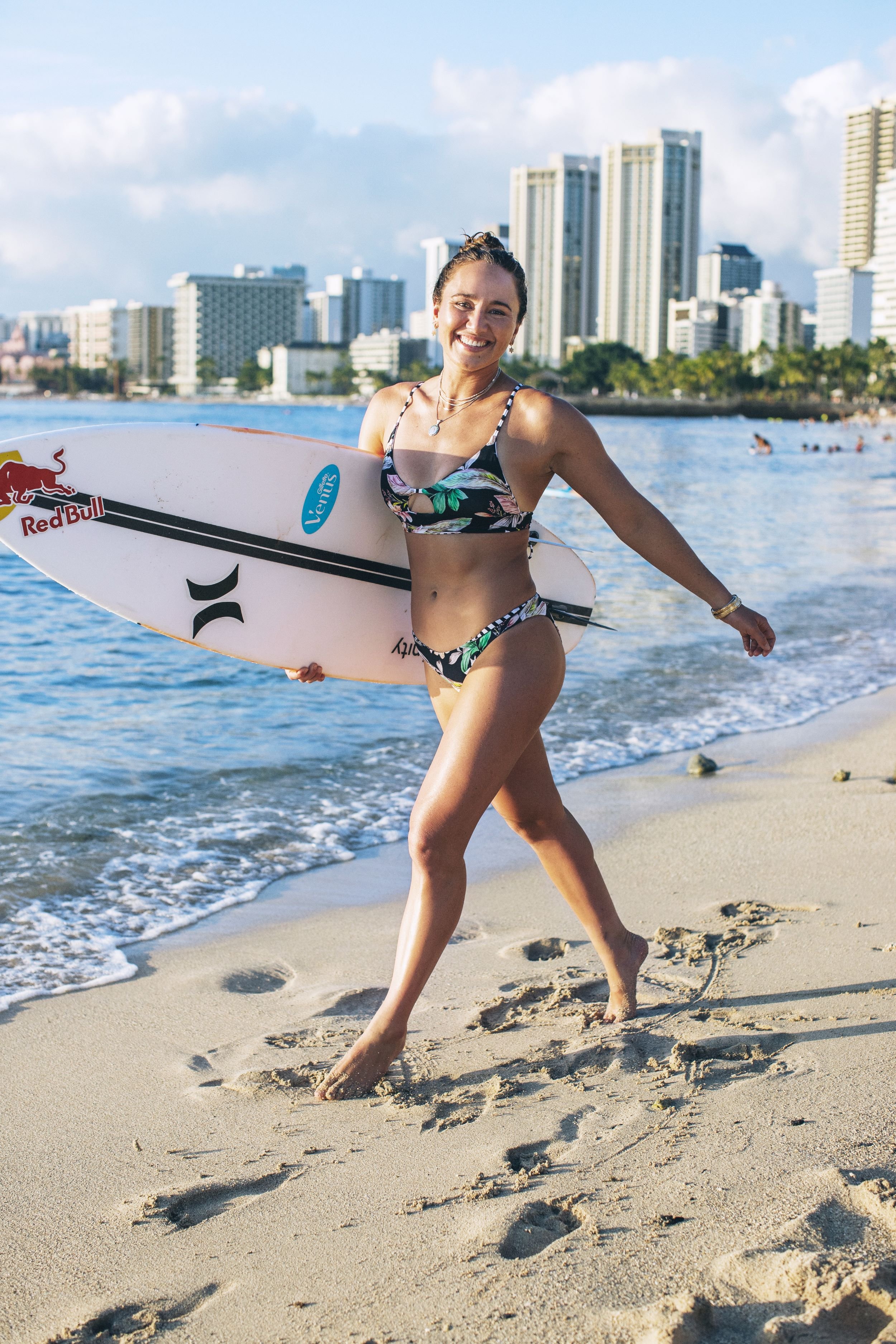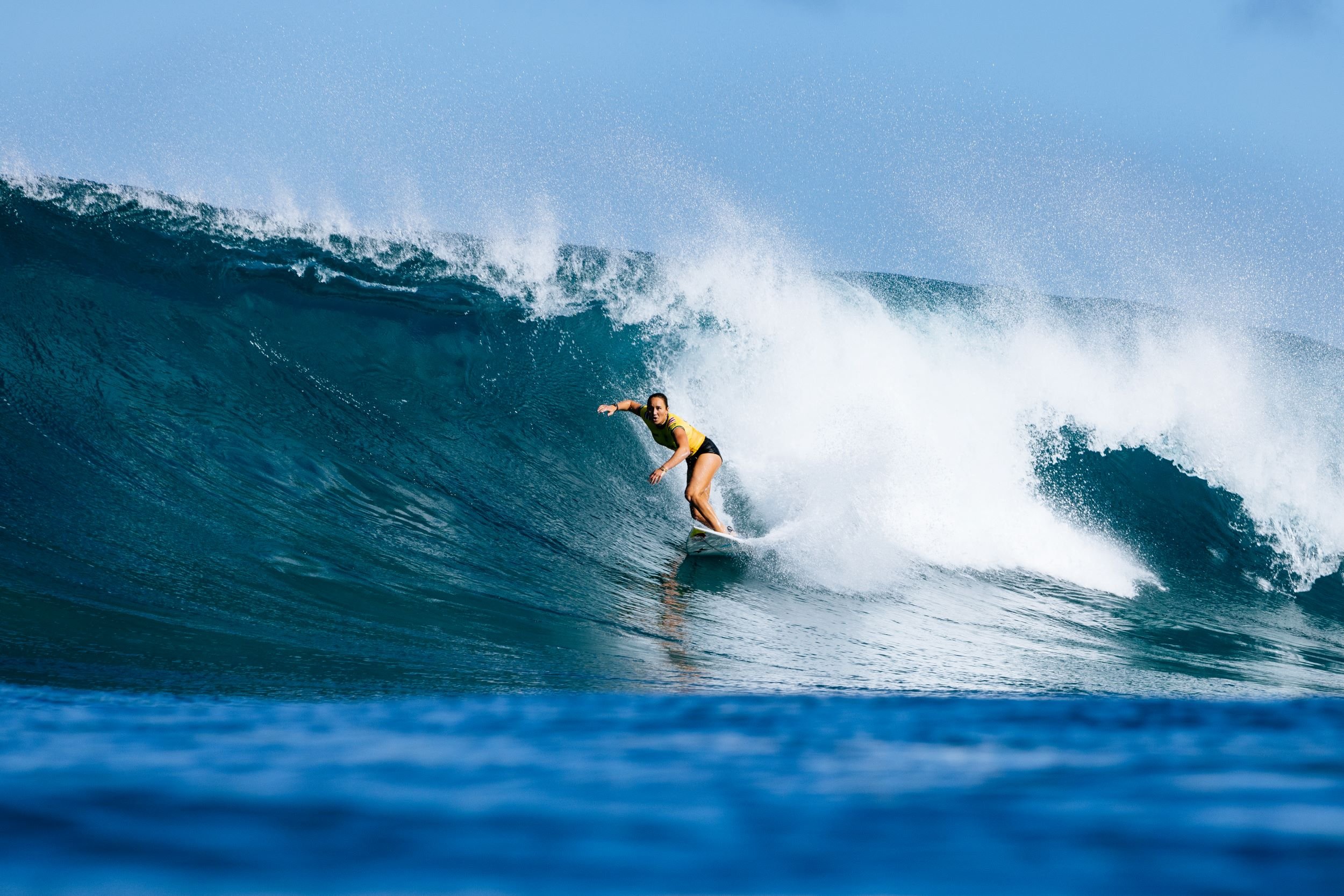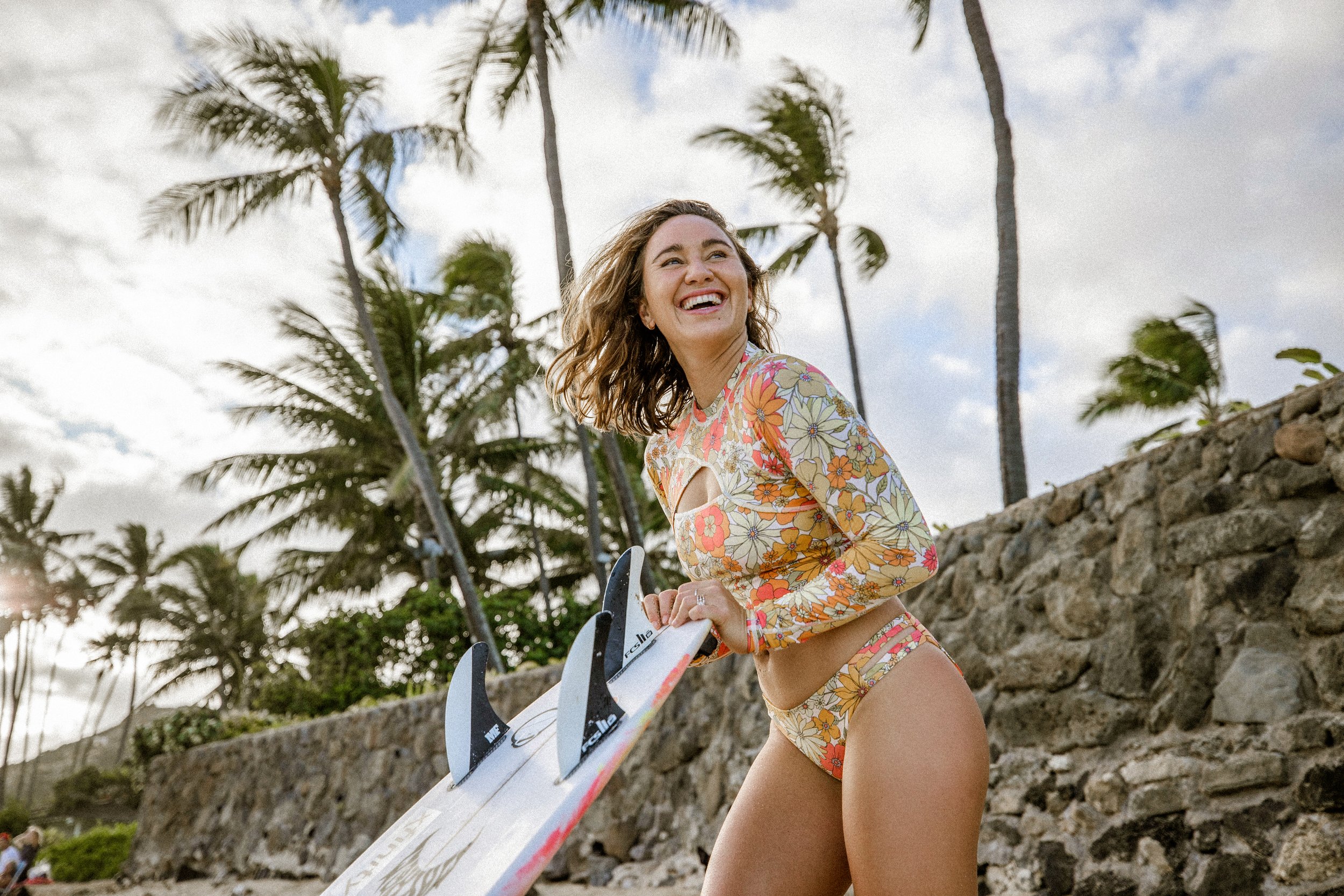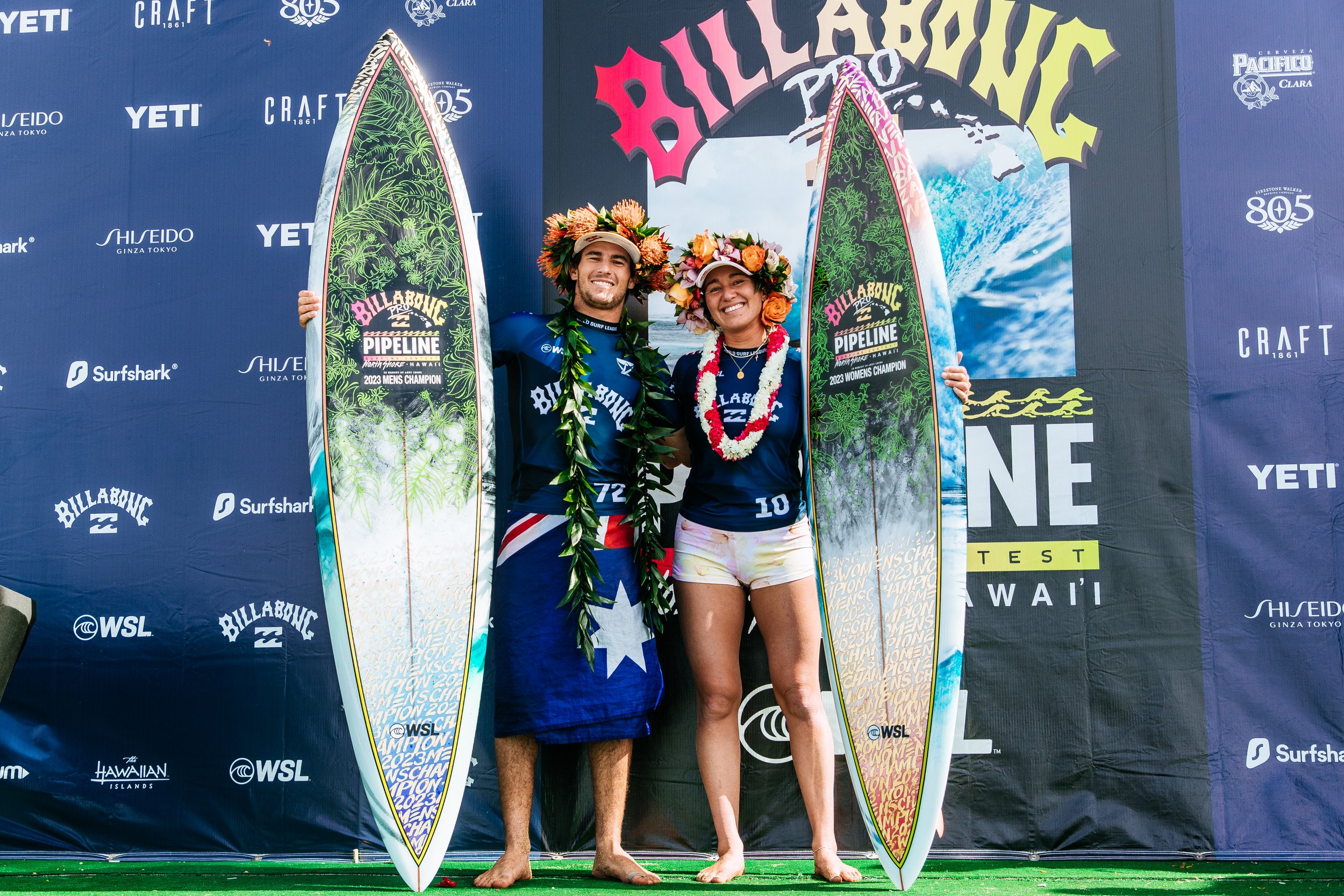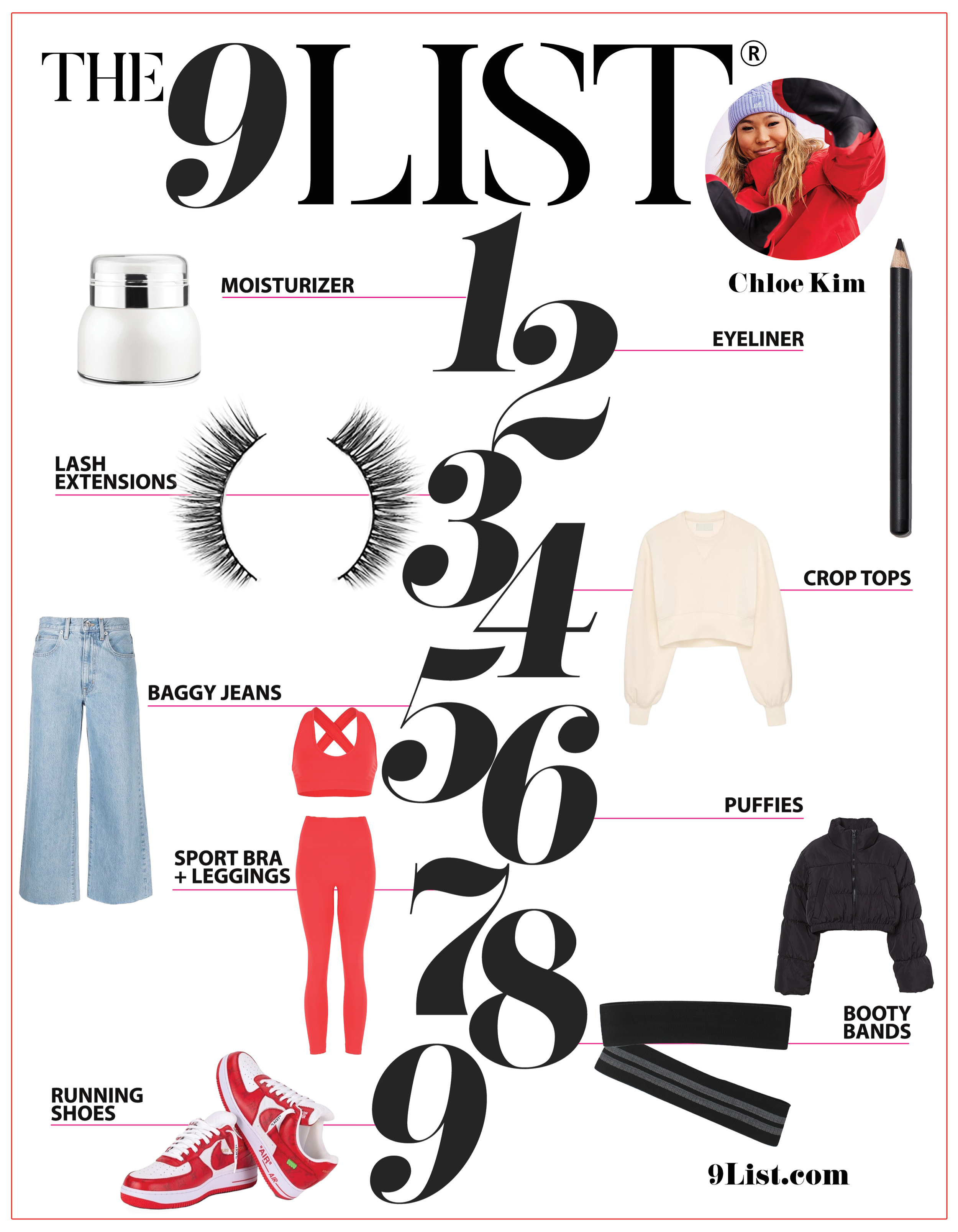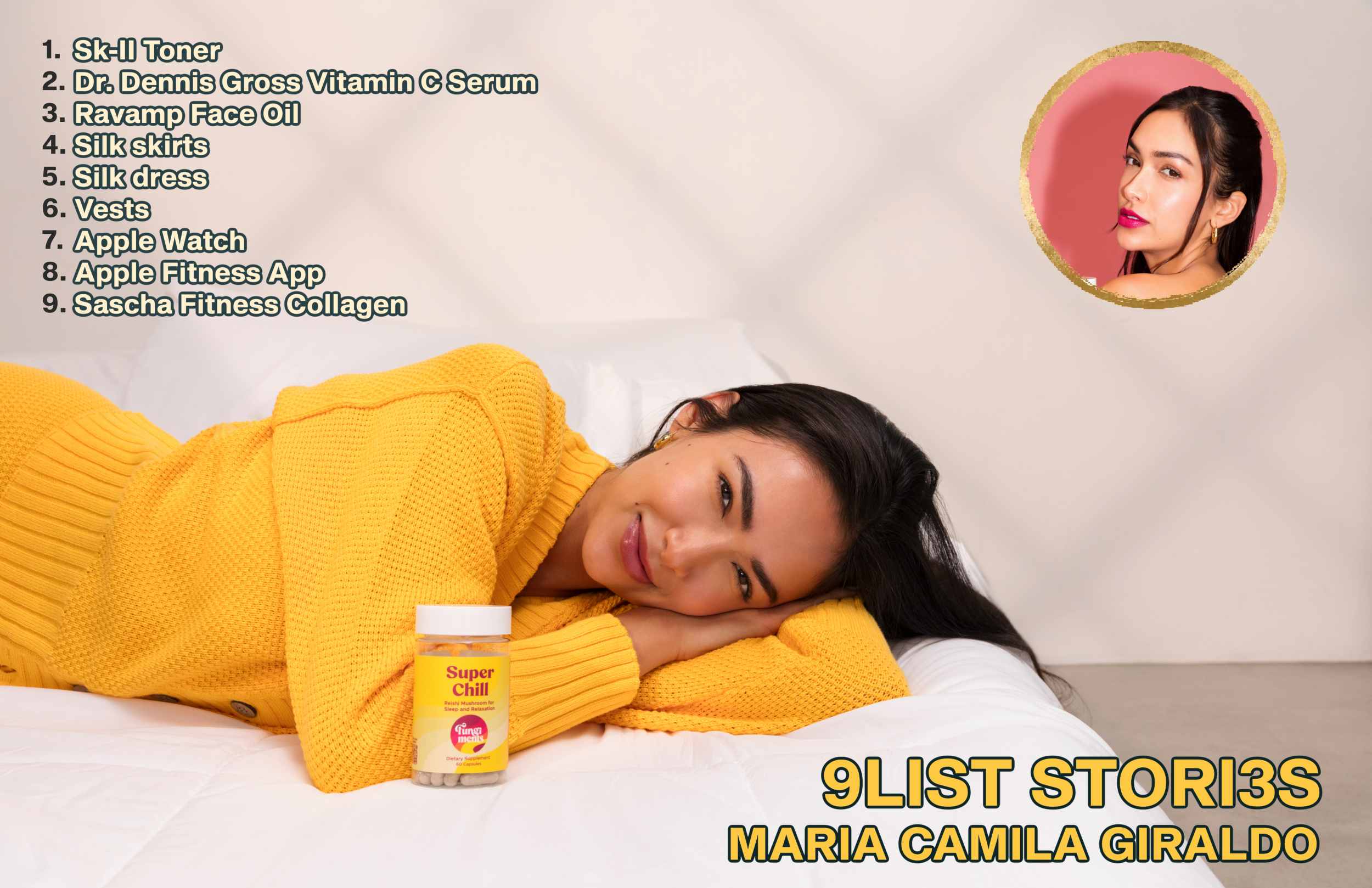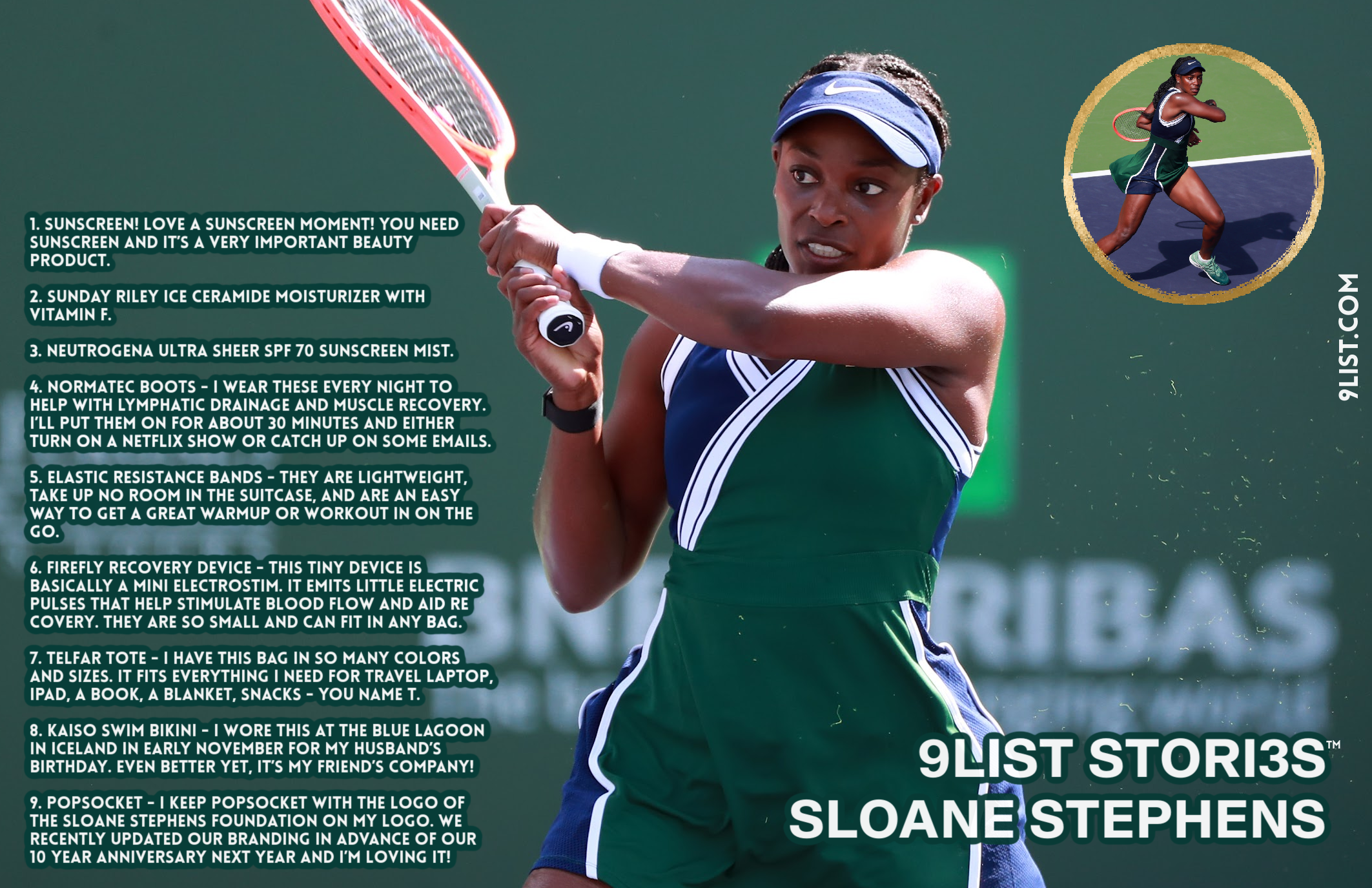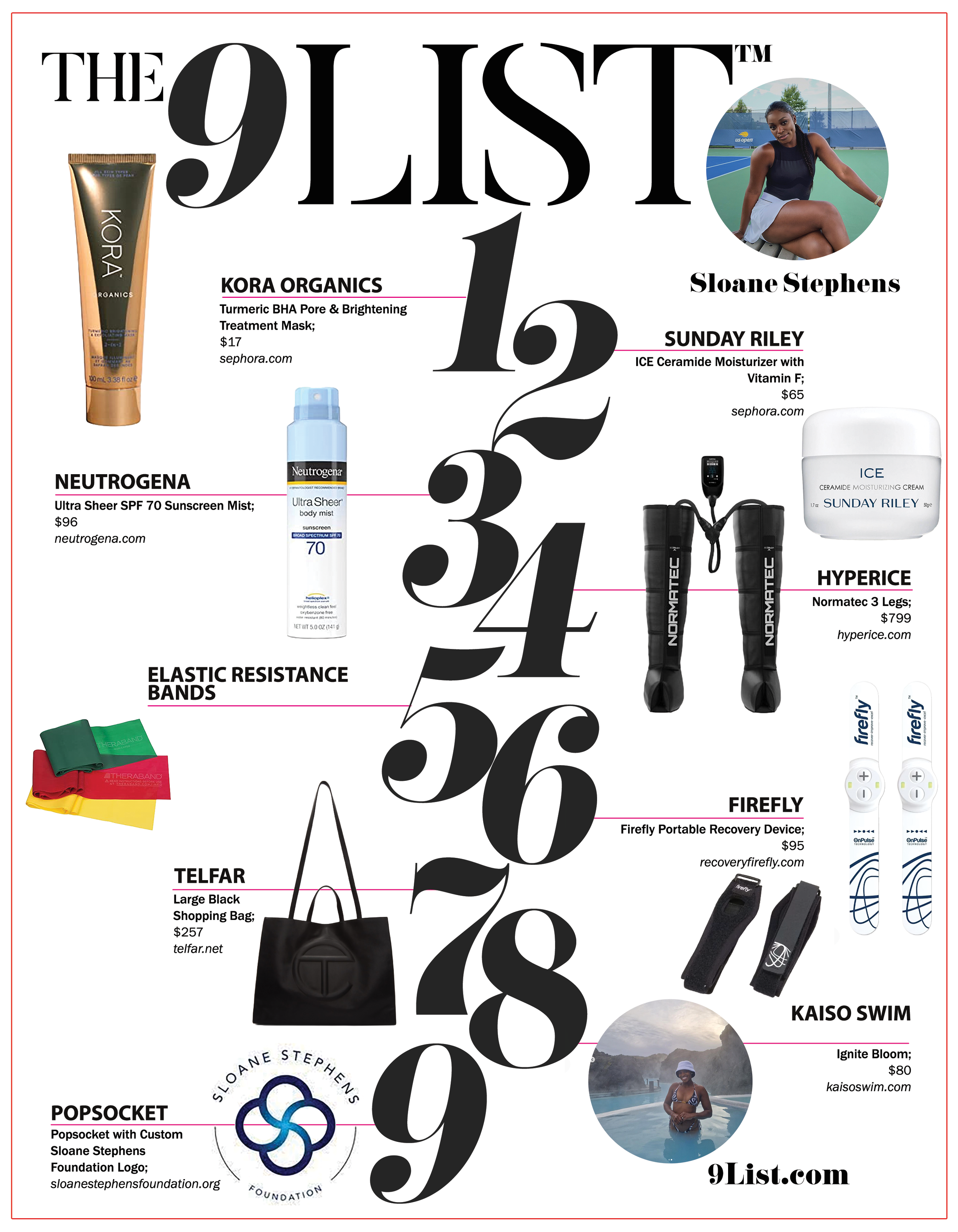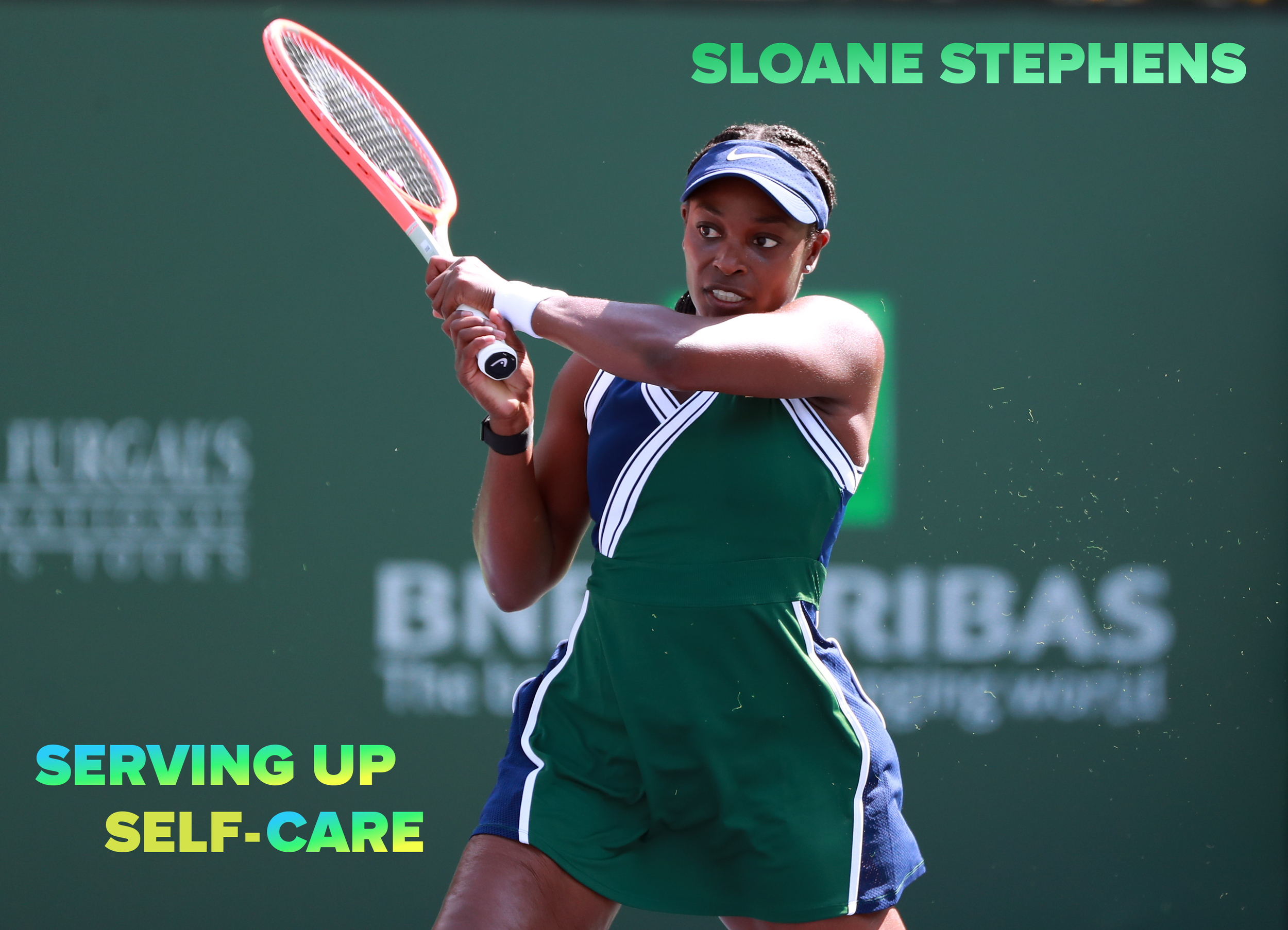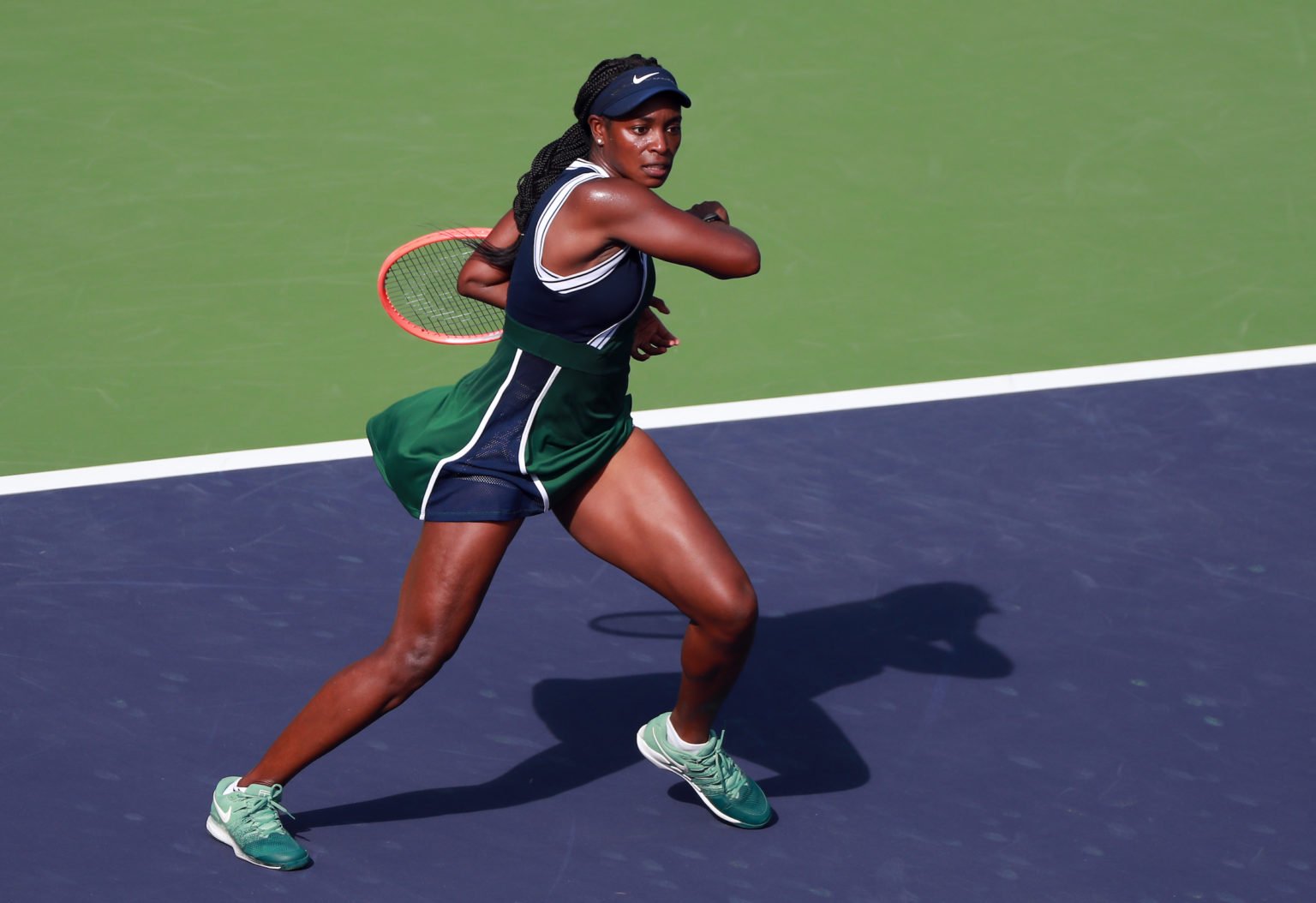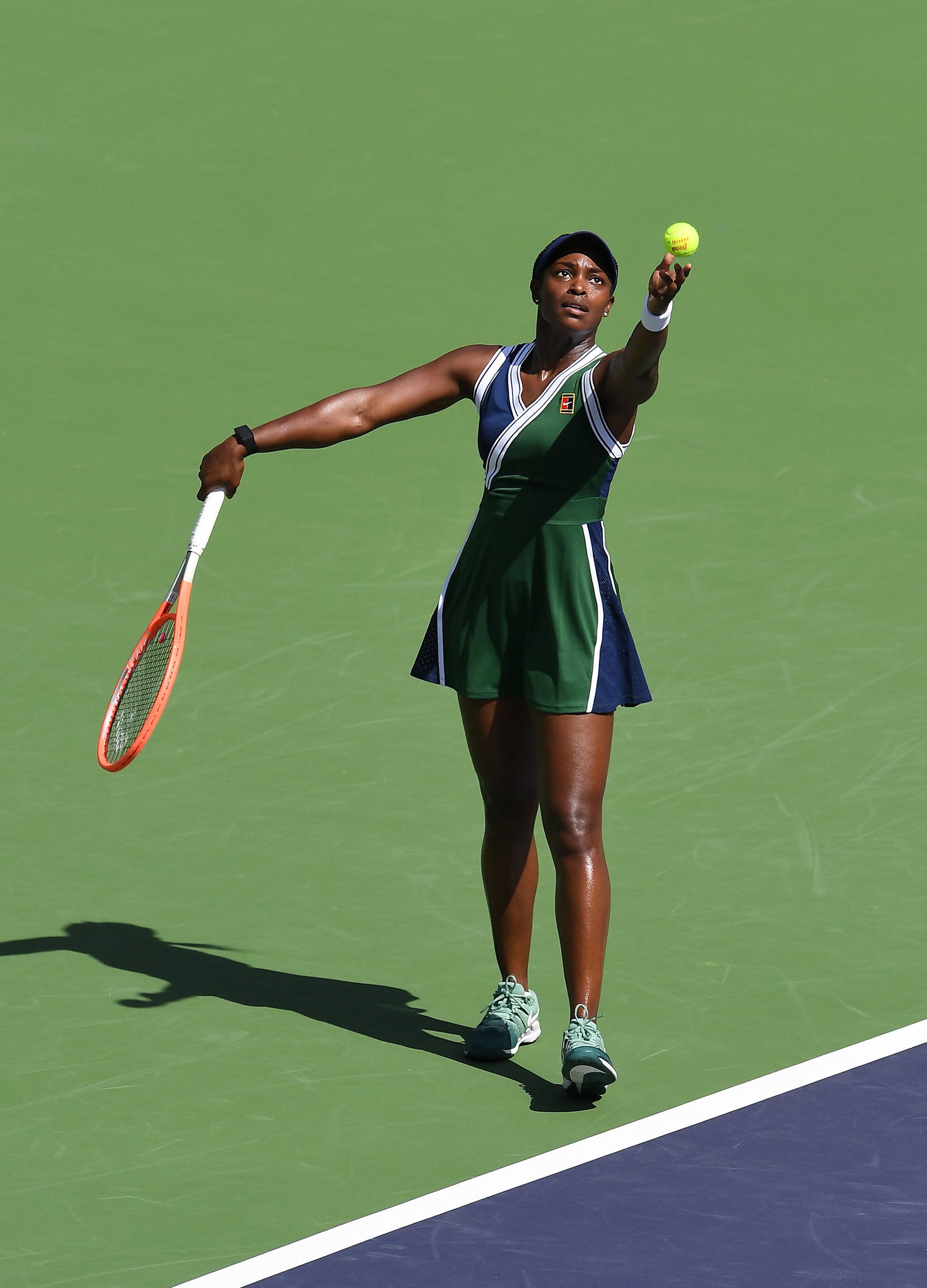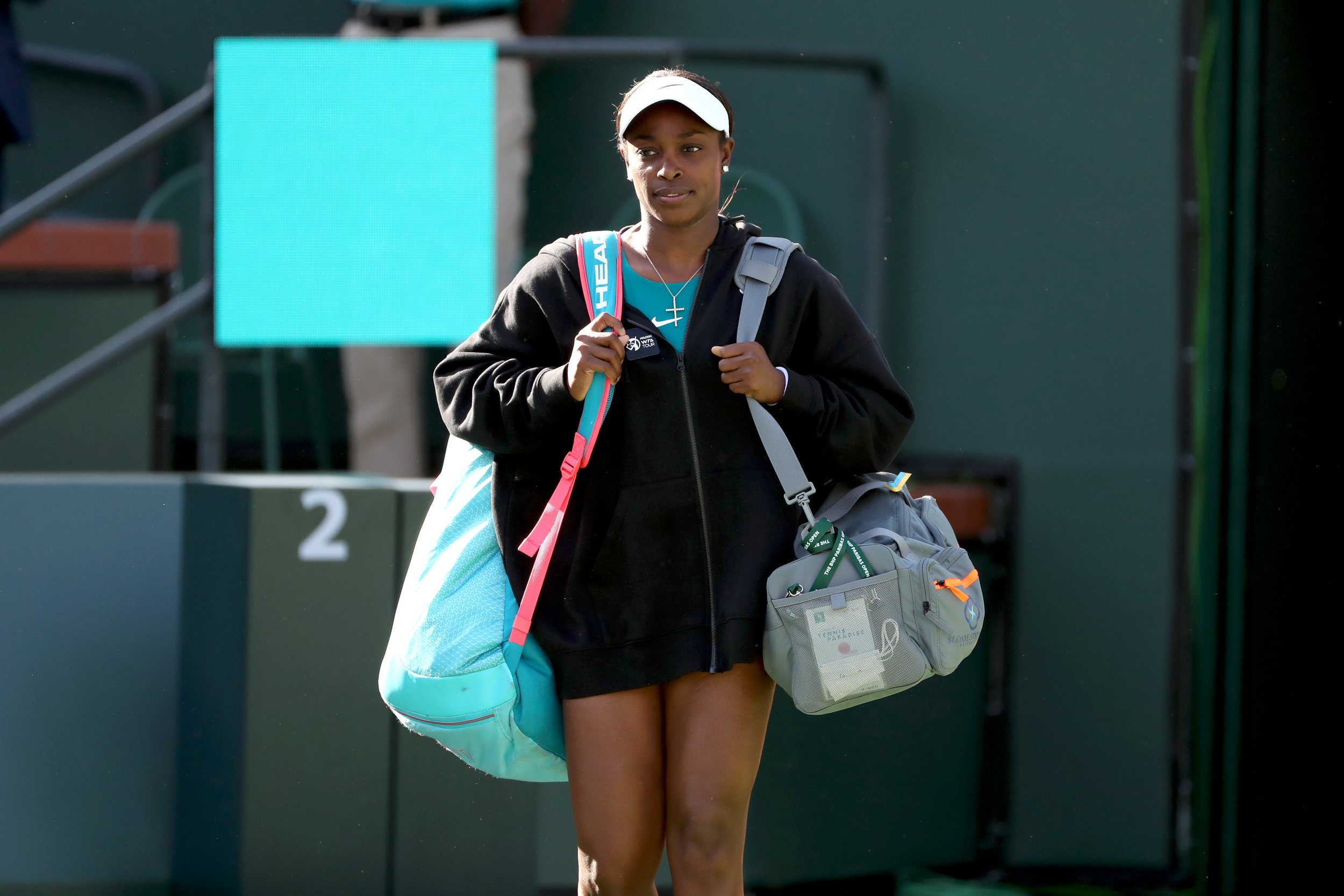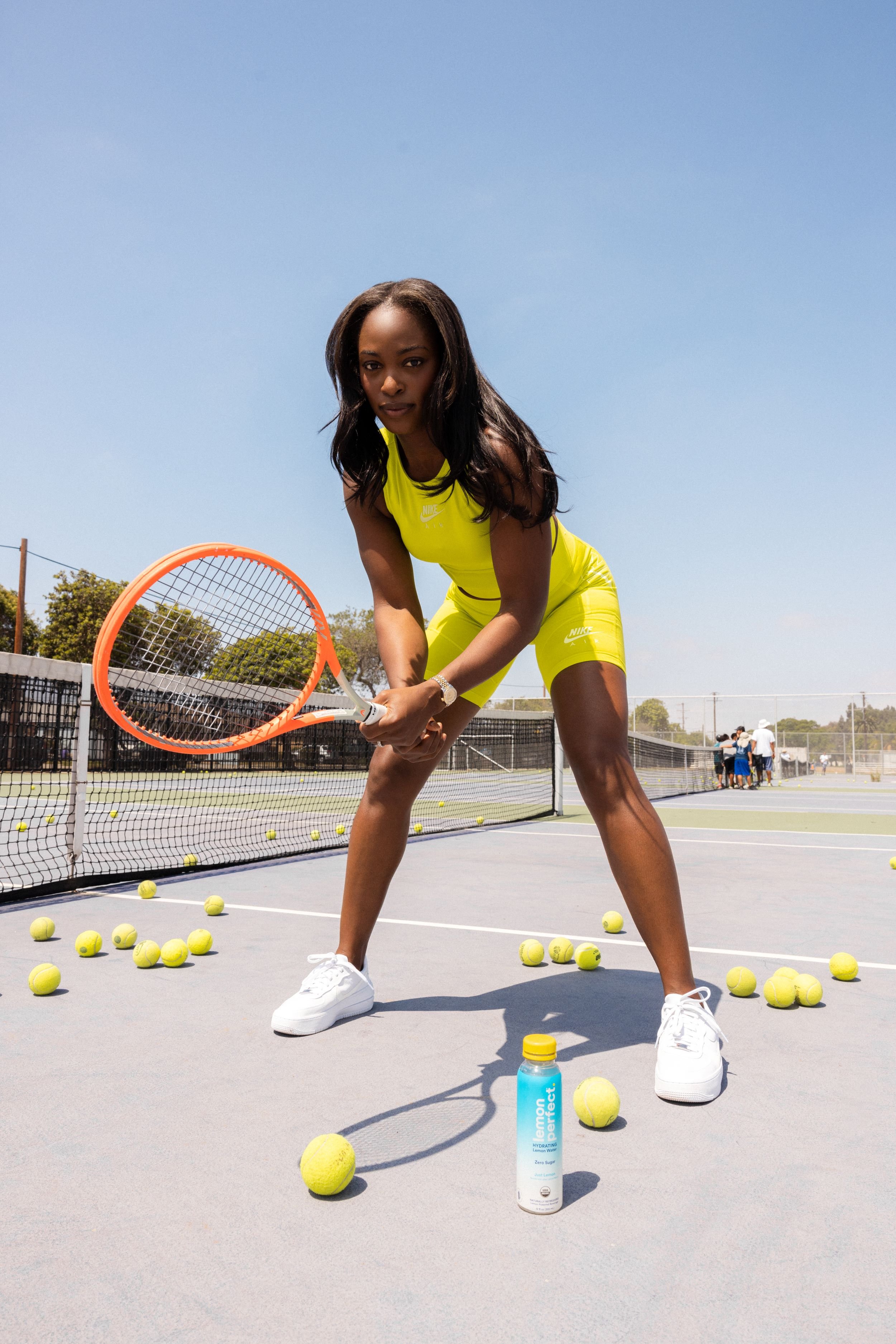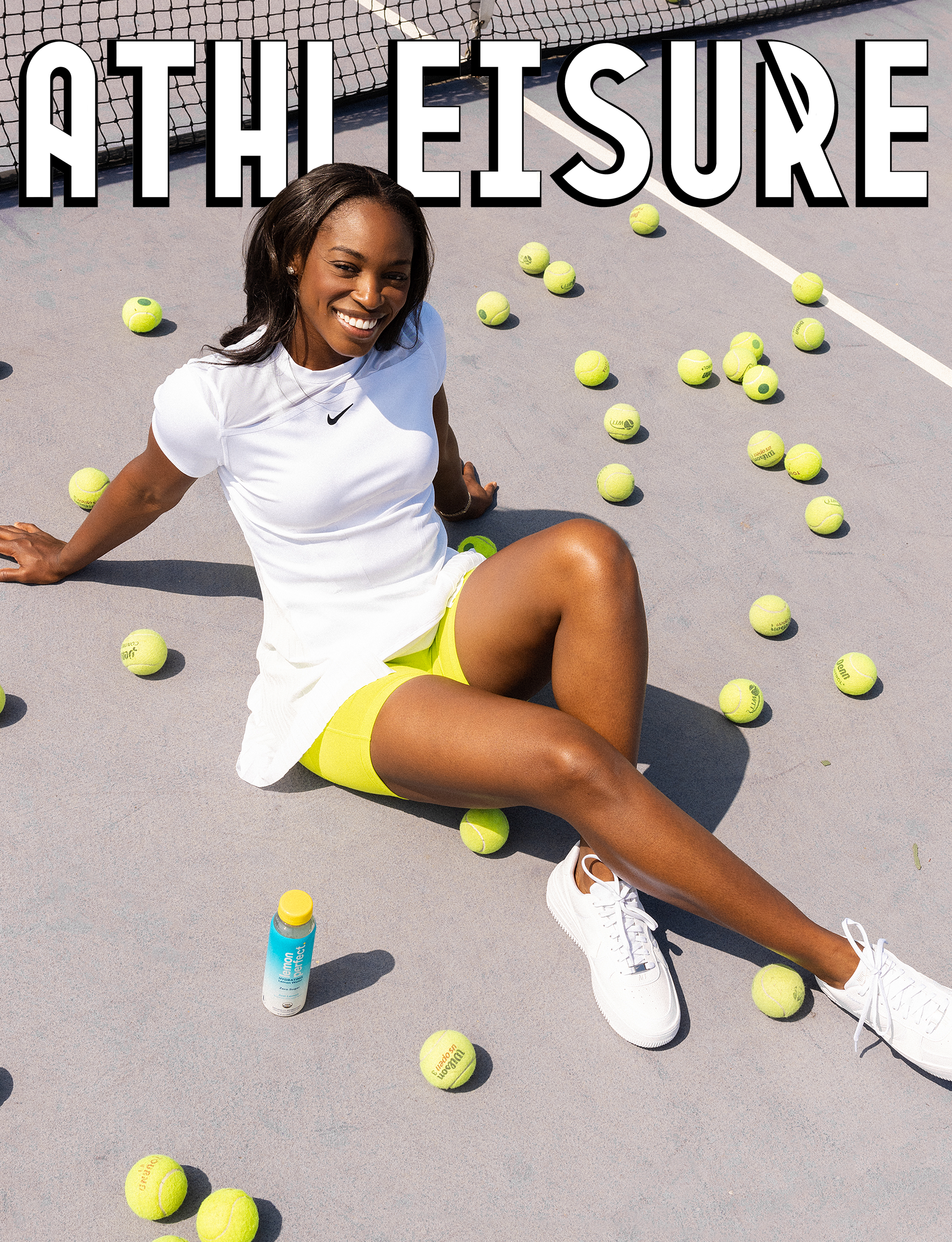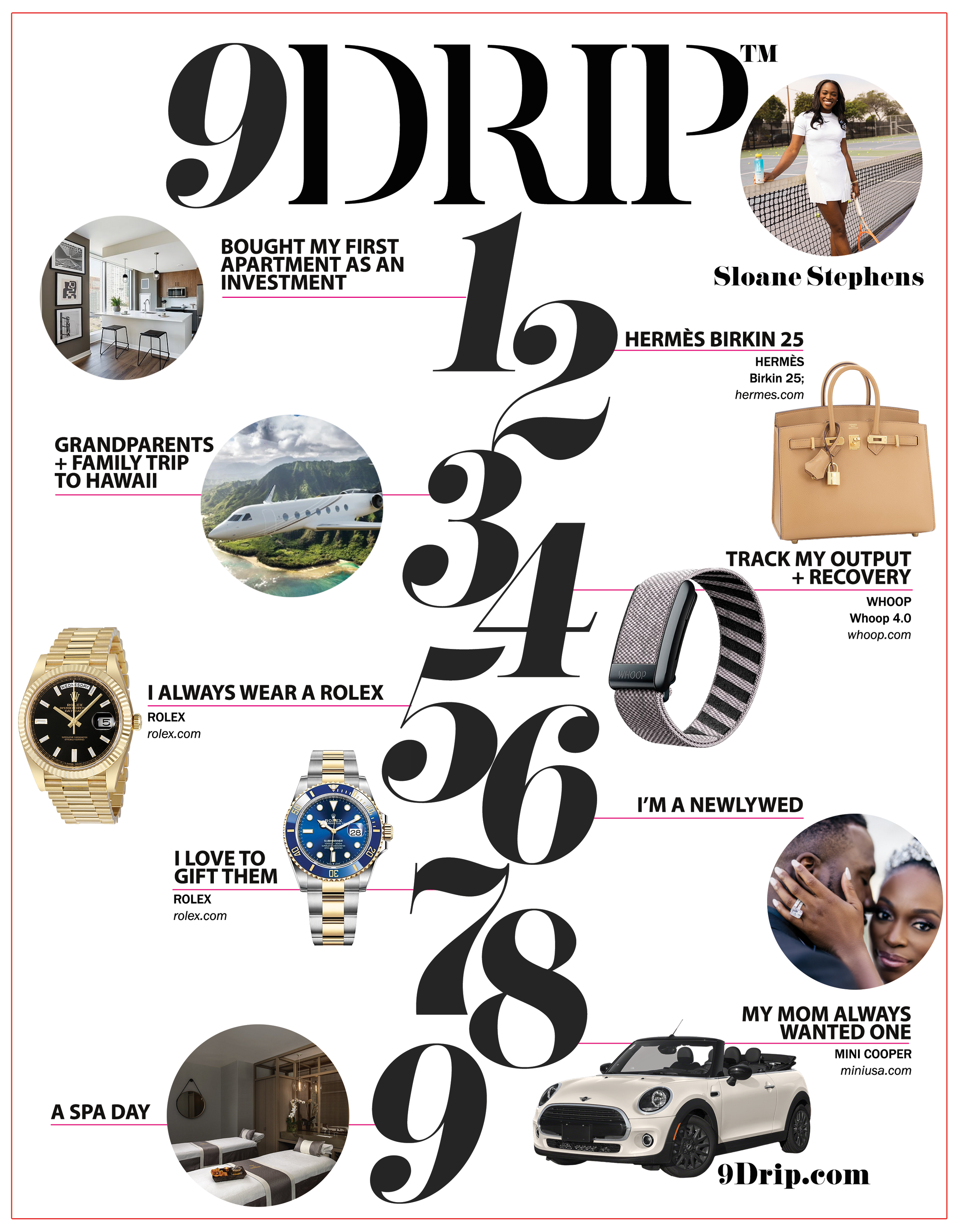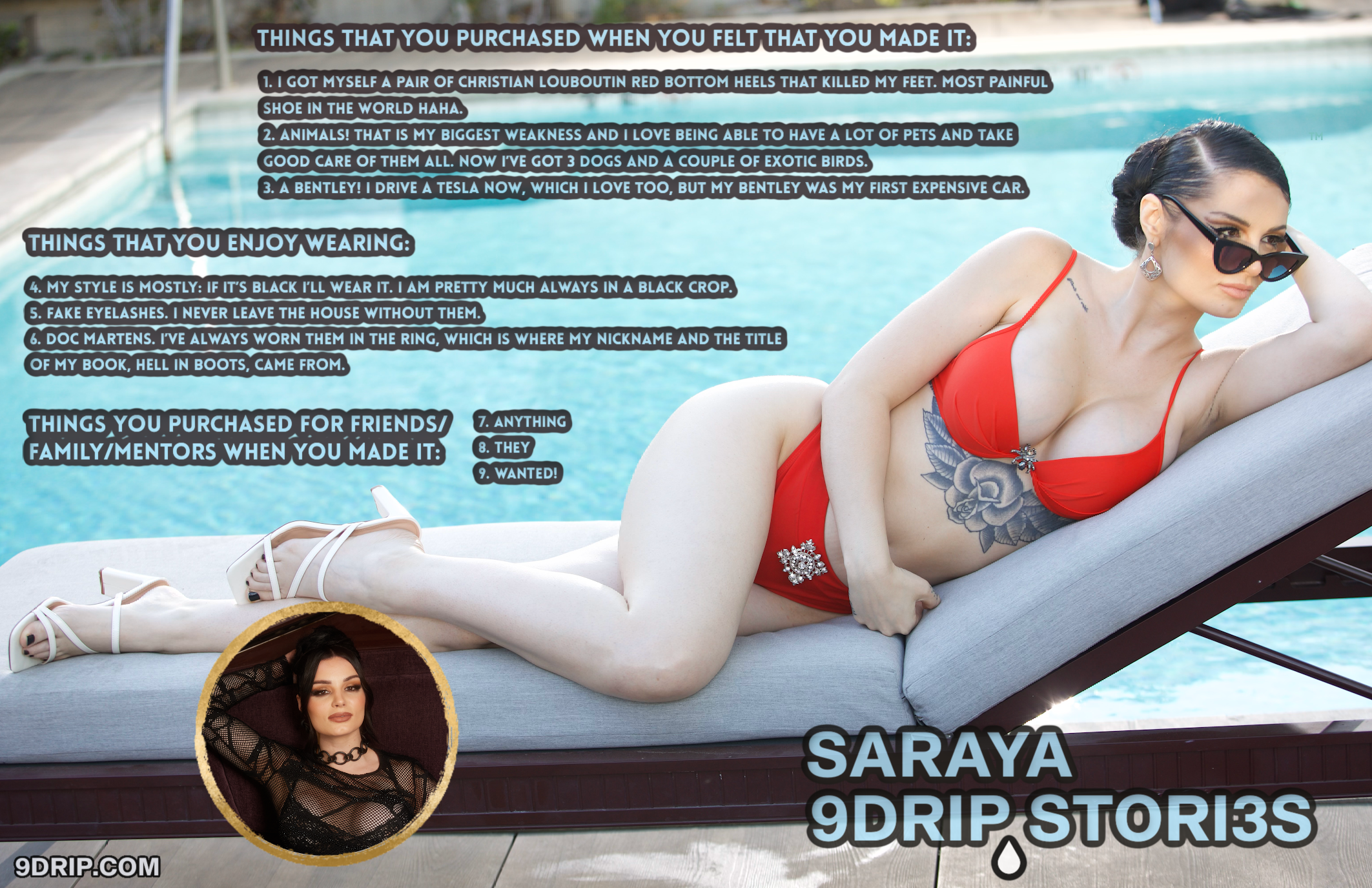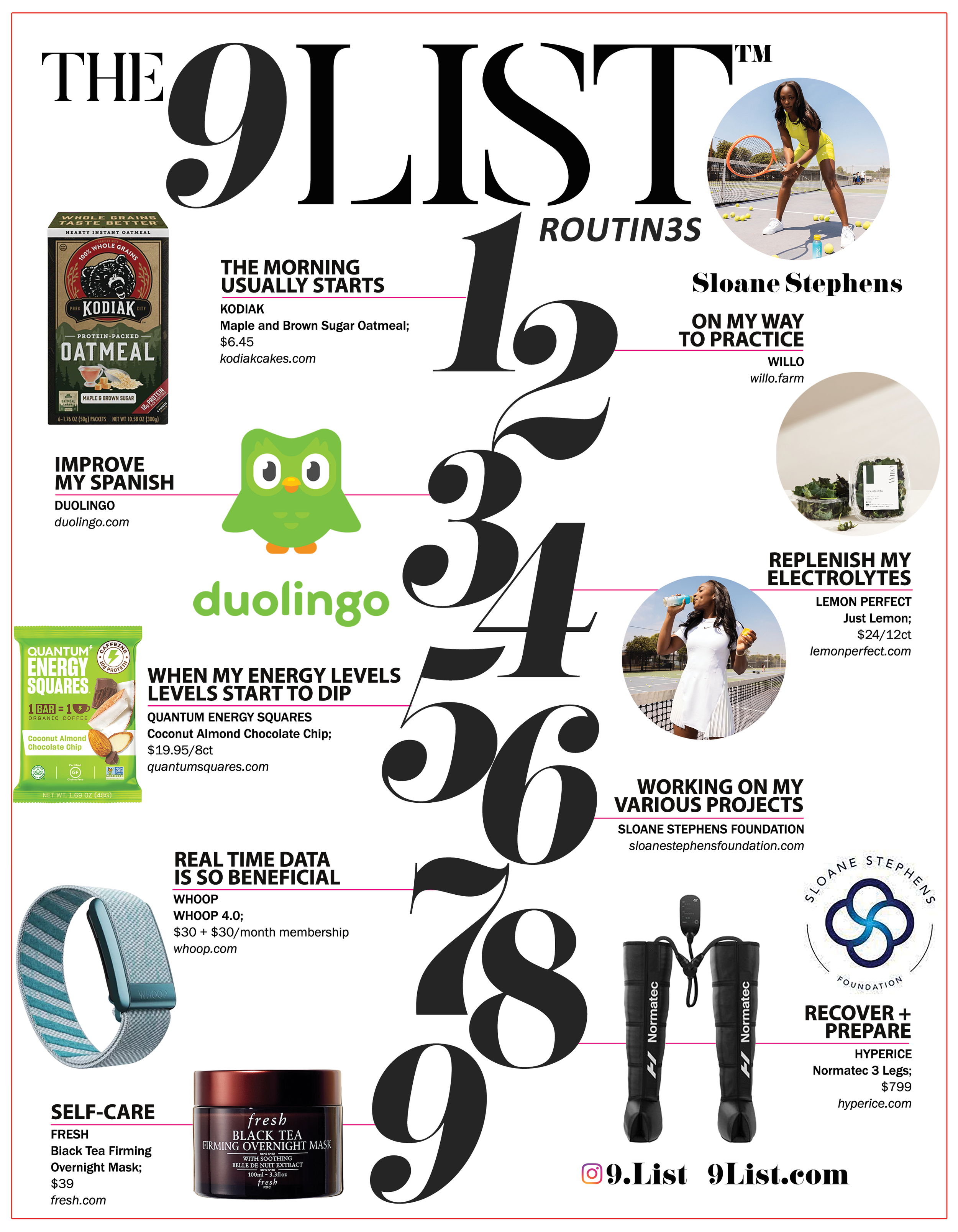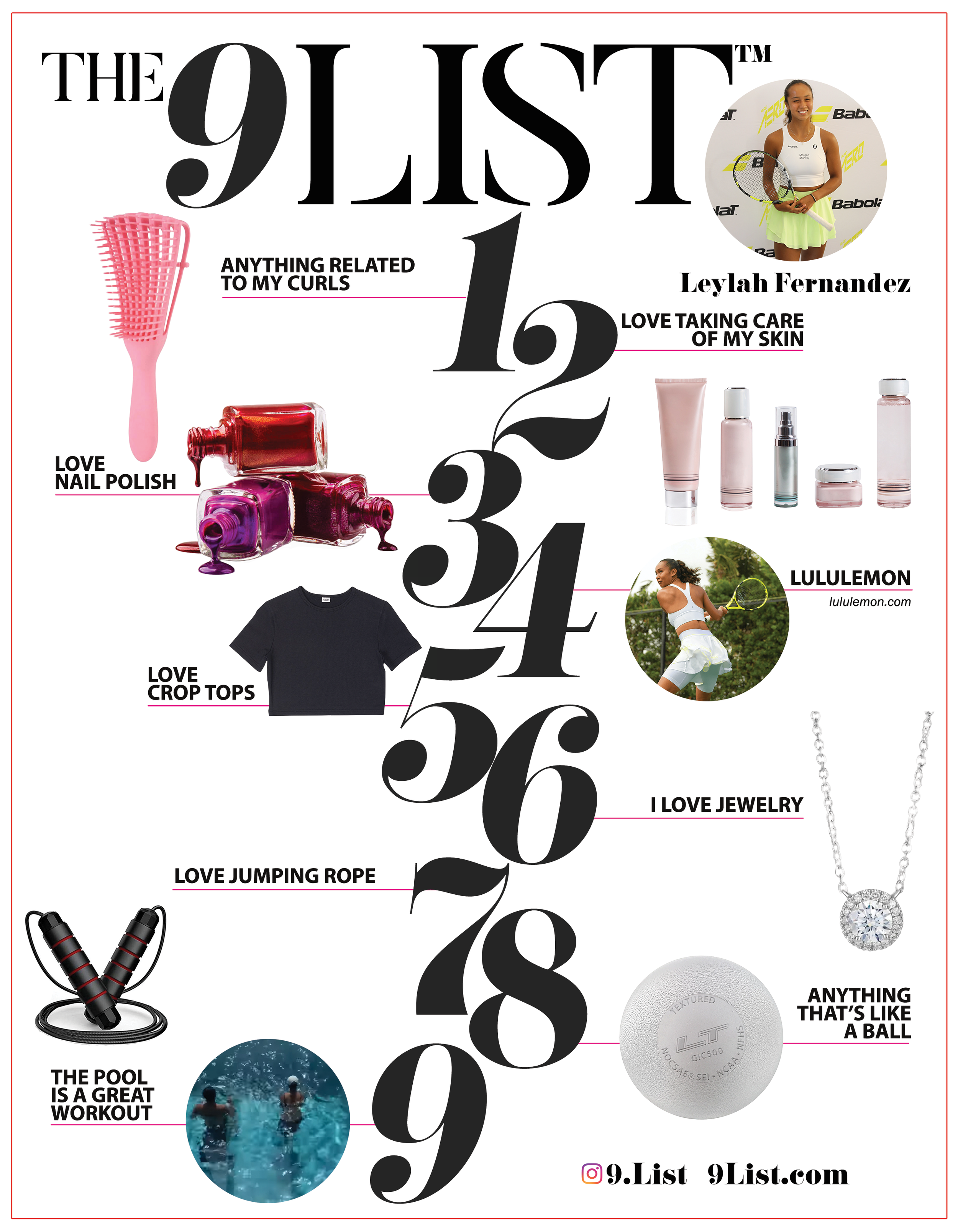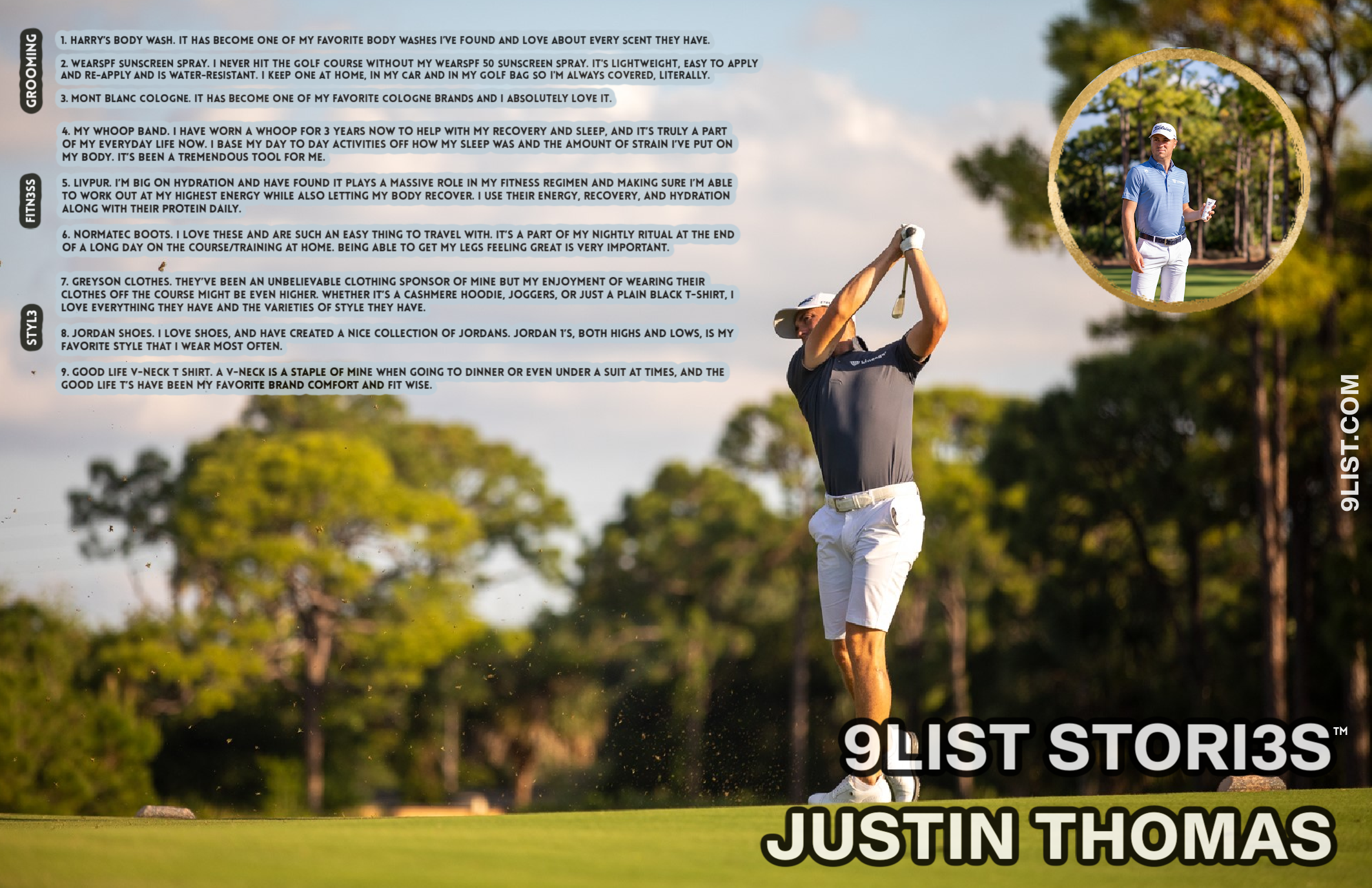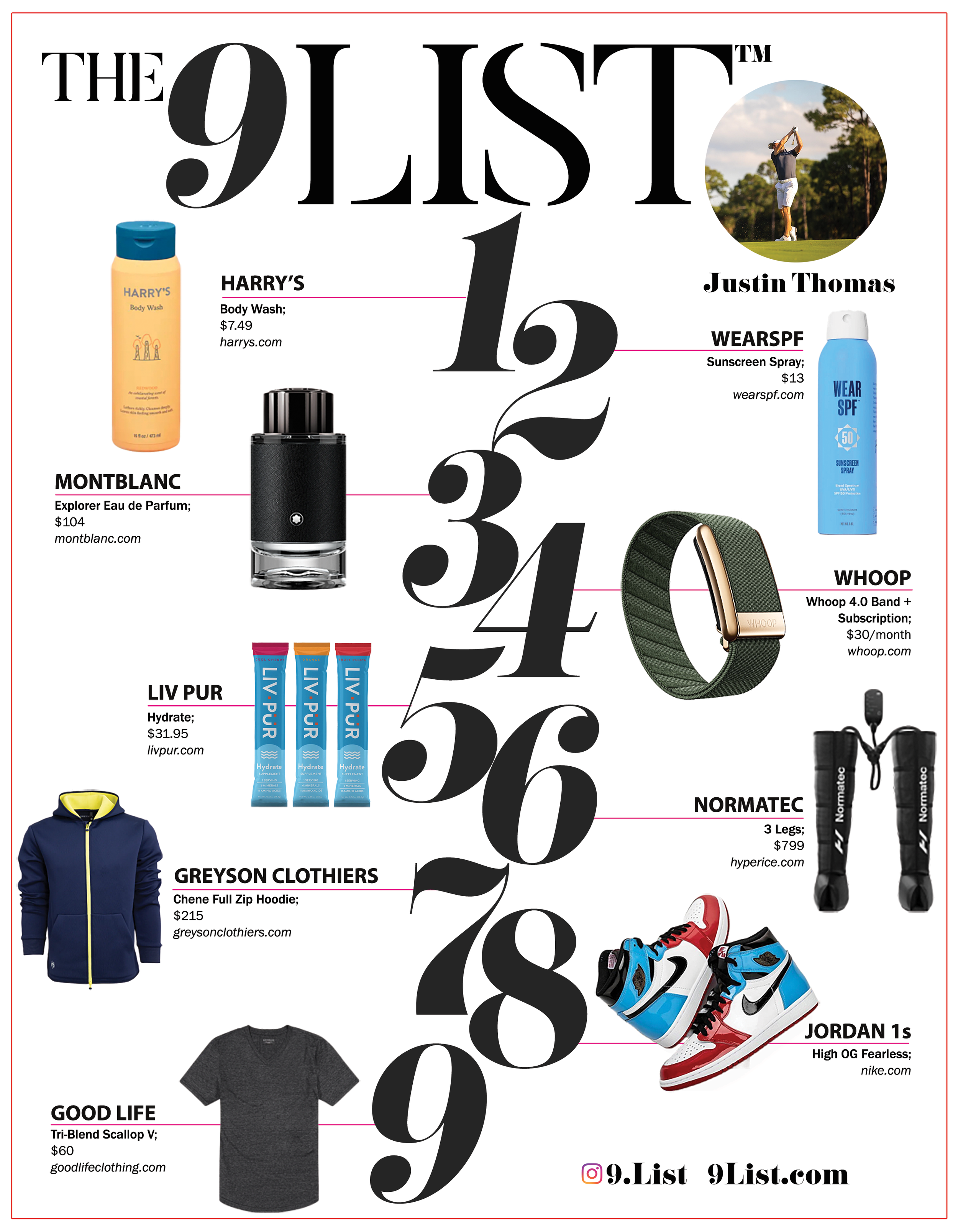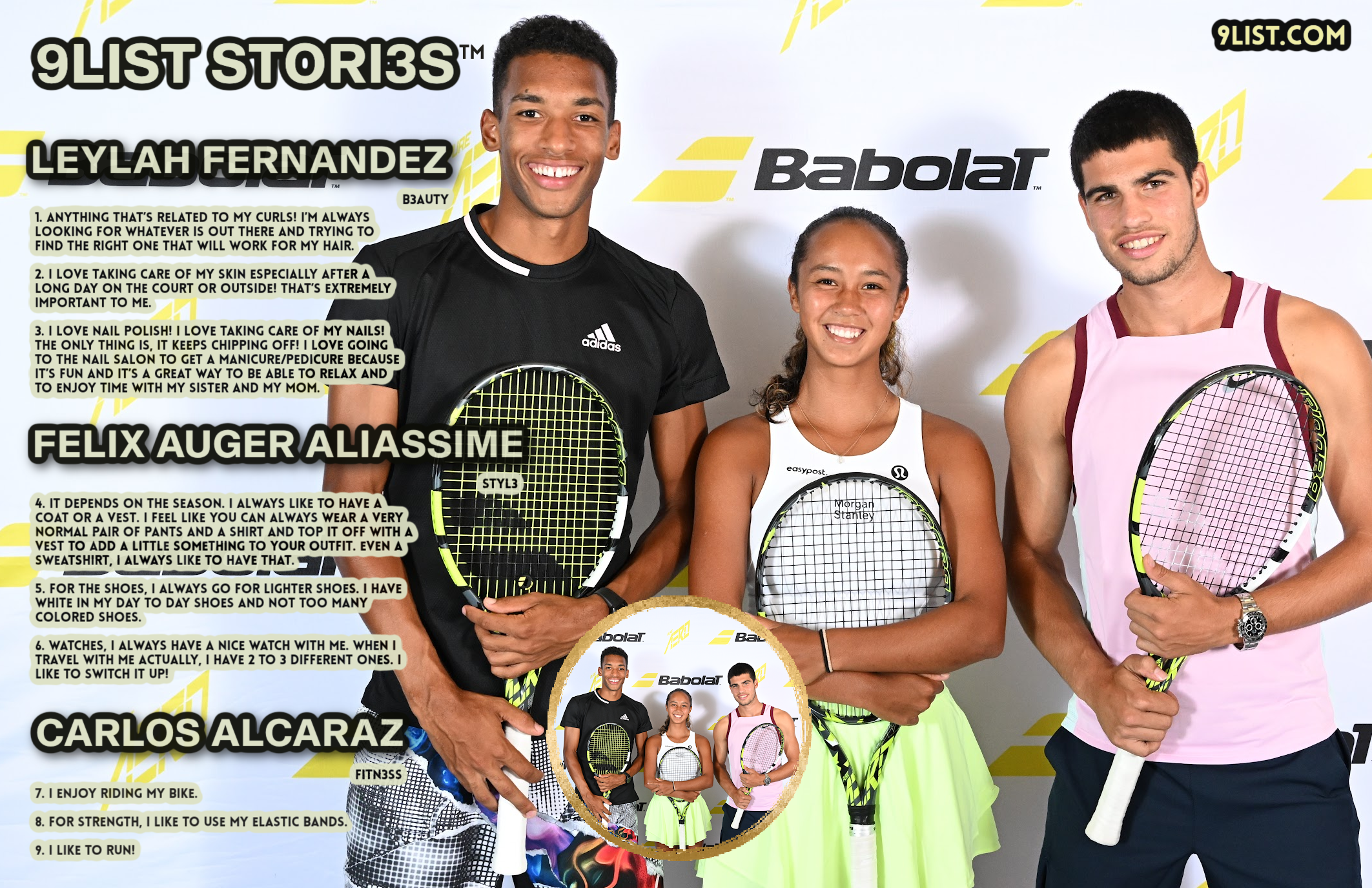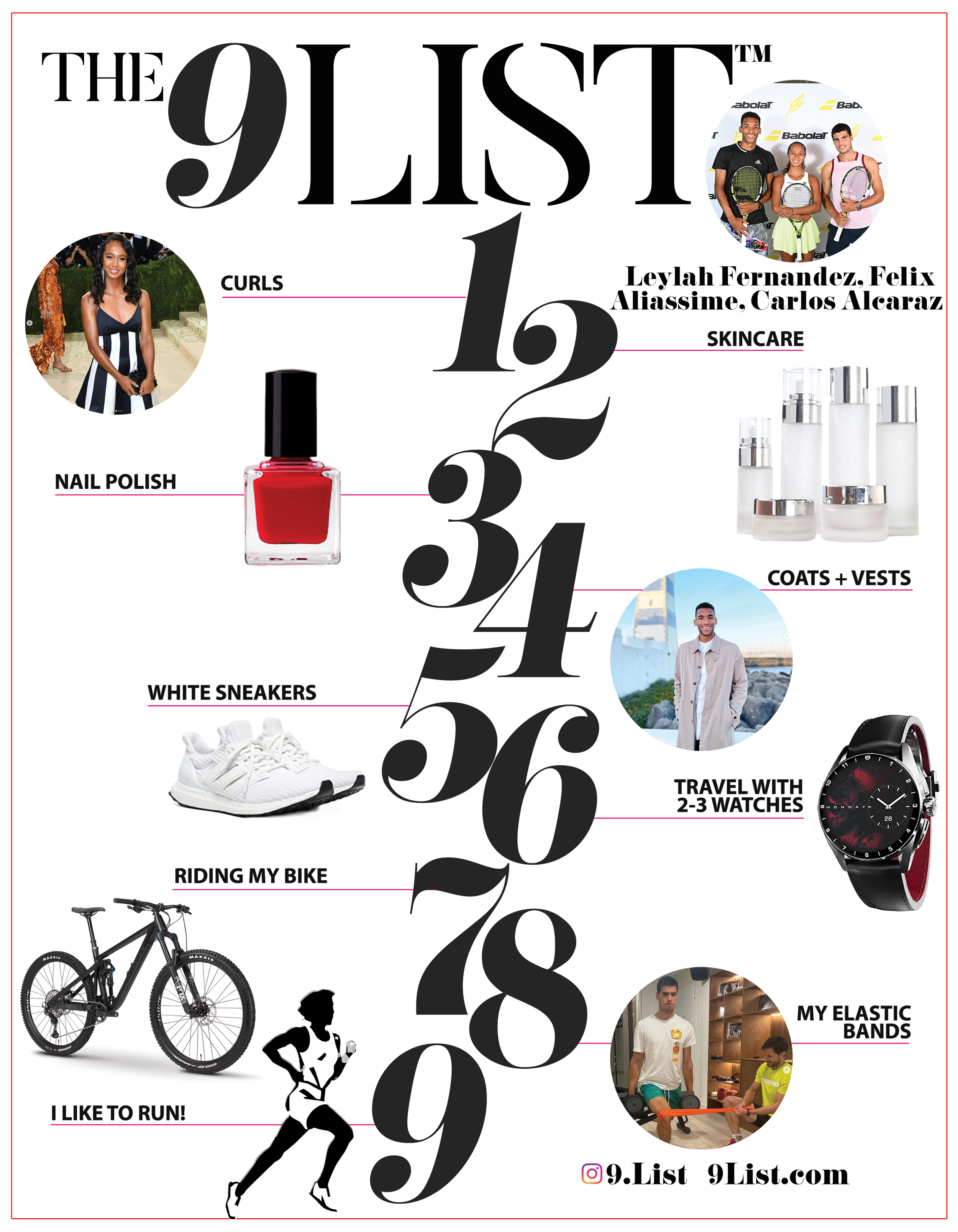SETTING THE STANDARD | CHRISTEN PRESS
As we reflect on 2023 and look ahead to 2024, it's always good to get other's takes on what went on in their lives as well! We caught up with National Women's Soccer League and US Women's National Team's, Christen Press.
As an athlete, she has competed at the top level with personal and team accolades that include being an all time leading goal scorer with 71 goals at Stanford, 2010 Hermann Trophy winner during her collegiate career. She has played for a number of clubs throughout the world with the latest being Angel City FC. In Rio 2016 Team USA Women's Soccer took the Bronze Medal and on the USWNT, she has had 155 appearances and 64 goals with 43 assists and won 2 World Cups.
We wanted to know more about her passion for the sport, her stellar career, the importance of advocacy and founding RE—INC along with fellow founders, Megan Rapinoe, Tobin Heath, and Meghan Klingenberg. She shares what she is looking forward to and she has thoughts on her 2023 and 2024 that you can read in next month's, NEW YEAR, N3W YOU.
ATHLEISURE MAG: When did you first fall in love with soccer?
CHRISTEN PRESS: Well, I have been playing soccer since I was 3 and I wouldn’t say that I had fallen in love with it when I was young, as I had a period of time when I was younger, that I didn’t like it. And my dad encouraged me to keep trying. But at some point when I was young, I can say that I fell in love with something about the game.
AM: What do you love about the sport?
CP: Well now at 34, as I reflect on all that soccer has given me and done, the list of what I love about it is quite vast. From learning to cooperate, to work on teams, leadership, the life skills that soccer has given me, I’m tremendously grateful for that. The opportunity to see the world, to be able to travel, and to experience different cultures. I’ve lived and played in Sweden, in England and have just been around the world with the USWNT. I think that the fact that it is impossible to perfect, it kind of leads you on a never ending ascension because you’re constantly striving and I can look at my game and see my strengths and that no matter how good I get at them, there’s always room for improvement which is what I love about it.
AM: When did you realize that you wanted to play professionally?
CP: When I was younger, I was always very present and I wanted to win the games that I was playing in and to win the trophy that my team was playing for and then I didn’t really look that far ahead. I think that a lot of that was because, growing up there wasn’t a professional league. So I didn’t even think of that as the ceiling. So it was great to know that I was really good and that was great in that moment. I went to the World Cup 1999 FInal and I have a photo. It’s of me and my teammates at that game and I can see in my eyes that I have a dream to be on the Women’s US National Team and honestly the first time that I was called in to go to camp, I couldn’t even believe that I was picked. I felt that it was such an honor to represent your country and I didn’t even understand how professional sports worked especially at that time. So, I think that it was an evolving dream and obviously, we have lived through a generation of soccer that has completely changed the way that young people view their futures and strive for their goals. Now, there is so much more visibility to see women playing in a lot of local and domestic leagues in this country as well as globally as well.
AM: I totally agree, I was born in ’79 and I grew up in the Midwest. I didn’t really think about soccer until high school as North Central had a great men’s and women’s soccer team. I know that my Alma Mata, Indiana University had a great women's soccer program as well. I never thought about women playing it professionally and frankly, I never thought about Black women playing as well. So to see you and other Black women playing this sport and reflecting this representation, it’s amazing! Looking at my niece who is 5, she’s living in a world, where she can see the sport as well as know that it can be played on the pro level. I didn’t have that growing up.
CP: That is actually so great! When I’m playing in my local market LA Angel City FC, I look up often into the stands and I see those kids that are 5 and 6 years old and they’ll never know – they’ll never know that this wasn’t here before. This is normal to them, to watch women play in 20/30,000 seat stadiums that are sold out which is incredible!
AM: That’s insane. You play for Angel City FC, what’s it like to play for this team?
CP: In a lot of ways, it’s a dream come true because of what the club represents and stands for! It’s women ownership super progressive agendas of how we can reimagine the business of women’s sports. Also, it’s my hometown! I never imagined that I would be able to play at home because the view of women’s soccer that I had a decade ago was that you’re not going to be able to have what you want. You don’t get to choose where to play, there’s not a lot of teams, and as the NWSL continues to expand and grow, so many people’s dreams are going to be able to come true.
AM: I love hearing that!
You’re also on the USWNT which has been a pleasure to watch that and you have obtained a number of accolades there as well. What does it mean to you to be on this team as well?
CP: The USWNT is just the thing that every single girl who wants to play soccer does right? It’s the singular dream! It’s the dream that existed before there even was a league! Still, to this day, what we are able to achieve as a National team is far greater in terms of who we reach, how we’re paid, how we’re treated – all of the things – it’s still kind of the gold standard. I think that I spent the first 25 years of my life dreaming of playing for the USWNT! I’m talking, up every night dreaming about it, trying to figure out how to get there, and I spent the last decade plus experiencing it and it’s been the greatest honor of my life. It’s afforded me so many great opportunities. It’s been such a joy to be able to represent my country, to put on that shirt, to score goals, to celebrate with the fans and my teammates, and to go through the hardest parts of my life fighting for 20 spots on the roster where there are 100s of thousands of people who are playing soccer. So, it is an incredible experience and it’s also a very challenging environment to be in, but I love it!
AM: You also have an Olympic medal with Team USA when you guys competed at Tokyo 2020, are you thinking ahead to Paris 2024, and you must be excited that the Summer Games are coming to LA in 2028!
CP: Part of me is like, I wish I was 15 years younger because the Olympics are coming to LA and it is also rumored that the World Cup is coming to the US for the women and the men. I mean, man if I was 20 years old right now, these would be my prime years! It will be very challenging as I’m 34 to be able to do all of tournaments, but I will absolutely be there as a fan. I tore my ACL and I am on my road to recovery through injuries so I always think that National and the International schedule is a guiding light and it’s something that you always try to make you fight for your roster spot and it also pushes me in my recovery to make sure that I am making progress and have my goals. So I’m thinking about that for next summer’s Olympics and our National Team is getting a new coach and there are a lot of dynamics that are changing and I'm really excited to see what my body wants for me.
Right now, it’s guiding me on the journey and I just follow. I’m really excited for the team to come off the World Cup which was not successful to be able to fight for a gold medal.
AM: You’re entire career has just been so amazing. You’ve done so many things and so many accolades, what do you think they have been as a player?
CP: I think that I reflect on some of the hardest times – coming out of the hardest times. There are things that I am most proud of like the 2016 Olympics in Rio, it was an extremely hard time as an individual player and as a team. I remember that metaphor, getting off the floor and saying, “can I survive these types of lows?” I think that I’m really proud of that. I’m really proud of taking a mental health break after the 2020 Olympics that happened in 2021. I actually asked the National Team for a few months off as I had been playing consistently with that team for 10 years and I lost my mom in that period and I never had time to grieve. I am proud that I made the hard decision to leave that environment because it was extremely difficult to get back in. I think that the other thing that I would point to as a highlight is being around a group of strong empowering women that is normal to me. My expectation is almost beyond gender norms and stereotypes because so much of my life is on a field or in a hotel room and being around these women who are breaking down barriers! So now that I am an entrepreneur as well and I run my business as a Co-CEO, I am really doing whatever I can to create that environment for more people and more women so that you know, some of the imposter syndrome, sort of the placating of the male ego that happens outside of a sports environment is diminished and so women, minorities, and people of color are able to thrive and live at their best. I feel that I learned a lot about how to create that kind of ecosystem in sports.
AM: That is amazing to hear and you’re such a multifaceted person as an athlete, sports journalist, and now taking on this entrepreneurial role with your platform in this way, why did you want to launch RE—INC? What was that moment when you said that you wanted to do this and focus on your advocacy and to embrace the fact that other people can enjoy what you did by doing this?
CP: I think it’s 2 fold. The first thing that led me to this path was the fight for equal pay and really just to understand the financial realities of being a women’s professional soccer player. Knowing that building a business and building a company, I had the opportunity to fight for my values without the restrictions of what US Soccer thought our worth was versus the men. I think there was a dream for my teammates to build something for our own financial liberation and then be able to spread that. I think that that was part of what RE—INC vision that we wanted to bring into the value of women’s sports and women’s soccer ecosystem so that more players can get compensated in more fair ways and to have that rising tide to lift everybody up.
I think that the second part of that was just understanding how amazing our community that we have built, our fan bases, and to make sure that people don’t feel othered. The way that sports is in this country, it’s built for and by men. So the people that love the USWNT, and love Angel City, and love women’s professional soccer, it’s a very unique group of people that need to be served. When we built RE—INC, it was about content, community, and commerce for this group of people. It felt like in a lot of ways that this was the first time that there was something like this that was designed for me. Now through RE—MEDIA, we have a large mission to reimagine the way that women are experiencing sports by recreating the kind of content that reflects how women’s sports is.
I always say that you know what bro culture and what locker room culture is for men. You can see it and you can smell it. You might not love it, but you know what it is. We don’t have that defined in women’s sports. So we’re bringing with the community that we have built, with the content that we have planned to roll out over the next 3 years, we want to set the culture for what women’s sports is and how it can be talked about in an incredibly empowering and exciting way.
AM: You launched Reimaginers United. What can we expect from that?
CP: It’s really dear to my heart. I’m wearing the whole kit right now. It’s a special collection because it kind of takes the concept that I was talking about before with such a group of strong willed human beings and saying, how can we create that team feeling for everybody? So, with Reimaginers United, it’s a team where everybody wins. This is a club for all. As women, we don’t have to build something in opposition to what was built. The current sports house was built for men, but we don’t have to build a sports house for women. Our sports house is for everyone and it will be a co-creation with our community so that it reflects our shared values – it reflects diversity, it reflects equity, inclusion, progress, and art and all of the things that we care about. So I really see this collection, our uniforms for Re-Imaginers, people who want to build a better world, come join our club. We have a membership and our membership is for people who want to be themselves and better themselves. They’re sports fans and change makers because that is such a strong intersection in the women’s sports world. Women’s sports aren’t just about sports, because we have inherently had to fight for equity every step of the way and now it is embedded in our culture. So that’s what Reimaginers United is all about and honestly, it’s what our entire business is all about.
AM: Umbro partnered with you to make the initial kit. What does it mean to have this iconic soccer brand involved?
CP: It was an amazing partnership because I think it’s such a classic heritage football brand! It felt like absolutely the right choice because we’re kind of serving this fluid, modern, progressive, brand and we’re marrying the beauty and history of the sport and the beautiful game that all we love. It’s a kit to wear for people that are out playing soccer, adult league, to wear in the stands, to wear in the streets, and it’s to signal what your values are and who you are. To put it on and to feel the strength to reimagine which is what we always say. We hope that our logo gives people the sense to say, that, “I know my identity, I claim my identity, I love who I am, and I’m strong enough to make a change today.”
AM: That’s amazing.
I love that this brand has so many things going on. You have the RE—CAP show, the podcast that you host with Tobin Heath – why did you want to add this component to it?
CP: It was a huge strategic decision for us. Because we were watching the World Cup and it was the first time that we were on the sidelines and not in the game for over a decade. In the buildup, we were hearing the way that people were talking about it and it just felt that it wasn’t like us. Not like the players and athletes that were actually participating. We felt that we would be able to talk about it in a better way. Our content was sitting at the intersection of sports, progress, and equity. We talked about the games and tactics, we broke everything down – honestly Tobin did that and then we married that with impact. We’ve had a ton of abuse in our league from coaches and owners. We had deep conversations about that. We talked about abuse that players at the tournament were facing like cyber bullying and hate speech which we have seen come out this week with incredibly skewed and bias towards the USWNT and a couple of players on our team. We had real conversations about the issues that mattered to us in our community and we married that with the breakdown of the games and the celebration of all of the stars.
AM: Where do you see women’s sports in general in the next 10-15 years? Obviously, people are looking at soccer more and volleyball is also taking great prime time spots on ESPN, and of course women’s basketball as well. Also where do you see it specifically for soccer?
CP: On a rocket ship, taking off! I mean over the last 2 years, we’ve said record breaking viewership, record breaking ticket sales, record breaking attendance – everything! The ceiling is absolutely blowing off and I feel really proud to be part of that at Angel City and with RE—INC to continue breaking that ceiling! I want to continue to show the value that is already there and to maximize and optimize this sport. I see a future of RE—INC where we could own a team one day and to instill the culture in that way. I think that the opportunity in women’s sports is limitless and I don’t think that what men’s sports is doing is the ceiling at all. I think that we can make women’s sports even bigger or even an imagine a world where they are not compared. We can just focus on our strengths and what’s special to us and I think that that’s exactly what we’re going to see over the next 10 years with people working hard behind the scenes at it.
AM: What do you want your legacy to be known as?
CP: I think it would be 3 things. First and foremost as a little girl, I wanted to be known as a great goal scorer. I think that it’s a very narrow singular focus and I do believe that I have become a great goal scorer and I’m very proud of that. I would say that our fight for equal pay is one of the things that I am most proud of and all of the ripple effects that that will have to set precedent across the industries. I think that most importantly to me and my family was just the idea of representation. When I went to the National team, the entire team was white. Just being part of a generation where the National Team is much more diverse – we had our first 2 ever World Cup players that were Hispanic American this summer, I think right now in the current camp the entire front line minus 1 player, is Black! I think that that is really really cool and it’s something that doesn’t get as much attention as equal pay for women that took place for the WNT as that is such an easy thing for people to connect to and understand. But I think that over the time that I have played soccer, we have really created a revolution by diversifying our sport and I’m really proud of that!
PHOTOGRAPHY CREDITS | PG 56 - 60 Angella Chloe | PG 63-65 Robin Alam/Icon Sportswire
Read the DEC ISSUE #96 of Athleisure Mag and see SETTING THE STANDARD | Christen Press in mag.
63MIX ROUTIN3S | ELIZABETH BEISEL
TAKE IT TO THE WAVES | MONICA MEDELLIN
We enjoy a great docuseries where we get to follow our favorite sports and get behind the action to find out how it all comes together. Prime Video's 4 episode series, Surf Girls Hawai'i follows 5 native Hawaiian females as they take their shot on obtaining a spot in the world tour. We follow Moana Jones Wong, Ewe Wong, Maluhia Kinimaka, Pua DeSoto, and Brianna Cope as we see them navigating their season, training, and interacting with their friends and family.
We caught up with Monica Medellin, Creator and Executive Producer of this docuseries. We wanted to find out more about how she became a fan of this action sport, being a surfer, working in the surf industry, and the importance of storytelling to amplify voices that are underrepresented but have powerful points of view.
ATHLEISURE MAG: We’ve personally been a fan of your work for awhile so it’s exciting to be able to talk with you to know more about you’re your docuseries, and what you’re working on that’s coming up!
MONICA MEDELLIN: Amazing! I’m so excited! I think that this is perfect because every body that knows me makes fun of me because athleisure is all I wear.
Thank you so much for highlighting me. I feel like a unicorn in this space. I just turned 30 and this all happened before then and it seems like the tides are changing and there are very few women that are like me in this position. So I really want to share my story and to hopefully inspire more storytellers in narratives like this.
AM: Absolutely!
Before we get into talking about the docuseries, we want to know more about you. What was the moment that you realized that you wanted to be a filmmaker?
MM: Oh, I mean, I feel like I was destined to be a filmmaker ever since I was a little girl. I couldn’t really identify that that was what I wanted until later in life. I've always been involved in sports as a child. My mom was a single working mom from Mexico and she raised me on her own.
Through that, she found different sports programs and extracurricular activities and that’s where I really fell in love with different sports and it started with more traditional sports like volleyball, basketball, and soccer. Then I moved into gymnastics and then we both discovered surfing while we were walking along the Santa Monica Beach and at that point, I had started skateboarding, surfing, and exploring these non-traditional sports.
I actually used her old camcorder to film myself skating! That’s what I did with my friends on the weekends, so obviously the production value was what it was!
You know, I started documenting sports from a young age and I started documenting myself as a young girl participating in those sports from that time. You know from there, I obviously played sports in high school – I was the team captain of the volleyball team, I would teach at surf camp over the summers and I moved to university and I studied Journalism at the University of Oregon. So, this theme of filming our experiences as women in sports has been something that has been a thread throughout my entire life!
AM: Wow! It also seems that a lot of your films as well as commercial work that you have done has also focused obviously on sports, but also covering underrepresented groups as well. As someone who is Black and has enjoyed sports such as snowboarding where people don’t think of us playing it, I like that you’re showcasing what is being done that people don’t necessarily think of.
MM: Right and I think that that’s something where you want to be niche, but not too niche where you miss out on telling other stories as well. I think that my main thing is highlighting and shining a light on stories that are underrepresented in the mainstream. That is the essence of my work. It doesn’t just need to be sports, it can be in anything. I mean, when I worked at the Los Angeles Times in 2015, I was helping launch a new platform that talks about this emerging American identity with race, immigration, identity, what does it mean to be American, but also never to really see yourself represented in the story in that way. So, I think that that time at the Los Angeles Times and producing documentaries around those topics really did shape the direction of how I approach my storytelling. Like sure, if I’m telling a story about an athlete, that’s in sports, but I want to uncover who the person is behind the athlete, what is the human experience that we can all relate to because ultimately, even when you see Surf Girls Hawai’i, it’s not just about surfing. It’s about coming of age, it’s about sisterhood, it’s about supporting each other through challenging times, and navigating life. So, I think that that is my approach through all of my storytelling that makes it universal whether you are interested in the sport or the topic itself.
AM: Absolutely!
What was the first project that you did that you realized that you wanted to do this as a career?
MM: Hmm, it’s actually funny, because my first film that I created was about a young Latina surfer in the Bay Area. She was part of a program that helped underrepresented youth get into the sport of surfing, get into action sports, and that film actually premiered at the Los Angeles Latino International Film Festival here in LA. That moment of seeing my work and my film, premiered at The Chinese Theatre, in Hollywood was such a monumental moment for me because I could see that this kind of storytelling was valued. I could see the reaction of the audience and I could see the emotion and I could actually feel the energy in the room. So, I feel like the LALIFF selecting my film to premiere at the Chinese Theatre in that way was a really defining moment for me. I knew that I could really make something out of this career and hopefully, tell more stories. At that point, I was still in my early 20’s so it was just the beginning, but I think that that was the moment that I decided to pursue this full time.
AM: We love surfers! This year alone we had the honor of speaking with Carissa Moore as well as Kai Lenny as covers for Athleisure Mag. You also surf – what is it about this sport that you enjoy so much?
MM: I think surfing is such a unique sport because it’s not just a sport. It’s a lifestyle, it’s a culture, it has deep roots around the world, and had I known that this sport is originated by people of color and women of color, I would have felt that I belonged in it sooner. (Editor’s Note: The origin of surfing can be found in various cultures as far back as the Incas in 1590 when a Jesuit missionary José de Acosta published it in Historia Natural y Moral de las Indias. In West Africa’s – Ghana, Ivory Coast, Liberia, and Senegal and Central Africans in Cameroon have had various accounts of this activity in 1640, 1679, 1834, and 1861. In Polynesia in 1769 there is documentation of he’e nalu which translates to wave sliding by Joseph Banks as he was on HMS Endeavour during the first voyage of James Cook while the ship was in Tahiti.) I didn’t know anything about the history of surfing until I met another Latina surfer who shared with me this deep history. After discovering that, I made it my life’s mission to try to tell the world that this is the truth and that this is the history of this.
I think that with surfing, it’s so special for that deeper reason, but also I think that it’s a way of connecting with nature to get outside and get off your phone. You have no way of communicating with anybody when you’re out there. It’s your time to exist and enjoy yourself and I think that it resonates with a lot of people. I think that when I first started surfing in Los Angeles, the lineups looked a lot different than they do today. Today I actually paddle out and I see more women, I see more women of color and I actually see friends every single time that I go. I think that this surf culture has been defined by advertisements, brands, the industry, but we are reclaiming what it means to be a surfer and you’re seeing that happening in your local lineups. You’re seeing that happening through Surf Girls Hawai’i, you’re seeing that happen through different lenses, I think! I think that that is what makes surfing special. It’s just, there’s nothing else like it honestly.
AM: As the creator of Surf Girls Hawai’i, what drew you to telling this story?
MM: Surf Girls Hawai’i is what I have dreamt of ever since I was a little girl. We saw Blue Crush released back in 2002, which was my favorite film, and I really identified with Michelle Rodriguez (Fast and the Furious franchise, Machte franchise, Resident Evil franchise), who was another Latina and I mean, that’s just one part of it. When I was working in the surf industry, I noticed that major mainstream platforms just had more coverage of male surfers. You barley saw women and in advertisements, it’s still really common to see a surfer girl in a bikini and a man on a wave surfing.
AM: Right.
MM: You walk down to any surf shop and that’s still the reality of our time in 2023! Actually, while I was working at the League (World Surf League), I started a personal archive of my favorite surfers who were women, who I thought deserved the spotlight and I pitched an idea that would eventually push the company to promote men and women equally on our social platforms. I think that since then, we have seen a shift. I just really wanted to be able to highlight women that I felt didn’t have a seat at the table. I think that through Surf Girls Hawai’i, they are finally getting the recognition that they deserve. That’s really cool that I helped spearhead that effort and identified this talent early on.
AM: For those that have not seen this docuseries, can you give us the premise of the show, and also, how did you decide to select the 5 Native Hawaiian female surfers that are featured in the docuseries.
MM: Surf Girls Hawai’i follows the next generation of native Hawaiian, female surfers as they compete at an elite level to earn a spot on the world tour of professional surfing. Surf girls is about a sisterhood of native Hawaiian surfers who are on the cusp of becoming pro and this is the most elite level that they have ever competed on and they are competing against each other, but also together in a lot of different ways and they support each other through that. I think that what makes it special is the fact that oftentimes when you see shows that center women, you see maybe cattiness or drama between the women. You see this marketable yet damaging portrayal of female relationships.
I think that what’s different with Surf Girls Hawai’i is, even though they are fierce competitors, and they are competing for one spot, they all support each other through this journey. That’s because they all know that if one of them makes it, everyone makes it because this is more than just winning for their own personal gain, this is about representing native Hawaiian culture at the highest level of surfing. I think that carrying that responsibility, and that legacy, is what makes this highest stakes in a lot of ways. You don’t need that cattiness or drama between the girls. I think that that is the premise, but also what makes it different.
AM: From your perspective as a filmmaker, how do you go about creatively organizing all of this. As you said, they’re all there for that aligned goal, but they are also individual people. How are you weaving that story and kind of planning it in your head especially when it’s only 4 episodes! By the end I was wanting to see more about these women, wondering if there would be another season, would the same surfers be followed – so many questions!
MM: The response to this show has been so overwhelmingly positive and I have been told that it is over performing. It shows that there is a gap and this storytelling was absolutely needed and 4 episodes did the trick! I think that that worked and I think in going back to your question, this cast is so special because on the surface, they are all native Hawaiian pro surfers that share this bond and share their culture together. But what I wanted to really accomplish with this series was to show them as multi-dimensional, multi-faceted women. They’re all different and all have different interests and different mindsets. They’re all different because you have on the one hand, Maluhia who is 26 years old, considered older to be competing and is at the crossroads of deciding on whether she wants to be a professional athlete and fulfill that lifelong childhood dream or pursue her education. She did both. She got her degree from Stanford and she is pursuing her PhD at UH Mānoha – all while competing on the WSL tour. I think that that is super unexpected. That defied expectations and I think that each character defies expectations of what you would think of them on the surface. So that’s just one example of how we approached the storytelling around each woman. How do we paint them as more than an athlete? Because each character is more than an athlete.
AM: What was it like working with Hello Sunshine on this project?
MM: I’ll start with Hello Sunshine. Hello Sunshine was honestly a dream partnership. Like we were aligned in our values before we even made the show together. I think for me as a creator, it was really important that the team working on Surf Girls was women-led and women-run, that is the essence of what makes Surf Girls Hawai’i what it is. I think that Hello Sunshine’s mission of changing the narrative for women aligned with my mission well before the final product. I think that Surf Girls put this native female Hawaiian experience at the forefront and Hello Sunshine invested in that, believed in that, and they saw that from the beginning. I think that that’s brave. This talent, they’re low profile, lesser known names outside of the surf industry, but that didn’t matter to them and I think that they just saw the magic. I also think that the Hello Sunshine team was very collaborative and supportive of hiring women behind the camera and making sure to work with my recommended Hawaiian and Hawaii local creators and crew. I just felt like the set was forward thinking and they understood the importance of picking a team to tell a story and in the best way.
I actually created and directed the original digital series that sold the show, and the vision stayed true throughout the process. I think that that is really hard to do actually. I feel that the women were really portrayed in a positive light and the culture wasn’t sensationalized. That was really really important. That’s my bit on Hello Sunshine!
AM: That’s amazing to hear. What has been your biggest takeaway in doing this docuseries?
MM: Oh my gosh, so much! I mean, creating and executive producing my first TV show, was an experience that I learned a lot from. I think that a big takeaway from the series is that you see the reactions from people that watched this and people are hungry for this kind of storytelling and they’re hungry to see women and women of color in sports. I think it’s interesting because this was technically made for Gen Z young women to identify with. But you see women of all ages responding to this and you see men of all ages intrigued, interested, and inspired by this story. So, I think that this is a story for everyone and that’s the takeaway – this story is important and deserves a spotlight and we were the first to do it and that’s really, really special. We were the first female sports docuseries on Hello Sunshine’s platforms and this was the first female sports documentary on Amazon.
AM: That’s a pretty big first!
MM: That’s big!
AM: That’s awesome!
I’m sure you’re always working on different projects, is there anything coming up that you are able to share that we should keep an eye out for?
MM: Yeah, so 2 things! I just got back from Tahiti for a shoot with the Olympic Channel, so that’s coming up. Then, I have another underreported, but fascinating field that centers women of color and Black women in sport that is not highly covered that I am currently developing. I’m developing projects constantly so we can leave it at those things.
IG @monicamedellin_
PHOTOGRAPHY CREDITS | PG 52 Ryan Gladney | PG 54 Brie Lakin | PG 57 Katie McDonald | PG 58 - 63 Prime Video |
Read the AUG ISSUE #92 of Athleisure Mag and see TAKE IT TO THE WAVES | Monica Medellin in mag.
THE SKILL OF IT ALL | ELIZABETH BEISEL
As we're less than a year away from Paris 2024, avid readers know that we enjoy chatting with Olympic athletes whether they're still competing or have retired from competing, but are still in the community. We caught up with 3X Olympian (Beijing 2008, London 2012, and Rio 2016), 2X Team USA Swimming Medalist, and Team US Olympic Team Captain, Elizabeth Beisel. Known for the individual medley as well as the backstroke, we wanted to find out about her Olympic experience, the importance that surfing has as a sport as well as a skill that has served her, how she works with USA Swimming Foundation to ensure that the next generation is able to swim and potentially be able to become athletes in the sport as well! She also talks about the importance of representation and inclusivity in the sport. In addition, we find out what she has been up to, her partnership with Dermasport, embracing her second passion as a violinist, and more.
ATHLEISURE MAG: I’m so excited to be able to talk to you as I enjoyed watching you during your Olympic journey and watching you compete and I know our readers are going to love to know more about your passion for the sport, competing, and what you’re up to now!
ELIZABETH BEISEL: Thank you for having me and I just want to say that it’s an honor to talk with you as you’re a bad ass!
AM: Amazing and thank you!
When did you first fall in love with the water?
EB: Honestly, 6 months old! I went to the Mommy and Me classes at the YMCA. I grew up in Rhode Island which is the Ocean State. So luckily, my mom and dad had the means to put me into the YMCA Mommy and Me classes and introduced me to the water at an early age. I swear that I was the only baby there that wasn’t screaming bloody murder! I love the water! I would only sleep if I was in the water that day. Like it became a thing. I think from the beginning, I was in love with the water and that never left me. I did other sports and other activities growing up, but I think that stuff happening in the water was where I was most comfortable and passionate. So, that was pretty much my entire life!
AM: I love hearing that!
EB: It’s great!
AM: You specialized in the backstroke and are known for your individual medley. What was it about these specialties that you wanted to compete in them?
EB: So, a lot of swimming, you don’t necessarily get to choose the event, the event chooses you. What you're good at is what you morph into. For me, I was one of those swimmers with the individual medley which is all 4 strokes in one race (Editors Note: the medley includes the backstroke, breaststroke, butterfly, and freestyle). So I had pretty solid strokes across the board. But backstroke is definitely the one that I excelled in the most. So, since a young age, I kind of always swam all 4 strokes and then I really of honed in on the middle distances which is where my body thrives. I’m not necessarily a long distance swimmer, but I definitely have no sprint fibers in me. Like, I cannot run fast in a sprint, I can’t swim fast, it’s just who I am. I really found that happy medium in the 400m races and it really was just a matter of, “oh wow, I’m really good at these strokes,” in these events compared to everybody else. Why don’t I start focusing on these in practice and swimming on them more in meets. It’s kind of a snowball effect.
AM: I love hearing that as we have interviewed a number of Olympic swimmers and I have never asked how they chose that particular one. But I like that you’re saying that it kind of finds you.
EB: Yeah, trust me, if I had my choice, I’d be swimming a 50 free and be done in 20 seconds, but my body is not made for that!
AM: You’re a 3X Olympian, you have 2 Olympic medals, you’ve served as the Olympic Swimming Captain. What was your Olympic experience like for you and what did you love so much about it?
EB: I think that each Olympic experience was super different and for many different reasons. You know, my first one I was 15 and my last one I was 23. So that’s a completely different human! It was such an honor to be able to reach the pinnacle of the sport that I loved so much and be able to compete in it at that highest level for our country. I remember watching the Olympics when I was 7 years old on TV and having that be the first moment where I really grasped what the Olympics were and how monumental they were in my sport. I knew that I wanted to do that one day. That was my goal and I knew that I was going to make it happen. I’m just a small town kid from Rhode Island, I didn’t grow up in a family of Olympians and swimmers. I’m just like a lot of us where you have a dream. Maybe the fact that I was 7 years old and that kids have that beautiful way of just thinking nothing is impossible, I kind of went for it. I was like, “yeah, why not me? Of course!” It ended up being such an incredible experience and standing up on the podium, winning Olympic medals for your country and doing it alongside your teammates is so special. I have met the best people through my life in the sport of swimming. I think we’re forced to be pretty humble because, well, swimming is not an A-list sport. It’s not football, it’s not soccer, it’s not baseball. So we have once every 4 years to kind of shine at the Olympics and then nobody really cares about what we’re doing. We don’t make any money so it’s really a group of people that do it because they love it. I think that breeds a certain type of person and archetype. It’s just like the blue collar hardworking type of people that are really in it because you love it, not for the money, or the fame, or any thing like that. It’s just, “yeah, we love to swim.” Longwinded answer – Olympics are amazing!
AM: So, we always love knowing how athletes stay fit and obviously, you’re in the water which is a huge part of it. What are the workouts that you do in and out of the water when you’re training or even now when you’re doing what you do?
EB: I try to lift weights twice a week. I know that that doesn’t sound like much. When I was swimming, I was lifting 2-3-4 times a week depending on where we were at in the season. Towards the end of my competitive swimming career, I started implementing yoga and I’m now a certified yoga instructor, I love it that much. What I found while I was an athlete and now, and I still consider myself an athlete even though I am not actively competing, is that I leave yoga feeling so calm and like it’s almost like it’s opened up my body obviously, and my mind as well. I see things clearer, I think clearer, and it’s super relaxing. I’m kind of a 1 million miles a minute type of person so I need an outlet and something to force me. Because I’m not going to do it at home. I know myself. I’m not going to put on the meditation and do it at home. I wish I could. But I need to go somewhere and have somebody leading me and once I discovered yoga, not only did it help me athletically because you need to be stretching and you need to be opening your body and your muscle tissue. It helps with recovery a lot, but my mind too. It helps me slow down and shut off and just give myself that parasympathetic nervous system a break. So I would say yoga, lifting, and then I try to walk. It sounds simple, but I think that walking is good and I like to multitask and if I have calls, I will do it when I’m walking. So just nothing crazy to be honest and I think that’s the thing about Olympians, people probably think that we’re doing this out of the box really fancy stuff and it’s like, “no, we do the exact same thing that you guys do, we just do it 40 hours a week.” Instead of you doing it on the weekend or an hour here or there. But yeah, it’s just taking care of my body or anybody’s body is when you’re going to feel better. So that’s why I move now, because it makes me feel good.
AM: It’s so funny because I have probably been doing yoga for the last 15/20 years or so and once I went to my 40’s I went from a love/hate relationship to desperately needing it because like you said, it’s calming your mind down and having someone else stopping me and forcing me to do the things that I do. Hot yoga is my jam!
EB: Same! Oh my God! Give me a hot power vinyasa and I’m good!
AM: Same! I get so happy with it, it breaks me down, and I can quiet everything around me and I so appreciate it now versus in my 20’s I was like this is something to do for my mobility and flexibility. Now it’s like, no I need it.
EB: Exactly, this is like water and I need it.
AM: So you partnered with Dermasport. Can you tell me about the brand and why it was synergistic with you to work for them?
EB: Ok. So Dermasport is a skincare brand so it’s face wash, moisturizer, eye cream, and SPF. It’s designed by swimmers for swimmers. Right off the bat, synergy. Throughout my entire swimming career, I was always struggling to find – especially sunscreen, I was swimming at the University of Florida and I ended up swimming there for 8 years.
That’s 8 years of swimming under the sun outside and I really struggled finding a sunscreen that wouldn’t smudge my goggles and I know that that sounds crazy, that would stay on during the entire practice, would protect my skin, and on top of that, the chlorine itself is so bad for your skin. It strips away every good oil and thing that you have on your face. So I was struggling to find a post swim face wash that really felt like it got everything off. Not only the residue of the sunscreen, but also the chlorine that had seeped into my skin. Once Dermasport came out and approached me, and sent me samples for me to try out, I tried it out for a good 2 months indoor and outdoor swimming. I knew that this was the stuff. It was like I was the one going to them asking them that if they wanted me to do anything, to let me know. I think another thing is that element of protecting your skin. I lost my dad to cancer 2 years ago, although it wasn’t skin cancer, it was a huge wake up call for me being like, you’re healthy until you’re not. You’re cancer free until you’re not so what am I actively doing that’s preventative and ways that I can alleviate the possibility that I don’t ever end up having cancer. So sunscreen has been like, it doesn’t matter if it’s a cloudy day, if it’s the dead of winter, it’s part of my morning routine now. So it just really hit a lot of the elements that I am really passionate about in my life and so it was kind of one of those things where I was like the universe just bestowed this upon me and I thought it was beautiful.
Of course, since retiring from competitive swimming, I really started to surf a lot now that I have time in my life to do things. It’s mineral based, the packaging is either recyclable aluminum or post consumer recycled bottles so I feel good about it across the board. It’s the best!
AM: That’s amazing!
What’s your discipline in surfing? What are you doing in surfing? Are you doing wake boarding or looking for the ultimate big wave?
EB: Well, I interviewed Carissa Moore once so you and I have that in common!
AM: Yup!
EB: I’m sure you had the same experience, she was the nicest person in the world!
AM: She was our FEB ISSUE #85 this year and it was on Super Bowl Sunday and we had a huge tie zone difference and she was the loveliest person.
EB: Exactly and I was in Tokyo for the Olympics 2 summers ago and I was working with NBC and of course it was surfing’s first time in the Olympics. Carissa wins and part of my job was interviewing the athletes after they won. Carissa was not in a rush, she never made me feel like I was annoying her and trust me, the amount of press that she did on that day, like she did not need to talk to me. She was just phenomenal and she was beautiful and lovely as a human!
I have been doing it for a few years now and it’s been really awesome because I love learning new things. I took to surfing easily because of my paddle strength and my arms. So I’m getting better I did a surf trip in the Maldives for a month in April and the thing is with anything, if you’re not doing it consistently, you’re not going to be better. Here where I am in Rhode Island, we get Hurricane Season waves in the fall and then nothing for 10 months. So, I’m trying to go on more trips to get better, but the camaraderie, the culture, I just love it! It’s amazing.
AM: Do you think that you’ll go to Nazaré?
EB: Ha! I’ll watch! Listen, I love to live my life and be alive! Like you know what’s even crazier Kimmie? The tow people with the jet ski! They have to be equally trained, if not more! You know, it’s unreal!
AM: HBO's 100 Foot Wave, but you see it and you’re like, holy shit!
EB: I know right?
AM: What does your partnership look like with Dermasport? Are there events coming up or is it just organic integration?
EB: A lot of it is organic. Obviously I have been sent the product as I need to use it in order to talk about it. We’re going to do some appearances at a lot of Masters meets so that is basically older swimmers just because I feel that those are really the people that are tuned into taking care of their skin and their health whereas kids may be a little harder. Mom says use your sunscreen and the kids are like, “but I’m invincible, why do I need that?” And then, just like genuinely and organically posting about it. I’m at the point in my life that if something doesn’t align with me, I don’t give it my time. We have too many things going on in our lives and so this is one of those things like I said earlier where it just hits every pain point in my life that I am genuinely passionate about – swimming, being in the ocean, surfing, and being in the sun. I’m a lifeguard too and I sit in the sun for hours throughout the day. My connection to cancer and so it’s a really genuine partnership. I’m so excited to be involved.
AM: So tell me about Block Cancer. Why did you want to launch this, what is this lifestyle brand, and what can we expect to see from it?
EB: I’m so excited! It launched July 19th. So I’ll give a quick backstory. When my dad was going through his diagnosis and treatment, I was going through all of the books and cancer had never touched my family. I didn’t know what to do and I was super green in that world and all the things I read said to give something to your loved ones to look forward to. So I thought that I had this amazing swimming platform and there’s an island off the coast of Rhode Island, that only 2 people have ever swum to and no female had ever done it. So I was like, “this could be something cool.” I could share my updates with dad and we called it Block Cancer because the island is called Block Island. It’s like a play on words.
Unfortunately, I did the swim, but my dad passed away before I could complete the swim. I know that he knows that I did it because I fully believe that he was there that day. But after the swim, we were like we had this modest and humble goal of raising $5,000-$10,000 and we raised $665,000 all going to in lab cancer research. That was my thing.
I didn’t want to be funding the renaming of a hospital wing, that’s not my jam. If there's no funding there's no research, no research, there’s no cure. So how can I bridge the gap between the oncologist and the researchers and actually making some progress. So after completing the swim, sitting on it for a little bit, digesting what had happened with my dad and all that stuff – I was really looking to relaunch it and I didn’t really know what that looked like. What it turned into being organically was this collaboration of creatives all designing really cool designs for Block Cancer and selling the merch and donating 90% of the net profits to a non-profit that I have worked with my entire life that funds lab research. It is 100% going to in lab research and I get to be apart of the vetting process and the grant writing process so it’s really really awesome. It’s not just hoodies, hats, and bracelets, but it’s also chemo hats, scarves, port shirts, and cancer care packages. I wanted to do something that really put the cancer patient first. I have also compiled resources like cancer diagnosis resources, grief resources, and when you get a cancer diagnosis, what the hell do you do? What questions do you ask, who do you go to and what do you do when you lose somebody?
For the past year and a half, I’ve been compiling all of that, putting it together and it’s just been this real passion project. It’s never felt like work. It’s a way for me to stay connected to my dad. Actually, Dermasport to bring it back in, we’ve been in talks to have the sunscreen be sold on Block Cancer and maybe a portion of the net-profits go to the Block Cancer Fund. It makes sense right? You use sunscreen and it protects you in skin cancer. Again, Dermasport fit in seamlessly to this beautiful passion project that I am working on and it felt like this beautiful symbiotic relationship. It’s all good stuff and I’m so excited! I have literally, my eyes are all over the place the place – I’m not a website builder, but I have done all this work myself because I don’t have an investor. I don’t have 15 grand to pay for a website developer. So it’s been actually great because I have learned a ton. I've learned skills that I otherwise wouldn't have had.
AM: That’s great, because when you do all of the stuff, as you bring people on, you know exactly how long it takes, what it is – because when you can do it yourself, the person who you bring on who definitely has the skills to be able to do that should be above and beyond what you can do.
EB: Of course! Yes, absolutely. I think that the website came along great.
AM: What other projects are you working on beyond Dermasport and Block Cancer? Are there other things that we should keep an eye out for?
EB: Actually, super exciting news! So I mentioned earlier that I did other activities growing up. So I grew up playing the violin. That was actually my equal love to swimming. But it always had to take a backseat to swimming because I would always choose swimming. So violin is beautiful because it is something that you can always do for the rest of your life. So I’m in a band called Laden Valley and we’re developmental, super early in our stages. But we got asked to play Newport Folk Fest – we’re a folk band.
AM: That’s huge!
EB: Yeah! Huge like Brandi Carlile, Paul Simon, we’re the opener on Fri of Newport Folk Fest and this is like – if this goes well, in the folk world if you’re playing Folk Fest in Newport, you’re doing well!
AM: Oh I’m well aware, that’s why I perked up!
EB: Yeah and we’re very excited, I got all of my outfits planned and I’m like, what are we wearing? So it’s me and 3 other guys and so I’m picking the outfits and the color scheme and they all have can match me.
AM: That is so exciting congratulations!
EB: Yeah and it’s one of those things where this – I don’t want to jinx it. But I truly believe that maybe it could be something, but we will see! It’s by far the biggest crowd that anyone of us have performed in front of. I think it’s 8,000-10,000 people, but for us, it’s like huge and it’s so exciting!
AM: That’s exciting! The Newport Folk Festival is amazing and I knew what it was as soon as you said it as they don’t let just anyone play it. This year it’s Lana Del Rey, Jon Batiste, Maggie Rogers, that’s amazing.
You do so much! How do you give back to the sport that you originated in and how do you give back to the youth that is coming up?
EB: Yeah, so I’m an ambassador for the USA Swimming Foundation and that’s the philanthropic arm of USA Swimming so what we are trying to do is save lives and impact communities. Saving lives is – ok we know that swimming is a fun sport and we get to win Olympic medals and stuff, but at the end of the day, nobody gets into the sport of swimming to become an Olympian. They get into the sport because it’s purely a skill. It’s a life saving skill, but if you come from a socioeconomic background, culture, or city where swimming isn’t really a part of your life or the people that you’re surrounded with – you’re not going to learn. Formal swimming lessons reduce the risk of drowning by 88%.
So it’s like, I don’t know if you heard the story of the quarterback a couple of weeks ago that drowned in the NFL. But what I try to tell people is listen, the water does not discriminate, it doesn’t care if you’re an Olympian, it doesn’t care if you’re an NFL quarterback, it doesn’t care if you’re a 5-year-old. You can drown. So what we do is basically go around the country on a tour and it’s every May. We provide grants to local Boys & Girls Clubs, YMCA’s and we’re like, “here’s $15,000. We ask that in the next year you provide transportation to kids that cannot afford swimming lessons. You bring them from school to the YMCA or the Boys & Girls Club whatever it is and you get them in the water and you teach them how to swim.” I kind of call myself the out of town hero right? We go there and it’s inner city kids in Detroit or in Chicago. They have never seen a pool before, we make it all shiny and fun for them, but it’s like there’s some follow up here. We’re kind of the catalyst and you just have to continue it. So that’s been really rewarding to give back to the sport. At the end of the day, those Mommy and Me Classes that I took with my mom, they’re weren’t about me winning medals. Not at all! They were for me to learn how to swim and to be safer around the water.
That's been the way that I have given back in the past few years since being done.
It’s awesome because it’s also a diversity thing. You watch the Olympics, there is 1 Black person on the Olympic Swim Team. There’s 1.
AM: Yup.
EB: Like, what a microcosm of society right? Because that is what swimming looks like. So, it’s like, we’re trying to come in and we have Cullen Jones – have you ever met Cullen Jones (2G, 2S)?
AM: No, I have not, but I want to!
EB: He was literally my first friend on the National Team. He’s my big brother. I cannot say enough good things about him. Cullen, the first Black person to win an Olympic Gold medal in swimming, to break a world record, the first of everything! He’s kind of like the face of this tour. To be able to do this on the road with him and to watch, because I can say something, but I’m white. It’s not going to resonate as much as when he does it. Watching I get chills, watching him talk to an entire auditorium of kids who honestly may not even know what the Olympics are, but he gets through to them because he can relate to them and they go into a pool and they’re inspired to learn how to swim. That’s what it’s all about. It’s so incredible! So, I mean that this is a 100 year project!
AM: Oh yeah! That’s why representation is so important you have to have what needs to be reflected and if you have 1 maybe you get 4 and then 10. Like you said, it’s going to be 100 years for sure.
EB: Yeah, it’s always safer around the water. It’s never completely safe as I said earlier, you, me – no one is completely safe. Being around and having that impact on the sport and who it is accessible to is like – that is way more than any Olympic medal – it’s saving lives.
AM: Can you tell me about the Lead Sports Summit and what your involvement is with them?
EB: So Lead Sports Summit was founded by one of my best friends on the Olympic Swim Team, Kara Lynn Joyce (4S). She saw a need for a summit for just women and female young teenage athletes. So 13-18 and she gets the all-star team from the Olympic Team. The heavy hitter names that you watch on NBC at the Olympics come to Lead Sport Summit and we have breakout groups, we have panels, we have really open and honest discussions and we give these teenage girls a safe place to talk about stuff that maybe they are dealing with on their team, in school, with relationships at home, it’s a judgement free zone. It’s cool because I think there is an element of humanizing Olympians and what we do. Maybe it’s inspiring because of what we do. It’s like, “oh wow, I was putting Katie Ledecky (7G, 3S) on this pedestal and I thought that she was untouchable, but now that I have met her, spent time with her, and I know she has dealt with the same issues that I have dealt with – now this scary thing that felt impossible is possible! It is something that I say to Kara all the time that she needs to have one just for adults because I would go. I tell her too that by the end of the weekend, I have cried 48 times and I feel that I have gotten more out of it then the actual teenage girls did! Also, I’m not in the social media world that they are in. You and I did not grow up with those same pressures.
AM: Exactly.
EB: So it’s super eye opening to hear them talk openly about the pressures that they feel from social media and society. It gives me chills and makes me say, how can we help? It’s an incredible event and it’s over Labor Day Weekend every single year. Kara is opening it up to other sports now and it’s taking on a life of its own which is really beautiful and I will be at the one in DC which is over Labor Day Weekend this year.
AM: That's fantastic!
EB: Yeah and I think that it’s sold out. Which doesn’t surprise me as it’s done that every single year. It really is worth every single penny. It’s the best!
AM: I love that when people empower and infuse people. Even if something is for a lower age group, I always say that I feel like we’re adulting while we are dealing with our own traumas that are unresolved.
EB: Yes! There’s some stuff that happened to me 15 years ago that I should probably figure out!
AM: Without a doubt!
IG @ebeisel34
PHOTOGRAPHY COURTESY | Elizabeth Beisel
Read the AUG ISSUE #92 of Athleisure Mag and see THE SKILL OF IT ALL | Elizabeth Beisel in mag.
63MIX ROUTIN3S | NATHAN ADRIAN
IN & OUT OF THE POOL | NATHAN ADRIAN
We are 1 year away from the Summer Olympic Games in Paris 2024! There is nothing like that time of year when we cheer for our favorite athletes as they make their dreams a reality! This month, we caught up with Nathan Adrian 8X Team USA Swimming Olympic Medalist (5G, 1S and 2B). We enjoyed seeing him in Beijing 2008, London 2012, and Rio 2016. We wanted to catch up with this freestyle swimmer to find out more about how he got into the sport, competing in it, his Olympic experience, safe sun that allows swimmers to enjoy being in the water without sacrificing their aesthetics, how he gives back to the sport, and how he continues to advocate for men's health.
ATHLEISURE MAG: When did you fall in love with the water?
NATHAN ADRIAN: Oh haha, you know, I think before I was even old enough to make memories to be honest. Some of my earliest earliest memories are my mom going and doing laps and I would just turtle on her back and just cruise around. It was something that was just always deeply engrained in all of us as a family. My sister is 8½ years older than me, my brother is 6 years older than me, so it’s something that I was born into and it wasn’t just something that us as a family picked up.
AM: That’s amazing!
When did you realize that freestyle was going to be something that you wanted to continue to do and excel in?
NA: Oh yeah, good question! So like, swimming overall – freestyle is what I gravitated towards and I had a really good situation and set of coaches that gave me what I needed at that particular time in my life and my development as an athlete. So when I was young, it was just fun times and it was all games, happy smiles and lots of energy. That transitioned into games and also, “hey, let’s set some goals and try to focus while we’re here. Let’s try to show up more,” and that kind of thing. Then, eventually, it was, this is my life and this is how I did it. I set goals, I worked really hard, and through that, that’s how I think that I fell in love with that process. It also me as an individual, looking back, swimming was the perfect thing for me. I had a lot of energy, it helped me focus and it also allowed me to set those big goals and then you set those little goals and if you’re good at it, you can set little goals for every month of practice, every week of practice and down to everyday of practice. If you achieve that, whether you achieve them or don’t achieve them, if you reflect and then you figure out how you can be better, that’s just like a little puzzle that you’re trying to optimize and to figure out how you can be the best athlete that you can be.
AM: So true!
Did you always dream about going to the Olympics?
NA: So that started when I was watching the 2000 Olympics. I was about 11 and then in 2004, I was trying to qualify for the Olympic Trials and I did not and then in 2008, I was like, “hey, I’m 19 and I know that it’s kind of young, but maybe I can do this if the stars align.
AM: We enjoyed watching you and to know that you have participated in the Olympic Games of Beijing, London, and Rio where you medaled as an individual as well as a team of where you swam along with Lochte, Phelps, Murphy, and all of these amazing people, what was it like to work with those people and those various teams?
NA: Oh that was awesome! I feel very very blessed. I really got to experience what I consider to be one of the highlights of Team USA dominance in the sport. You know, people who were around during the 70s and stuff, they would argue back pretty hard core, but that’s ok. This is what I would call the modern era of swimming let’s call it that. There were guys like Michael Phelps (28X Medalist 23G, 3S, 2B), there was Jason Lezak (8X Medalist 4G, 2S, 2B), Aaron Peirsol (7X Medalist 5G, 2S), Ian Crocker (5X Medalist 3G, 1S, 1B), Brendan Hansen (6X Medalist 3G, 1S, 2B) – oh my gosh, these guys had world records in each of their events and then in my 2008 team, I was with Dara Torres (12X Medalist 4G, 4S, 4B), Katie Hoff (3X Medalist 1S, 2B) at the peak of her game, I was with Natalie Coughlin (12X Medalist 3G, 4S, 5B) when she won. There were so many athletes for me to watch and learn from. It was absolutely incredible for me to be part of that and especially on that 2008 team, that was a transition for me from being a fan to actually doing it on that international stage. So I got to see my heroes and watch them, talk to them, hang out with them, and be a part of their team. As you move on from that, as with all things, you see the times that swimmers are going so fast as they are now. You take what they did and try to bring it in to what you’re doing and make it better!
AM: What were some of your favorite moments in competing or just being with them?
NA: Oh gosh, I think that there’s a lot! I mean, I have 8 medals so those are obviously a favorite moment. The ones that aren’t just as public, are those that happen when you are with a team or a group for 3 or 5 weeks all day everyday – like summer camp for adults! But we’re all there for a job with a very, very serious purpose so there’s not much messing around. Whether it be someone I think playing a prank in 2008 and they put a cicada in the trail mix bag which was pretty funny. I mean it’s pretty gross because they’re so big!
Another one in 2012, I roomed with Matt Grevers (6X Medalist 4G, 2S) which is one of my best friends to this day. He looked at me and after we both won, he was like, “dude, think back to a year ago, who would have bet on us besides our parents?” You know? Special moments like that are awesome because in 2011, I didn't medal in any of the individual races and Matt didn’t even make the World Championships team – so we weren’t even on the radar for winning. But here we are at that point, we won gold and we’re preparing for the 4 X 100 medley relay after that. So that was really awesome.
Just eating in the dining hall and experiencing that. World Championships is similar, but not the same as the Olympics. The Olympics are just that special feeling because you have every sport there and to just people watch and to enjoy that. You can watch the pride that people have in their country and as they are getting ready to compete and do what they can to win those medals that’s just something that’s really special.
AM: Obviously swimming is such a great way to meet your fitness goals. Here at Athleisure Mag, we like to ask athletes what you like to do in and out of the water to stay fit that we can add to our fitness routines?
NA: You know, I actually think that one of the things that we did was a lot of good mobility. I actually find myself that after pouring that first cup of coffee, I will just do a really deep lunge hold. My hip flexors, I’m sitting in a chair right now, I need to stretch these hip flexors out. I’m probably not going to do it here at work, but in the morning is a great time as you’re getting your mobility going. Same thing with doing some thoracic spine mobility. Again, this is before my daughter and my wife is awake, I’m just sitting in the kitchen doing Spider-Man stretches which are different rotational stretches. It really is that if you don’t use it, you’ll lose it! I want to be able to keep that mobility and then I do my best to get pops of strength in.
Certain days when I can’t get into a weight room, you need to activate those muscles, you do a push up, a bodyweight squat, you can do a single leg squat – find an overhang and do a pull up. Do something just to activate it and keep those muscles moving. I’m in a pool right now, I work in a pool, but I just try to do it. I’m telling you what I want to do, and I don’t always live by it. But I do try to get into the pool and do some aerobic stuff because you’ve just got to keep that heart rate up and keep it moving.
Definitely another thing that if you don’t use it, you lose it! That’s where Dermasport really comes in nicely because I’ve used it. My break is usually smack dab in the middle of the day and we’re coming in on a California heat wave right now so it’s about to be bright and sunny and I’m swimming in it. So I need to wear my sunscreen and then afterwards, I need to be able to take it off so that I don’t look funky when we’re talking to kiddos and giving them lessons and things.
AM: How did your partnership with Dermasport come about and what was it that you felt was synergistic between you and the brand?
NA: Well, the partnership came about because I was actually working with somebody with some goggles and they knew about Dermasport and they introduced me to the team. They sent me a trial package and I loved it. I grew up in Seattle, so we were doing sunscreen over the summer, but I didn’t have that 365 exposure to the sun that we have here California now. So when I moved down here, it was like, what do I do? Everybody was just like zinc, zinc, zinc – everyone looked like a ghost, the creases in your elbows looked all white even though you scrubbed and did that whole song and dance. I tried this and it’s zinc sunscreen, but it also moisturizes my face and I feel better after I put it on as well as more hydrated than I did before – which is awesome. Then, you do the cleanser which gets it all off and then the moisturizer afterwards as it’s very refreshing. I mean, it’s a product that’s made for swimmers. Even though I’m not still swimming internationally, I'm still very much so a swimmer. I'm a swimmer in California that needs to protect my face. My sister is actually a derm PA so she’s constantly reminding me on my sunscreen. I’m like, “no, no – I got it covered. I’m doing what I can to protect my face from the sun.”
AM: What will you be doing with the brand in terms of clinics, partnerships etc. that people will be able to see?
NA: I think that we’re still working on that and developing it. There’s actually a meet coming up here that I’m hoping – I mean we just got the product launch happening, so if I can get my hands on some, I’d love to go and see some of those master swimmers and let them try. I mean, this is one of those things that I know that people just need to go and try it. You need to just get your hands on a sample, try it, and it will absolutely blow you away with the way that your face feels when using this sunscreen as opposed to the other ones that are made to be in the water. I will say that certainly other people have made sunscreens that make you feel hydrated, that make you feel nice, but this is something that’s taking a beating! We’re in chlorine water and the sun so it has to have some staying power and it does!
AM: Are there any projects that you’re involved in that you would like to share that we can keep an eye out for?
NA: Honestly, right now, I’ve got my hands full. My life has changed a lot since I was done competing. I have 2 daughters now, so that’s definitely a project, I’m here at the Swim School and we’re running swimming lessons trying to teach as many kiddos to swim as we can. I still do a lot of stuff with the USA Swimming Foundation, traveling around especially during Water Safety Month talking about the importance of swimming lessons and how it can save lives.
I also do a little bit of men’s health advocacy. You know, I was diagnosed with cancer and it’s kind of an uncomfortable thing to talk about for some people and I’m pretty comfortable talking with people about it especially because it was testicular cancer (Editor’s Note: At the age of 30 in 2018, Nathan was diagnosed, it was caught and treated.) and I think that there is just a cultural barrier for people – for men specifically to 1, see the doctor and 2, to talk about an issue with their reproductive organs. Most of the time, when testicular cancer is diagnosed, the patients know that something was wrong pretty well in advance. It’s really sad in that way when you talk to doctors and they’re like, “yeah, so many people wait and wait and they wait until their lower back is hurting or they’re coughing up blood because it spread and they just didn’t know.” You can just be out there whether it’s a blurb on the bottom of the ticker tape on ESPN or whatever it might be and say, “hey, testicular cancer is a thing and it affects young people too.” That’s something that means a lot to me.
AM: How do you give back to the sport to the next generation of people coming up?
NA: Well, I was in the water for about an hour today teaching kids how to swim! I have another couple of lessons coming up later on today around 1pm. I mean, just doing what I can! I feel very blessed. Summer is an absolute marathon, just because it’s summer time and that’s when we can run all day long because kids aren’t in school. But it’s an absolute dream come true to be able to do something that I love, to be able to spread my love for the sport and to maybe ignite some passion in some others as well as give a life saving skill. It’s the only sport that is a life saving skill! I just feel so lucky to be able to wake up and be excited for what I’m able to do and to feel good about what I do every day.
AM: What do you want your legacy to be in the sport or in general?
NA: I don’t know. People who ask me that, I thought that I would have a better answer by now. I think that just thinking about it off the top of my head, like I was talking about in 2008, me taking what other people were doing at that time, making it their own and making it better. Just being a small piece of that – maybe the athletes of today saw something that I did or how I approached my swimming. It doesn’t have to be that every athlete has to do their swimming the way that I did. I think that that is something that I learned back in 2008 where I said, “oh, ok I can’t do that.” I can try this, or this might work or I can see myself doing something like that could work. For those that see themselves in something that I do, them taking it and then working with their coaches and then bringing that further and further. The cool thing about swimming is that we’re still setting World Records pretty regularly. I mean track and field is pretty fun and super exciting, but – the 100 meter dash there hasn’t been a World Record in quite some time. So that’s what I love seeing. People pressing it further and further.
PHOTOGRAPHY CREDITS | PG 52 + 55 Courtesy Narthan Adrian | PG 56 Stephane Kempinaire KMSP DPPI Icon Sportwire | PG 59Zumapress/Icon Sportswire |
WITH LOVE AND ATTENTION | CARISSA MOORE
Earlier this year, our FEB ISSUE #86 was covered by Team USA Olympic Gold Medalist and 5X Women's World Surf League Champion, Carissa Moore! Since we spoke to her, she's halfway through the season and at the time of the release of this issue is #2 in the World Surf League, won the Billabong Pro Pipeline as well as most recently, winning the Margaret River Pro in late April!
She is a force on the water and we also enjoy how she gives back to women by empowering them to be who they want to be as they navigate their lives and take on wherever their goals lead them! In the midst of training and making her own goals, we caught up with her to find out about her recent win, the second half of the season and her latest collaboration with Hurley for her May Moore Aloha collection by Hurley.
ATHLEISURE MAG: What did your recent win at Margaret River mean to you?
CARISSA MOORE: It was a very validating and empowering win. It had come after a string of average results that had me questioning my process and formula. I feel like things start to fall into place when I reconnect with what’s most meaningful to me and let go of everyone else’s expectations. It’s very easy to get distracted on the journey and this win was a nice reminder to trust in my preparation, process and believe in my purpose. I love Margaret River and winning with my team there made it really special.
AM: Why do you enjoy being at Margaret River?
CM: It feels like things are more simple in Margaret River. There isn’t a lot of fuss, bells and whistles. People are kind, the towns are small and there is a ton of open space. The nature is raw, the waves are wild, you can still find an empty beach or watch the sunset all by yourself. That is rare. It is a place that brings you back to yourself and the present moment.
AM: What tournaments are you looking forward to this year?
CM: The second half of the WSL Championship Tour season, I am truly looking foward to all of the events but especially Teahupo’o, Tahiti (SHISEIDO Tahiti Pro).
AM: What’s your routine on the morning of your competition?
CM: I wake up around 5am, kiss my husband good morning, make myself a warm drink, activate my body for about 45 mins and then head to the beach for a surf before the first horn blows usually around 8am.
AM: When you finish competing, how do you switch gears into relaxing mode?
CM: I like to relax after competing by taking a hot shower, eating a healthy meal, going for a nice beach walk, reading a book, journaling or putting on a good tv show.
AM: Tell us about your May Moore Aloha collection by Hurley!
CM: This Moore Aloha X Hurley collection is my favorite one yet! Created from start to finish with love and attention to all the details, this collection celebrates Hawaii, femininity and combined woman power. So grateful for the opportunity to work closely with local Hawaiian artist, Aloha de Mele, on all the prints and the incredible team at Hurley Women to create a line that combines function with fashion. It is my goal with every collection to create pieces that spark joy, empower females to feel comfortable and confident while chasing their dreams. To add, one of the things I’m most excited about is this is the first of our collections available in girl sizes!
AM: What does it feel like for your collaboration between Moore Aloha and Hurley to come together like it has?
CM: It is so cool to see my favorite pieces come to life, displayed at my hometown stores and being worn!
AM: What is your process of designing your collection?
CM: I’ll start by sending the Hurley Women’s team “inspo” pics and they’ll create a mood board, pick a variety of prints and colors for me to choose from. Once we nail that down, they’ll create a line up of silhouettes for me to look at. There is a bit of back and forth refining the selection and giving feedback. Then, they will make samples and I get to product test! I’ll send some suggestions until we get the fits just right.
AM: Tell us about your next Moore Aloha event.
CM: I am planning the next Moore Aloha event for this fall on the island of Oahu. Our work focuses on Mental Health, Education, Community Relations, Culture, and Environmental Conservation. Our main goal is to share valuable tools and resources with girls and women to create a positive life driven by passion, fueled by purpose. We integrate the Hawaiian culture to promote mindfulness and community. The ocean and surfing is a tool to empower girls to step outside their comfort zone and live fearlessly. Our welcoming atmosphere allows for open, honest conversation and soulful connections. Some of the activities we include are a tag team event, lei making, yoga, journaling, hula, a beach clean up and surfing. Depending on our group and our focus we will sometimes include a goal setting workshop, CPR and water safety courses, work in the lo’i (taro patches), plant trees, and invite other empowering females to talk and share their inspirational stories.
IG @rissmoore10
PHOTOGRAPHY CREDITS | This feature + 9PLAYLIST PG 118 Hurley
Read the MAY ISSUE #89 of Athleisure Mag and see WITH LOVE AND ATTENTION | Carissa Moore in mag.j
9PLAYLIST | CARISSA MOORE
Read the MAY ISSUE #89 of Athleisure Mag and see 9PLAYLIST | Carissa Moore in mag.
RIDING THIS WAVE | CARISSA MOORE
There is something empowering about seeing those who dominate their area of expertise regardless of the vertical as well as putting good back into the world! This month's cover is 5X World Surf League Women's Champion, Olympic Team USA Surfing Gold Medalist and winner of countless accolades, Carissa Moore. This powerhouse takes to the waves with a focus and competitive spirit that we can appreciate. When we had the chance to talk with her as she was waiting for her call time for the Hurley Pro Sunset Beach earlier this month. We were also struck by how she brought the Aloha spirit with her as she talked about her love for the sport, going pro, walking us through her surfing schedule, her documentary and how she strives to inspire the next generation of women through Moore Aloha.
ATHLEISURE MAG: We’re so excited as we have been a fan of yours for awhile. So to be able to chat with you as well as for you to be this month’s cover, is so exciting and our readers are going to want to know more about you and the sport as well as what you have going on!
CARISSA MOORE: Perfect! Let’s do it!
AM: So when did you fall in love with surfing?
CM: I started surfing when I was about 5 years old and it was my dad who pushed me into my first wave at Waikiki. I think you know that it was a love that deepened over time, but I really fell in love with it at the very beginning. Being in the ocean, spending time with my dad. In the very beginning, it was just something that I loved to do with him and then over time, it became something that was more my own and I just love being in the ocean and it feels like a bit of escape from reality at times. It brings me back to the present moment which I feel like that sometimes, there are so many distractions and our world is going at such a fast speed sometimes that it’s hard to stay present. I think that that is one of the greatest gifts of being in the ocean. Just being here and now. It just brings a lot of joy.
AM: Was it hard for you because you do love it and it’s your passion – to know that it’s also your profession? Do you see it differently and how do you navigate that?
CM: I just feel extremely fortunate and grateful that I get to do something that I love as a profession! You know, the sport has evolved to a place that we can make a living out of it as professional athletes. At times, it’s definitely more intense than others, but what’s the coolest part is that in a jersey or not, I still want to go to the beach everyday and see the ocean which is awesome!
AM: That’s really cool! What’s an average day like when you’re training?
CM: An average day pre season, is waking up early. The crazy part about surfing which you were a little bit shocked to learn is that you’re kind of at the whim of Mother Nature right? So every day, you’re trying to find the best time to surf and whether that’s based on the tides, the wind or the swell that’s coming in and hasn’t arrived yet. Surfing is very fluid as the schedule depends on where the waves are. So I find the best waves that I can train on. I train with an on-land trainer 3-4 times a week and we’ll meet at a park or sometimes a gym at her house for like an hour or so. My day definitely includes a time to eat, refuel and to rest. Rest is very important for me so I like to set up at least an hour a day to read or go for a walk or watch some TV with my husband. Then maybe I surf again in the afternoon or check in with my sport psych so that’s kind of what a day looks like. Sometimes it includes sponsorship stuff or interviews like this!
Actually, between surfing and the ocean, it has taught me so many lessons and that's just one of them. There is so much that’s out of our control so you have to let go and surrender and say, ok, this is what we’re doing today – so yeah!
AM: It’s very cool. So what do you do, in terms of workouts that allow you to optimize yourself in the sport? Obviously, you’re in the water and surfing, but what other kinds of things do you also do to assist with that?
CM: I mean it’s pretty cool that as a surfer, you have to be fit in all different kinds of areas. Depending on what kind of event or wave we’re surfing at, some waves are big and powerful. Like the next event we’re competing at, we’re going to be on Sunset Beach on the North Shore of Oahu and it’s a very big playing field. So I like to say that endurance definitely factors in as well as power and strength, I don’t use a lot of weight, but we have been using a little more weight. Most of the workouts that we do are a lot of bodyweight stuff. I love HIIT workouts, stuff that’s fast paced for me is really mentally engaging, but we also work on agility, strength, cardio and core. I do go to Pilates once a week and incorporate yoga every morning for at least 30 minutes. There are a lot of different things that I do and I kind of do it all.
AM: At the Tokyo Olympics, that was such an amazing Olympics as both surfing and skateboarding were both brought in for the first time for the Summer Games. You won the first Gold medal which is amazing as it was the first time for that sport! What did it mean to you to have that Olympic experience?
CM: It was such a special experience. I didn’t really have that many expectations because surfing had never been there before. So, I was just excited to be part of it all and to be in a team atmosphere and get to go to the Village. Everything was a bigger and grander scale than I imagined. But just getting to be in that arena is the epitome of sports. I think that for the surfing community, it was a really huge moment to be elevated on that level and to get to perform on that platform. As a native Hawaiian, it means a lot to us and surfing is kind of our sport. It was really great to see and be able to get that representation of our people and our sport. That was really cool too.
AM: Are you thinking ahead to Paris?
CM: I kind of think that we all are because this season on the Championship Tour is a qualifying season. So for countries like America, Australia, Brazil, and some other countries, we qualify with our rankings at the end of the year through the 10 events through the season. So we are definitely all thinking about it. It’s really exciting, it will be quite a battle because there are so many Americans on tour and so many Australians on tour – it’s just a focus of doing our best on this season and hopefully it works out.
AM: You’re a 5X World Surfing League Women’s Tour Champion, you’ve won so many different accolades, how important is it to you to have balance and to implement self-care into your mental and physical practices?
CM: Oh, it’s huge! I think that for me, from a pretty young age, I realized how important it was to have a balance. For me, I finished school, I was getting to have a social life and being grounded at home was super important. It definitely gave me an appreciation for the time that I got in the water and it helped me learn how to use my time wisely and to train efficiently. Also, my dad has always stressed to take the time to rest because then you can come back stronger. Taking that time physically and mentally, I am definitely learning over time that in order to love others and to share more love with the world, you have to love yourself and take time to fill your cup so you can fill others' cups. I definitely think that it’s super important to slow down, take the time to appreciate the little things that you have done to improve yourself or to better yourself and it helps to give you momentum and the confidence to go forward.
AM: Absolutely! We were just talking about the surfing season. What is the surfing season in terms of when it starts and stops and what are your favorite tournaments that you like participating in?
CM: So our season just started at the end of Jan and goes all the way into Sep. We compete in 10 events and then we have 1 final event. We go all over! So we start in Hawaii, then we go to Portugal, then Australia, California, El Salvador, Brazil, South Africa and Tahiti.
AM: Wow!
CM: We get to go to some pretty cool places.
AM: Um yeah! We want to go!
CM: There are a lot of great ones that I look forward to. I really love Western Australia. There’s something about that place, the raw beauty and there isn’t much fuss. It’s about surfing and getting in the ocean. I really like Tahiti, it reminds me a lot of home and the people there are just full of Aloha and good vibes! South Africa, it’s definitely a bit of a trek but once you get there, the waves are incredible and it's just like awesome!
AM: This month, you’re competing in the Hurley Sunset Beach World Championship, what are you looking forward to in this tournament?
CM: I’m super excited that my sponsor Hurley has stepped up to sponsor a World Tournament event and to see their support of all of us on that level. It’s really cool! I guess that being able to compete on home turf in front of my family and friends on beaches that I have grown up surfing on my whole life is super cool. I think that just trying to push myself competitively and to put forth some good performances hopefully, I’m just looking forward to getting in the water, putting the jersey on and competing at home.
AM: That’s awesome! You were just talking about all of the places that you travel to, because you do so much travel, how do you make your hotel rooms feel like home, and then when you’re on the road, are there things that you like to do when you hit certain cities or do you just focus on hitting that tournament?
CM: Since I have been traveling, you know it’s the 13th year that I have been on the Championship Tour, after doing it for a little bit of time now, out with the hotel rooms in with the Airbnb’s that have kitchens and living rooms – places that can feel like home and feel more homey. Just having kitchens which is so nice because you can eat what you want to eat and know what you are putting into your meals. I think that is super important and just having the room to spread out and train. Because we do have a lot of downtime and we have a 2 week waiting period most of the time. But then it only takes a day and a half – two days to run the women’s event. So there is a lot of downtime. Like you mentioned, the beauty of getting to do this is that we get to go to some amazing places and getting to go sightseeing to really get to immerse yourself in the culture, the people and the towns – it’s such a gift! I definitely like to take those lay days and take advantage to see those places.
AM: You’re sponsored by Hurley, you have a collection coming out in March. What can you tell us about this as you shot this in your home and hometown which seems amazing!
CM: Ahh thank you so much! This is my 3rd collection with them and I couldn’t be more excited as I think that it keeps getting better and better. This one is super sweet because we actually got to partner with a local artist, her name is JT, and her art name is Aloha de Mele. So all of the prints that are incorporated in the collection are from her. So it just felt really synergistic to get to use my platform to also uplift another woman who is from Hawaii and is very talented.
Look her up, her artwork is amazing.
I got to work really closely with the team at Hurley to create designs, patterns and colors that are really important to me as well as silhouettes that are very feminine, very beautiful and flattering, but also super functional. I think that it’s really come together in this line and it’s a quality line. Like you mentioned, we got to photograph the collection at home and we actually did it in my backyard!
AM: Oh nice! We’ve had the pleasure of doing collaborations and there is nothing better than when it’s something that comes from you and your home, your backyard – that is so cool!
CM: Thank you so much! I can’t wait for you to see it. Hopefully there are a couple of pieces that you like from it that you can wear!
AM: Oh yes! I’m sure. Also as fashion stylist, it’s always fun to see items that you can style into shoots that we work on!
CM: Sweet!
AM: Yeah! Obviously at Athleisure Mag, we love things that are functional but when it’s great for transitional wear – life just moves so quickly, you want to be able to be prepared for anything. So I love anything that’s like that!
You had the Red Bull documentary, RISS. A Film About More Love with Carissa Kainani Moore, that talks about you and your life. Why did you want to do this and how does it feel to have your lifestory available so others can get to know more about you?
CM: Thanks for checking it out and bringing it up! I have always wanted to do a fun piece and it was important to me work with a director like Peter Hamblin who had kind of a different eye and an approach to things. It was super fun to work with him, we got really close in the process so it didn’t feel like it was really invasive at all. It was like just hanging out with one of my friends.
I think that those kinds of things, when I’m watching sports docs or sports movies on incredible athletes or athletes that have an inspiring story, it’s cool to see that they’re human, that they’re relatable and they’re tangible. I think that there is something so inspiring about someone being vulnerable and open. I’ve found that through other people sharing their stories. If it can help 1 person that is going through something, that’s the goal. If someone can relate to the story or take one little thing from it, that would be awesome.
AM: I just watched a sports documentary with NBA Legend Bill Russell last night. I’m always watching things like that. It’s great to get to know more about the sport but you get to see it and the person in the time that they grew up in. You then get to see how things have changed or progressive movements, it really lets you realign yourself and think about things in a different way.
CM: Totally!
AM: So when you’re not surfing, how do you take time for yourself?
CM: Number 1 is hanging out with my husband! He’s my pride and joy.
AM: You guys are so cute!
CM: He’s actually right here. It doesn’t matter what we’re doing. It doesn’t need to be much. Just hanging out with him and the dogs makes me super happy. My family lives really close to me so my sister, my mom, my dad, my grandparents so being able to check in with them and I still have some friends that are still in town. I think that surrounding myself with good people makes me really stoked and besides doing that, other things that make me stoked and fill up my cup, I started a charitable foundation, Moore Aloha in 2018. So, I spend a lot of time in investing in how to make it grow, grow programs and events that can make a positive impact on the next generation of females which is something that is near and dear to my heart.
AM: Are there projects with Moore Aloha that we should keep an eye out for?
CM: You are so sweet – thank you! I’m in the middle of competing and stuff so the bandwidth is pretty low at the moment. What has been fun is that we’re doing more online things. So we’re doing essay prompts where people are awarded scholarships every month; we just launched our first paid internship program this year; and we just did our 1st 6 week internship program with a former professional surfer Megan Abubo. So being able to connect the dots and create those meaningful mentorship programs for young girls is something that while I’m competing, I’m hoping to do at the same time! When the season is done, I have some really cool fun in person events planned on Oahu and in California. Hopefully, depending on if I make the cut, there’s a cut mid-season, so if you make the cut, you get to do the second half of the season. I would really love to be able to do an event before South Africa.
AM: Wow!
CM: Yeah! So if you want to be able to check anything out, please check out our website Moore Aloha.com.
AM: You’re a fan of scrapbooking. When did you start doing this and how do you approach putting one together creatively?
CM: I started scrapbooking in 2011/2012, but it was pretty close to when I started competing on the tour. You know, you lose more than when you win in this game. I think that for me, It was really important to be able to look back at all of the wonderful things and experiences that I had that still made the trip worthwhile. Because it’s easy to look back at an experience that you didn't win and say, "oh crap, I lost." But in reality, there is so much to be be grateful for and so much to celebrate. So it’s a little bit of time that I get to reflect and to see that we did this, you did that and even though I didn’t get the win, all of these other amazing things happened.
My process is, I don’t know – I get it all out and make a mess with stickers and colors. I get my scissors out and then I just lay out all of the photos and then I slowly just have them fit together like puzzle pieces.
AM: What do you want your legacy to be in the sport and even in life in general?
CM: Oh gosh! My legacy! I think that through my surfing, I want people to feel something. I think that the greatest athletes, at least for me in watching the greatest athletes – you can feel the joy. You can feel that they are having so much fun and love it. In return, it sparks that passion in yourself. I hope that I can leave that feeling with people. Not necessarily the wins, but how did I make them feel. I hope that if I can encourage people to just be kind, loving, patient, understanding and more empathetic with each other – that would be a huge win, you know? It’s like carrying that Aloha spirit. Aloha, I’m sure you’ve heard of it. It’s so hard to put into words.
AM: I was just going to ask you if you could put it into words?
CM: Yeah it’s something that I grew up with and It’s engrained in me from my childhood. Just being in Hawaii, it’s how you treat people with this unconditionalness and not wanting anything in return. There’s no judgment, it’s being open and I think that if we can do that more with each other and the world around us, I think that there would be more harmony.
IG @rissmoore10
PHOTOGRAPHY CREDITS | FRONT + BACK COVER, PG 19 + 25 - 28 Hurley | PG 16 + 31 Billabong Pro Pipeline Jan 2023 - World Surf League/Tony Heff | PG 20 + 22 Hurley Sunset Pro Beach Feb 2023 - World Surf League/Brent Bielmann | PG 32 Red Bull |
Read the FEB ISSUE #86 of Athleisure Mag and see RIDING THE WAVE | Carissa Moore in mag.
SMALL BUT MIGHTY | CHLOE KIM
The importance of sport brings people together as they accomplish amazing feats, learn the importance of being dedicated to their passion and continuing to push the sport. Chloe Kim is one of our favorite snowboarders who is the first female to have won a back-to-back Team USA Snowboarding Olympic Gold Medalist in Half Pipe, ESPY winner, 5X Gold Medalist of the Super Hald Pipe in the X Games to name a few. She's also been included in Mattel's Shero Barbie, appeared on the box of the special edition Kellogg's Corn Flakes where this version was the fastest selling cereal box in Kellogg's history, made it to the semi-finals as the Jellyfish in FOX's Masked Singer and in March 2022, she was added to Fortnite as a playable character as part of the game's icon series.
ATHLEISURE MAG: We’ve been a fan of yours for years. When did you start snowboarding and when did you realize that you wanted to do it professionally?
CHLOE KIM: I started snowboarding when I was 4, my dad actually took me up to the mountains because he wanted my mom to go, but she didn’t want to go. So he took me and he told her she was a terrible mother if she didn’t come so that ride turned into a professional career somehow!
But I think at the age of 6, I started competing at junior events with other girls my age and I started winning these events. My parents saw that I had potential and funny enough, they knew nothing about snow sports and so that was the only measure of my skills and to see how good I was. Shortly after that, I started training and now I have 2 Olympic Gold medals.
AM: Which is amazing! You’re the first female ever in the Olympics to win your Gold medal back-to-back in the Half Pipe. It’s always fun to see you out there! What are some of your most memorable moments from your career?
CK: I think that my most memorable moments are that they're always the firsts. The first time on a snowboard or the first time I won a contest, my first time traveling for a contest! All of the firsts are so memorable to me because I never expected my life to look like that.
Everyone was always like, “oh I don’t know what to do about my future,” but I always knew what to do in my future you know? This is what I wanted to do and it’s pretty cool.
AM: We’ve been a fan of Mucinex and we’ve been using it for the last 10 or 12 years as it clears things up which is amazing. So it’s great to see that you are partnering with them. How did you come on board for this project and tell us more about the “Small But Mighty Campaign.”
CK: I was super excited to partner with Mucinex on the “Small But Mighty Campaign,” and recently, I had the flu. My Mucinex Fast Max just really helped with everything that I had going on. I had a bunch of sinus things, my nose was running like crazy, I had the worst sore throat and it was just this tiny dose that I took, it was so much better! I felt like a human again – so this works. I highly recommend the Mucinex Fast Max whenever you’re sick, because it saved my life.
In addition to that, Mucinex is partnering with me and supporting 5 YMCA chapters with donations totaling $100,000 in 2023. I think that that is kind of why I decided to partner with them as well because they are giving back to these communities in need. That’s very important to me.
AM: That messaging is awesome as well. How do you see that message “Small But Mighty” in your own career?
CK: Yeah, you know that I think that “Small But Mighty” really resonates with me as a young woman who has always been looked down on or no one really believing in me on where I am today and proving everyone wrong has been my favorite part about my career! It’s like ha ha – look at me now, you know? I think that my career has always been about breaking boundaries and stereotypes and all of these things. To see how big of an impact that I have been able to make in other people’s lives and to also be able to change people’s perspectives on women in sports as well. Seeing how big of an impact that I have been able to make is incredible.
AM: You’re always doing so many things and it’s great to see it on IG as well. What are some things that you’re working on this Spring or things that we can keep an eye out for?
CK: I am relaxing as I’m exhausted. But you know, I think that I have just been trying to figure out what I want to do post snowboarding career as well. Knowing that I can partner with brands such as Mucinex for their “Small But Mighty Campaign” makes me really excited about the future because I see how the impact of my career can help these communities. Especially with this one as I started with very humble beginnings and knowing how this kind of support from these brands and how they care about our communities is really important because we had a really hard time when I started out. Snowboarding is not cheap, you know what I’m saying? I received a lot of support through a few charities and organizations so this means a lot and also inspires me to want to do more.
IG @chloekim
PHOTOGRAPHY CREDITS | 9LIST STORI3S PG 36 - 39 + PG 140 - 145 ROXY
Read the FEB ISSUE #86 of Athleisure Mag and see SMALL BUT MIGHTY | Chloe Kim in mag.
9LIST STORI3S | CHLOE KIM
9LIST STORI3S | SLOANE STEPHENS
SERVING UP SELF-CARE | SLOANE STEPHENS
As we close out 2022, we're already thinking about what we're going to do in the New Year personally and professionally! In the midst of all this activity, we need to take time and to enjoy the moments along the way!
This month's cover is Grand Slam US Open 2017 Champion, Sloane Stephens. She has made impressive moments at the French Open, Australian Open, Wimbledon and a number of matches and won an ESPY for Top Female Tennis Player in 2018 and because of her philanthropic work with the Sloane Stephens Foundation, she was nominated and a finalist for the Muhammad Ali Sports Humanitarian Award in 2019.
We have had the pleasure to connect with her in previous issues, but this month, we're talking about her upcoming tennis season, self-care and what she does while traveling! She definitely knows a thing or two about juggling a busy schedule while also taking the necessary time that she needs.
ATHLEISURE MAG: We had the pleasure of interviewing a few years back and then right before the US Open, you took time out of your schedule to share your 63MIX ROUTIN3S with us about what you do Morning, Afternoon and Night. With the season starting Jan 1st, what are the weeks like for you between now and the start of the season whether it’s training, relaxing, enjoying the holiday season, etc?
SLOANE STEPHENS: I’ve had one of the best off-seasons I’ve ever had this year! I started out by freezing my eggs at Kindbody. I’ve wanted to freeze my eggs for a while and the timing was finally right to commit to the process. From there, we went to Iceland to celebrate Jozy’s birthday and spent a few days as a family at the Retreat Hotel at the Blue Lagoon getting spa treatments and soaking in the hot springs. Iceland is only a 5 hour nonstop flight from Boston, so it was an easy trip! The day after Thanksgiving, we left for Africa. We went on the most incredible safari in South Africa at Londolozi and saw a gorilla trek at Virunga National Park. This was my first trip to Africa and I cannot wait to go back. I’m now back in Boston doing a training block with my trainer before heading for a tennis training block in Cabo through Christmas. From Cabo, I’ll fly directly to Auckland, NZ to begin the season!
AM: What tournaments are you looking forward to this year?
SS: Red clay is my favorite surface, so I always look forward to the European clay court season in the spring, which culminates at Roland Garros. As an American, any time I can play on US soil is extra special, so I’m looking forward to playing at Indian Wells, Miami, the US Open, and a new tournament in Austin.
AM: What is your routine before and after your matches?
SS: Before I play, I usually eat some pasta and a piece of lean protein like a chicken breast or piece of fish. I typically go into the locker room and put my headphones in and spend some time thinking and mentally going over the match plan I outlined with my coach the night before. About 30 minutes before my match, I’ll break a light sweat on a stationary bike and go through some fitness drills to make sure I’m starting the match with quick feet and dynamic movement.
After the match, I’ll do a quick cool down and shower before handling any mandatory media commitments. Once I’m done with that, I’ll either get a massage on-site or go back to my hotel and get some treatment from my physio. Depending on the time of day, I’ll then head out to dinner and prepare for the next day.
AM: How important is recovery to you after working out or after a match? What are the kinds of things that you do after these activities?
SS: Recovery is a critical piece of both the fitness and recovery process. Cooling down and taking the time to stretch and flush out muscles is really important for recovery and preparing for the next day and next match.
AM: Many of our readers are balancing hectic schedules – you got married at the top of the year to Jozy Altidore, an international soccer star – how do you make sure you give time to yourself, being with your husband and family?
SS: I make a lot of effort to have a very structured schedule and communicate my boundaries and commitments to my team. When it’s family time, it is family time and the phone is away. When it’s time to train, I’m training. When it’s time to work on my Foundation or on my outside businesses and investments, I’m fully there. I’ve also learned the things that bring me the most joy and fulfillment and prioritize those activities. When I’m home and able to spend time with my family, I take advantage of every single second of that time we’re together.
AM: In your sport, you spend a lot of time traveling 40+ weeks of the year! You kick off the season in Australia with the Australian Open. Also via your IG feed, you travel for fun – you’re South African trip looks amazing! How do you make your spaces feel like home when you’re traveling?
SS: I try to keep some consistent products and activities in my routine so that I can rely on those consistencies no matter where I am. A super easy way to do this is with bringing a candle from home - I find that having the same scent is really grounding and helps me feel in control of my environment.
AM: When it comes to choosing what hotel you like to stay at and to help our readers that may be planning their next trip, what are the things that you look for?
SS: For most tournaments, there is an official tournament hotel, so I just stay wherever I need to. In some cases, like in Paris and New York where there are endless options, we get to pick our own hotels. I love to stay at The Langham in New York and Hotel Vernet in Paris. I love when a hotel has a good breakfast, it’s just one less decision to make in the day. I also love great showers and friendly concierges.
AM: In terms of your suitcase, what are some of the important things that are must for you to pack so that you have your necessities as well as options for the unexpected?
SS: The most important thing in my suitcase is my passport. If I have my passport, I can pretty much figure everything else out as I go! Of course, I also need my tennis racquets to do my job! I travel with a lot of skin care products because I love the sense of calm and order that a consistent routine brings.
AM: What are some of your travel hacks that have proven to work for you that we should know?
SS: I cannot overstate the importance of hydrating during travel. The entire travel experience is really drying - the plane air is dry, hotels can be dry, the change in climates can be tough - it’s a lot. Hydrating inside and out helps your body adjust to new situations and new timezones and it is so simple to do. I think a lot of people are hit with a double-whammy when it comes to dehydration because they’re drinking a lot of caffeine to try and stay awake during travel or they might be having some alcoholic beverages while they’re away, and both of those things are also really dehydrating on the body, so it’s all the more important to hydrate.
AM: Do you have anything that you do before, during or after hopping on a flight whether it’s a beauty process, self-care, etc?
SS: I’ve started wearing WHOOP’s new Blue Light Glasses to avoid disrupting my circadian rhythms with too much screen time - it makes a huge difference when I’m trying to sleep the next night. I also try to get up and walk around on the plane to keep the blood flowing and prevent blood clots or feeling super stiff when I land.
AM: When you arrive in your designated city, whether it’s for work or fun, what are the things that you look for in terms of restaurants, activities and shopping that you want to explore?
SS: When I was first starting out on tour, I rarely ventured out. I stuck close to the hotel and always went back to the same restaurants. There are already so many variables at play when traveling for work and needing to compete, so I never wanted to risk an upset stomach or having any sort of issues. Now that I’ve been traveling to the same cities for 15+ years, I have a great mix of my tried and true staple spots but have also really enjoyed researching and trying new spots. I think being locked down during Covid made me appreciate the incredible opportunity I have to travel the world and made me look forward to getting back out and exploring.
AM: Do you have separate beauty routines for daytime versus night time?
SS: Yes! I wake up and drink a huge glass of water. I brush my teeth and then wash my face with a gentle cleanser like the iS Clinical Cleansing Complex. I sleep with various moisturizing layers, so I don’t want to take that all off and dry myself out again. I usually head right to practice or training, so I put Neutrogena sunscreen on my face and sometimes I’ll use the Dr. Barbara Sturm Anti-Pollution Drops under my sunscreen. I sweat pretty much every day and am always wearing sunscreen, so I like to do a body scrub in the shower at night to scrub that all away and feel like I’m going to bed super clean. For the record, I love piping hot showers, the hottest the dial will turn - boil me!! After I get out of the shower, I layer on the moisturizers - I start with a lotion and then will layer a body oil on top if I’m feeling extra ashy in certain spots. I go through the same routine every day and it helps my body and mind recognize that it is time to start unwinding and preparing for bed. None of the products I use at night have any energizing scents like eucalyptus or lemon verbena - it’s all fragrance free. If I want a relaxing scent, I’ll turn on a diffuser or light a candle. I always travel with diffusers or candles.
AM: How important is mental health and self-care to your training and state of being whether you’re working in your sport or just being out and about?
SS: There is an undeniable link between mental health and physical well-being. Both parts have to be working in harmony. Tennis as a sport inherently requires a lot of mental energy - it’s just you out there and everyone is looking at you, so I find that taking care of my mental health is just as important as how I take care of my body. It is encouraging to see this sort of discourse make its way into more mainstream conversations and I hope that more people are encouraged to find the practices, tools, and therapies that help them.
AM: Why does the wellness space mean so much to you and what can you tell us about your new brand that you are launching next year as we know you may not be able to say too much!
SS: The wellness space is so important to me as both an athlete and as a woman. I've always loved to try new products and am constantly in pursuit of the best ways to take care of my skin and body. I will be venturing into the wellness space myself next year, so stay tuned!
AM: We know how important The Sloane Stephens Foundation is to you. Are there new projects or initiatives that you are focused on that you would like to share?
SS: Thank you for asking! The Sloane Stephens Foundation is actually celebrating our 10 year anniversary in March 2023 - I cannot believe it’s been 10 years! I wanted to use tennis as the vehicle to keep kids in school, keep them healthy, and keep them physically safe. Tennis has given me so much in my life but I know that it can feel very unapproachable, especially to people from under-resourced communities who might not be able to afford the equipment or coaching, or to underrepresented communities where they might not see a lot of players that look like them. I sought out to change that. We work with over 15,000 kids each year across the Compton Unified School District and provide tennis, academic, mental health, and financial literacy programs. One of the things I’m most proud of us that almost all of our coaches are actually graduates of our programs who have decided to come on as staff members while they pursue their college degrees. It’s very much a big family and it feels very sustainable to have programs designed and implemented by the community and for the community.
PHOTOGRAPHY CREDITS | FRONT COVER + BACK COVER, PG 28 9DRIP Courtesy of Sloane Stephens | PG 16 - 19, 22 + PG 82 9PLAYLIST BNP Paribas Open | PG 21 John Cordes/Icon Sportswire | PG 25 Masha Maltsava | PG 26 Federico Pestellini/Panoramic/Icon Sportswire |
Read the DEC ISSUE #84 of Athleisure Mag and see SERVING UP SELF-CARE | Sloane Stephens in mag.
9DRIP | SLOANE STEPHENS
9PLAYLIST | SLOANE STEPHENS
Read the DEC ISSUE #84 of Athleisure Mag and see 9PLAYLIST | Sloane Stephens in mag.

